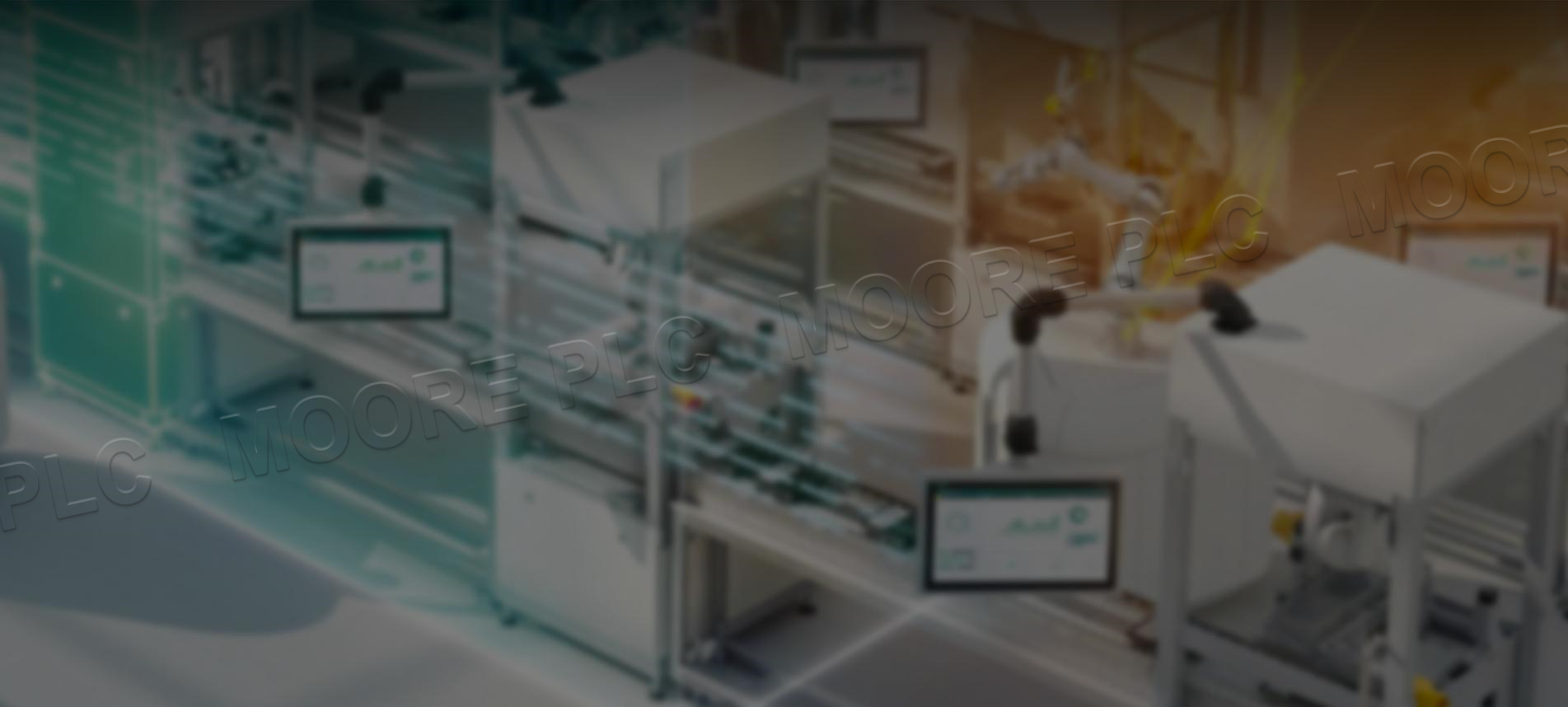
Moore Automation Limited got the trust of customers worldwide. Relying on reliable quality of parts and components, a wide range of discontinued parts services. We have successfully achieved this in more than 3,000 customers worldwide. The following is an excerpt from a long-term customer who has a partnership with us.

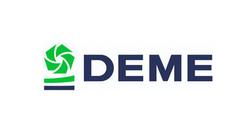
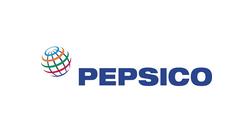

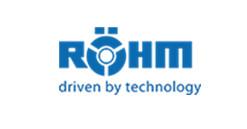
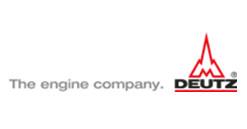
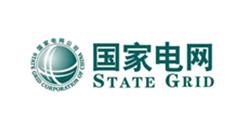
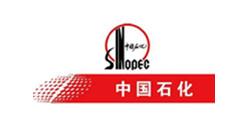
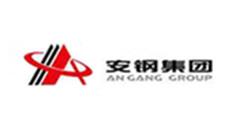




Moore Automation gives you access to the global supply of automation parts





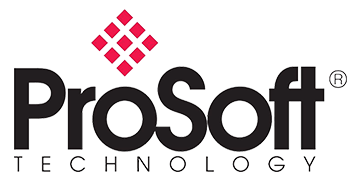










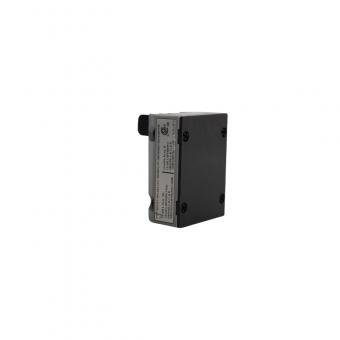 330100-90-05
330100-90-05
The Bently Nevada 330100-90-05 Proximitor Sensor commonly employed in industrial applications, especially those involving rotating machinery, to monitor and diagnose potential issues. Benefits: Reliable: Provides consistent and accurate measurements. Cost-Effective: Can help prevent costly equipment failures. Easy to Install: Simple installation process. Versatile: Suitable for a wide range of applications. Key Features of the Bently Nevada 330100-90-05 Proximitor Sensor Precision: Delivers precise measurements for vibration detection and analysis. Non-Contacting: Eliminates wear and tear on the target surface. Durability: Designed to withstand harsh industrial environments. Wide Temperature Range: Operates in various temperature conditions. Compact Design: Small and easy to install. Common Applications: Rotating Machinery Monitoring: Detects and diagnoses faults in pumps, fans, turbines, and compressors. Vibration Analysis: Identifies potential failures and optimizes machine performance. Process Control: Monitors and controls the position of moving parts. Specifications (may vary depending on specific model): Specification Value (May Vary) Measurement Range 0 to 1.27 mm Accuracy ±1 micron or better Frequency Response 0 to 10 kHz Output Signal Voltage Mounting Type Flush or non-flush Cable Length 90 meters Protection Class IP67 (waterproof and dustproof) Sensor Type Eddy current Target Material Non-magnetic materials (e.g., metals)
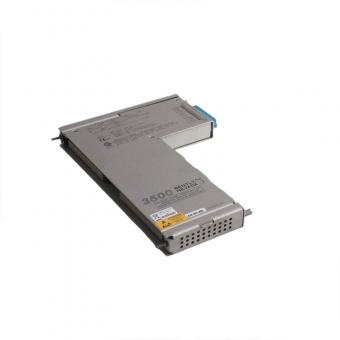 136703-01
136703-01
The Bently Nevada 136703-01 Discrete Internal Barrier I/O Module acts as a barrier between the system's internal circuitry and external field devices, ensuring the integrity of the system and protecting personnel from electrical hazards. Key Features: Discrete I/O: Provides channels for both digital inputs and outputs, allowing for the connection of various field devices. Internal Barrier: Isolates the system's internal circuitry from external field devices, enhancing safety and reliability. Flexible Configuration: Can be configured to suit different system requirements and applications. Rugged Construction: Designed to withstand harsh industrial environments. Compatibility: Seamlessly integrates with Bently Nevada vibration monitoring systems. Applications: Field Device Interfacing: Connects sensors, switches, and other field devices to the vibration monitoring system. Control Signals: Provides output signals to control external devices or systems. Alarm Activation: Triggers alarms based on specific input conditions. Data Acquisition: Collects data from field devices for analysis and monitoring. Benefits: Enhanced Safety: Protects personnel and equipment from electrical hazards. Improved Reliability: Reduces the risk of system failures due to external interference. Flexibility: Can be adapted to various applications and system configurations. Cost-Effective: Provides a reliable and affordable solution for I/O requirements.
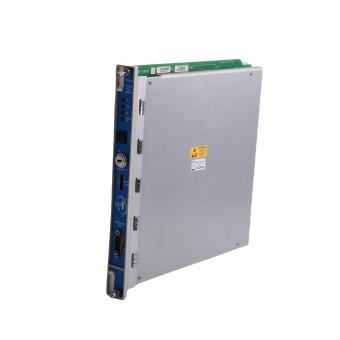 3500/22M 138607-01
3500/22M 138607-01
Product Overview: The Bently Nevada 3500/22M 138607-01 Transient Data Interface (TDI) Module is part of the 3500 series of machinery protection and monitoring systems. It serves as the primary interface for collecting and transmitting transient data from rotating machinery and other critical equipment, enabling advanced condition monitoring. Key Features: Transient Data Capture: Captures high-resolution data during machine events such as startups, shutdowns, or any unusual behavior for detailed analysis. System Communication: Acts as the interface between the 3500 system and Bently Nevada System 1, enabling real-time data transfer for advanced diagnostics. Dual Redundancy: Offers an option for redundant configurations to enhance system reliability and uptime. Modular Design: Easily integrates with other 3500 modules, allowing for flexible configuration based on specific application needs. Applications: Rotating Machinery Monitoring: Ideal for use in industries such as power generation, oil and gas, and heavy manufacturing, where real-time machinery health data is critical. Critical Equipment Protection: Suitable for turbines, compressors, and motors to prevent equipment failures through early fault detection.
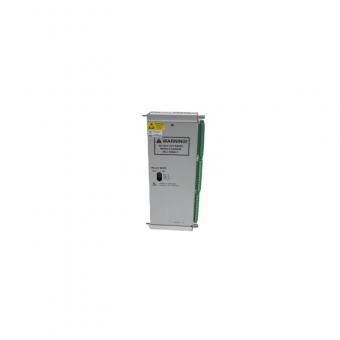 149992-01
149992-01
The Bently Nevada 149992-01 Spare 16-Channel Relay Output Module offers 16 independently programmable relay outputs that can be used to trigger various actions or alarms based on specific vibration parameters. Key Features: 16 Programmable Relay Outputs: Provides flexibility for controlling multiple devices or systems. Customizable Logic: Each relay can be configured with specific voting logic and alarm drive conditions. Reliable Operation: Ensures consistent and dependable performance in demanding industrial environments. Compatibility: Designed to seamlessly integrate with Bently Nevada vibration monitoring systems. Spare Part: Serves as a replacement module for damaged or worn-out units. Applications: Machine Shutdown: Triggering emergency shutdowns for equipment exceeding vibration thresholds. Alarm Activation: Initiating visual or audible alarms to alert operators of abnormal conditions. Process Control: Controlling external devices or systems based on vibration data. Data Logging: Activating data recording functions for specific vibration events. Specifications (may vary depending on specific model): Specification Value (May Vary) Number of Relays 16 Contact Type Dry contact relays Contact Rating Varies (consult datasheet) Input Voltage Varies (consult datasheet) Output Voltage Varies (consult datasheet) Mounting Type Rack-mounted Dimensions Varies (consult datasheet) Weight Varies (consult datasheet) Operating Temperature Varies (consult datasheet) Humidity Varies (consult datasheet) Vibration Resistance Varies (consult datasheet) Shock Resistance Varies (consult datasheet) EMC Compliance Varies (consult datasheet) Certification Varies (consult datasheet) Benefits: Enhanced System Reliability: Ensures continuous operation and prevents unexpected downtime. Improved Safety: Helps safeguard personnel and equipment by timely detection of abnormal conditions. Optimized Efficiency: Enables proactive maintenance and reduces equipment failures. Cost-Effective: Provides a reliable and affordable spare part for Bently Nevada systems.
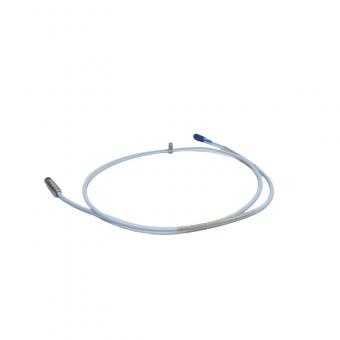 330101-00-12-10-02-05
330101-00-12-10-02-05
Key Features: Probe Diameter: 8 mm Probe Length: 12 ft (3.66 m) System Compatibility: Compatible with the Bently Nevada 3300 XL series systems, adaptable to a variety of machinery monitoring systems Measurement Range: Provides precise non-contact shaft displacement and vibration measurements Environmental Adaptability: Designed for harsh industrial environments with resistance to oil, corrosion, and high temperatures Connector Type: Factory-assembled connector for high reliability and easy installation Suffix (05): Specific configuration code that identifies cable and connector options Application Scenarios: This probe is widely used for vibration and shaft displacement monitoring systems in rotating machinery such as turbines, compressors, and pumps, providing real-time machinery condition monitoring to prevent equipment failures and unexpected shutdowns.
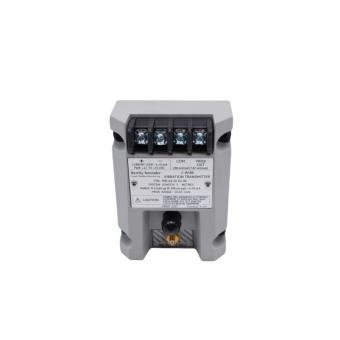 990-04-50-02-00
990-04-50-02-00
The Bently Nevada 990-04-50-02-00 990 Vibration Transmitter is part of the Bently Nevada 990 Series of transmitters, designed to convert vibration signals from a sensor into a 4-20 mA output signal that can be integrated into control systems for real-time monitoring of machinery health. This vibration transmitter is typically used in industrial settings for equipment such as pumps, motors, fans, compressors, and other rotating machinery. Key Features: The 990 Vibration Transmitter converts vibration signals into a 4-20 mA output, which is a standard signal used in industrial process control systems. This output can be connected to programmable logic controllers (PLCs), distributed control systems (DCS), or other control systems for continuous monitorin The transmitter measures vibration in terms of velocity or displacement and sends the data to the control system. It provides an effective solution for continuous, real-time vibration monitoring, helping operators detect early signs of equipment issues such as misalignment, imbalance, or bearing failures. Built to operate in harsh industrial environments, the 990-04-50-02-00 is designed to be highly durable and reliable. Its construction enables it to withstand vibration, temperature extremes, moisture, and other environmental factors common in industrial applications. Applications: Rotating Machinery Monitoring: The 990 Vibration Transmitter is commonly used in pumps, motors, compressors, fans, and blowers to monitor and protect against vibration-related issues. Predictive Maintenance: By providing continuous vibration data, the transmitter supports predictive maintenance strategies. It helps identify abnormal vibration patterns early, enabling maintenance teams to address issues before they lead to equipment failure. Process Control Integration: The 4-20 mA output allows for integration with existing process control systems, ensuring that vibration data is incorporated into overall equipment monitoring and control.
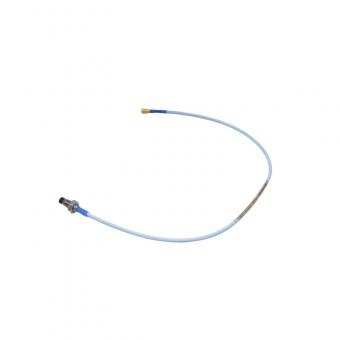 330101-00-08-05-02-05
330101-00-08-05-02-05
The Bently Nevada 330101-00-08-05-02-05 is part of the 3300 XL 8mm Proximity Probe series. This probe is designed to measure the distance between a probe tip and the surface of a conductive target. It is commonly used in various industrial applications, such as monitoring the vibration and position of rotating machinery, including turbines, compressors, and motors. Key Features: Sensing Range: The probe is designed for a nominal linear sensing range of 80 mils (2 mm). Diameter: The probe has an 8mm diameter, which is the standard size for proximity probes in this series. Cable Length: The probe comes with an integral cable length of 8 feet (2.44 meters), with a 5-foot (1.52 meters) probe cable and a 3-foot (0.91 meters) extension cable. Temperature Range: It can operate within a wide temperature range, typically from -35°C to +177°C (-30°F to +350°F), depending on the specific model and application. Compatibility: The probe is compatible with the 3300 XL series proximitor sensors and can be used in conjunction with these sensors to provide accurate and reliable measurements. Mounting: The probe is typically mounted using a threaded housing that allows it to be securely installed in various industrial environments. Applications: It is widely used in industries such as power generation, oil and gas, and other heavy industries where precise monitoring of machinery is critical. Ordering Information: Part Number: 330101-00-08-05-02-05 The part number breaks down as follows: 330101: Model series number 00: No connector protector 08: 8-foot cable length 05: 5-foot probe cable length 02: 2mm linear range 05: Connector option
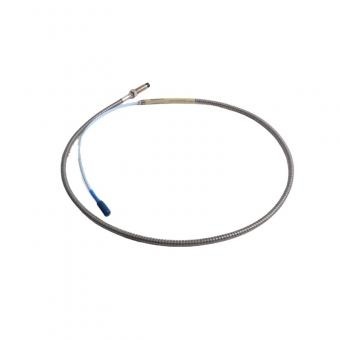 330102-00-13-10-02-00
330102-00-13-10-02-00
Product Description: The Bently Nevada 330102-00-13-10-02-00 is a high-precision 8 mm eddy current proximity probe designed for industrial vibration and displacement monitoring. Part of the renowned 3300 XL series, this probe is engineered to deliver reliable, non-contact measurement of rotating machinery components such as shafts, bearings, and gears in critical applications like turbines, compressors, and pumps. Specifications Parameter:Details Model Number:330102-00-13-10-02-00 Probe Diameter:8 mm Operating Frequency:1.0 kHz to 10 kHz (typical) Linear Range:±1.25 mm (±50 mils) from null point Sensitivity:200 mV/mil (7.87 V/mm) ±5% Output Signal:AC voltage proportional to gap distance (peak-to-peak) Temperature Range:Operating: -40°C to +177°C (-40°F to +350°F) Cable Length:Standard 9 m (30 ft); customizable options available Power Supply:Requires -18 VDC to -24 VDC from compatible 3300 XL monitor Environmental Rating:IP67 (dust/water resistant) Certifications:ATEX/IECEx (optional for hazardous areas) Frequently Asked Questions (FAQ) Q1: What machinery is this probe typically used for? A: It is widely used in turbines, compressors, motors, and generators to monitor shaft vibration, eccentricity, and thrust position for predictive maintenance and fault detection. Q2: How do I ensure accurate installation? A: Follow Bently Nevada’s guidelines for gap voltage adjustment (typically set to -10 VDC at the nominal gap). Use alignment tools to avoid misplacement and ensure proper cable routing. Q3: Can this probe operate in high-temperature environments? A: Yes, it functions reliably up to +177°C (+350°F). For extreme temperatures, ensure cables and connectors are rated accordingly.
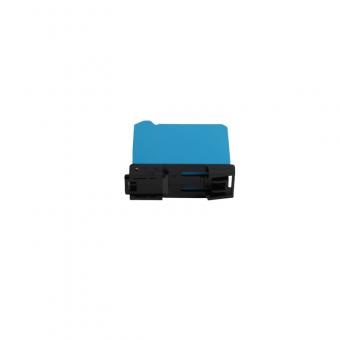 330180-X1-CN MOD:145193-09
330180-X1-CN MOD:145193-09
Here are some frequently asked questions about the Bently Nevada 330180-X1-CN MOD:145193-09 Proximity Sensor, presented in a table format: Benefits: High Accuracy: Provides precise measurements for accurate vibration analysis. Wide Temperature Range: Can operate in harsh environments. Rugged Construction: Built to withstand industrial conditions. Easy Installation: Simple to mount and integrate into existing systems. Reliable Performance: Known for its durability and consistency. Key Features Feature Specification Measurement Range 0 to 1.27 mm Accuracy ±1 micron Operating Temperature -40°C to 120°C Frequency Response 0 to 10 kHz Output Signal Voltage Mounting Type Flush Cable Length 10 meters Protection Class IP67 Dimensions 32 mm x 32 mm x 40 mm Weight 100 grams Frequently Asked Questions Question Answer What is the Bently Nevada 330180-X1-CN MOD:145193-09 Proximity Sensor used for? This sensor is used to measure the displacement of a vibrating surface. It is commonly used in industrial applications to monitor the health of rotating machinery. What is the accuracy of the sensor? The sensor has an accuracy of ±1 micron. What is the operating temperature range of the sensor? The sensor can operate in temperatures from -40°C to 120°C. What is the frequency response of the sensor? The sensor has a frequency response of 0 to 10 kHz. What is the output signal of the sensor? The sensor outputs a voltage signal. How is the sensor mounted? The sensor is designed for flush mounting. What is the cable length of the sensor? The sensor has a cable length of 10 meters. Is the sensor waterproof? Yes, the sensor has an IP67 protection rating, which means it is waterproof and dustproof. What are the dimensions of the sensor? The sensor has dimensions of 32 mm x 32 mm x 40 mm. What is the weight of the sensor? The sensor weighs 100 grams.
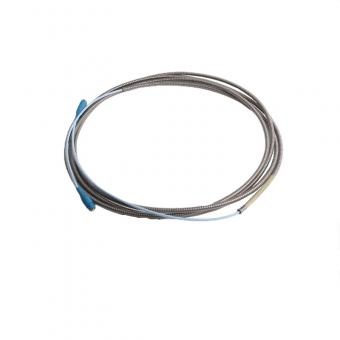 330130-040-03-00
330130-040-03-00
Product Description The Bently Nevada 330130-040-03-00 is a high-performance extension cable designed for use with Bently Nevada’s 3300 XL series vibration monitoring systems. This cable ensures reliable signal transmission between proximity probes, accelerometers, or other sensors and the monitoring equipment . It is engineered to maintain signal integrity in industrial environments with electromagnetic interference (EMI), temperature extremes, and mechanical stress. Specifications Model Number:330130-040-03-00 Cable Type:Shielded coaxial cable (double-braided shielding) Length:10 meters (standard; verify "040" in model for exact length configuration) Conductor Gauge:20 AWG Impedance:50 Ω nominal Voltage Rating:300 VAC/DC Temperature Range:Operating: -40°C to +120°C (-40°F to +248°F) Jacket Material:PTFE (Teflon®) or equivalent for high-temperature resistance Connectors:Male BNC connector (probe end) and terminal block/pigtail (monitor end) Certifications:Compliant with API 670 standards for machinery protection systems Shielding Effectiveness:>90 dB EMI/RFI protection Frequently Asked Questions (FAQ) Q1: What is the maximum recommended cable length for the 3300 XL system? A: The total system cable length (probe + extension) should not exceed 500 meters (1,640 ft) to avoid signal degradation. Consult Bently Nevada guidelines for specific setups. Q2: Can this cable be used with non-3300 XL sensors? A: Yes, if the sensor’s electrical specs (impedance, connector type) match. Ensure compatibility with the monitoring system. Q3: How do I prevent signal noise in long cable runs? A: Use shielded conduits, avoid routing near high-voltage equipment, and ensure proper grounding of the cable shield at the monitor end only.
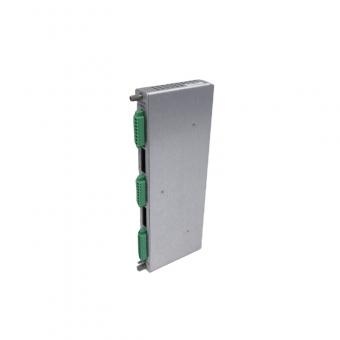 140471-01
140471-01
The Bently Nevada 140471-01 I/O Module is part of the 3500/42M Proximitor/Seismic Monitor Series, a high-performance, four-channel monitoring system designed for machinery protection and condition monitoring. This module is used to interface with proximity probes and seismic transducers to monitor vibration, shaft position, and other critical parameters in rotating equipment. Key Features: Four-Channel Monitoring: The 140471-01 is a four-channel monitor, capable of accepting input from up to four proximity or seismic transducers. It provides continuous machinery protection and offers real-time monitoring of vibration and position data. Input from Proximity and Seismic Transducers: The module is compatible with both proximity probes (for measuring shaft vibration and position) and seismic transducers (for measuring absolute vibration in machine cases or structures). This versatility makes it ideal for monitoring various machinery types and configurations. Signal Conditioning: The input signals from the transducers are conditioned to provide vibration, position, and keyphasor measurements. The conditioning process filters and amplifies the signals to ensure accurate and reliable data for machinery diagnostics. The Bently Nevada 140471-01 I/O Module is a critical component in comprehensive machinery monitoring systems, helping operators maintain the integrity and performance of their rotating machinery through real-time data and alarm systems.
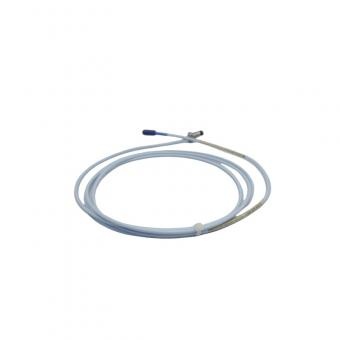 330101-00-08-20-02-05
330101-00-08-20-02-05
The Bently Nevada 330101-00-08-20-02-05 is part of the 3300 XL 8 mm Proximity Transducer System, which is widely used for machinery vibration and position monitoring in industrial applications. The 3300 XL series provides advanced performance in eddy current proximity transducers, designed to measure the distance between the probe tip and a conductive surface, commonly used in rotating machinery such as turbines, compressors, motors, and pumps. Eddy Current Technology: The 3300 XL proximity transducer system uses eddy current technology to non-invasively measure the gap between the transducer tip and a conductive target. This is ideal for real-time monitoring of vibration or shaft position in rotating machinery. Interchangeability: The system provides complete interchangeability of probes, extension cables, and proximitor sensors. This eliminates the need for individual component matching or bench calibration, simplifying maintenance and reducing machine downtime. Temperature Stability: The 3300 XL transducers offer excellent temperature stability, maintaining measurement accuracy even in environments with significant temperature variations, making it suitable for a wide range of industrial applications. Ordering Information Breakdown: 330101: Model number of the 3300 XL 8 mm proximity transducer. 00: Standard probe configuration. 08: Total system length of 8 meters (probe + extension cable). 20: Extension cable length of 20 feet (approx. 6 meters). 02: Standard 2 mm linear sensing range. 05: Connector and mounting options. Applications: Vibration Monitoring: Critical for rotating machinery such as turbines, compressors, motors, and pumps, where monitoring shaft vibration can prevent costly breakdowns. Shaft Position Measurement: Used to detect radial or axial shaft displacement, ensuring machinery operates within the designed parameters. Machinery Protection: Provides real-time feedback on the health of the machine, triggering alarms or protective shutdowns if vibration levels become excessive.
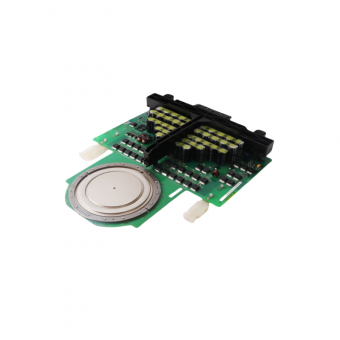 3BHB003154R0101 5SXE 04-0150/3BHL000390P0104 5SHX 1960L0004
3BHB003154R0101 5SXE 04-0150/3BHL000390P0104 5SHX 1960L0004
The ABB 3BHB003154R0101 5SXE 04-0150/3BHL000390P0104 5SHX 1960L0004 IGCT Module Board is an advanced power semiconductor module. Key Features: Integrated Gate-Commutated Thyristor (IGCT): IGCTs are high-power semiconductor devices designed for applications that require efficient power control and high reliability. They combine the advantages of both GTO (Gate Turn-Off Thyristor) and IGBT (Insulated Gate Bipolar Transistor) technologies. High Voltage and Current Rating: This module is typically used in high-voltage applications, such as medium to high-power converters and inverters. It can handle significant current and voltage levels, making it suitable for industrial applications like power generation, drives, and traction systems. Compact Design: The IGCT module board is designed for compactness, ensuring that it can be integrated into various systems without taking up excessive space. Technical Specifications: Part Numbers: 3BHB003154R0101 and 5SXE 04-0150/3BHL000390P0104. IGCT Part Number: 5SHX 1960L0004, which indicates the specific IGCT device used within the module. Voltage and Current Rating: Specific ratings depend on the application, but IGCTs are generally capable of handling thousands of volts and amperes. Operating Temperature: The module is designed to operate efficiently within a broad temperature range, which is critical for maintaining performance in various environmental conditions.
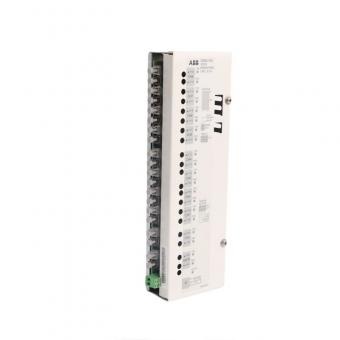 NDBU-95
NDBU-95
ABB NDBU-95 DDCS Branching Unit Part Number: NDBU-95C Model Type: 6398 5350 B Type: DDCS (Digital Distributed Control System) Branching Unit Key Features: Channels: 9-channel branching unit, allowing for multiple connections within a digital control system. Fiber Optic Communication: Utilizes fiber optic technology for high-speed, reliable communication, reducing electromagnetic interference and signal degradation. Branching Function: Provides branching capability for digital communication lines, essential for distributing signals across different parts of the control system. Specifications: Dimensions: Inches: 4.0" x 2.0" x 11.0" Centimeters: 10.2 cm x 5.1 cm x 27.9 cm Weight: Pounds: 1 lbs 9.0 oz Kilograms: 0.7 kg
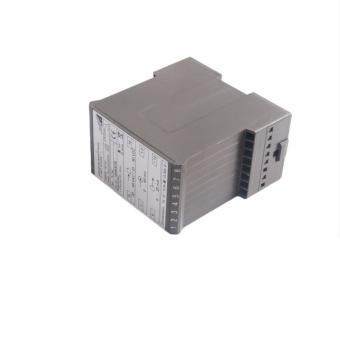 3BHB000528R0100 TV742
3BHB000528R0100 TV742
The ABB 3BHB000528R0100 TV742 is a transducer designed for converting voltage signals into current signals, specifically converting a 0 to 100V input signal into a standard 4 to 20mA output signal. This type of transducer is commonly used in industrial automation and process control systems where signal conversion is necessary to ensure compatibility between different types of equipment and control systems. Key Features: Signal Conversion: Converts a voltage input (0 to 100V) into a current output (4 to 20mA), which is a standard signal type used in many industrial control systems. High Accuracy: Designed for precise signal conversion, ensuring that the output current accurately reflects the input voltage. Robust Design: Built to withstand industrial environments, offering reliable performance in harsh conditions. Compatibility: Suitable for use with various types of sensors and monitoring devices that output voltage signals. Technical Specifications: Input Signal: 0 to 100V DC Output Signal: 4 to 20mA DC Power Supply: Typically requires an external power supply, often in the range of 24V DC, though specific requirements can vary based on the application. Accuracy: High accuracy in the conversion process, with minimal signal distortion or loss. Applications: Process Control: Used in applications where voltage signals from sensors need to be converted to a 4 to 20mA signal for integration into a process control system. Monitoring Systems: Suitable for use in monitoring systems where voltage measurements are taken and need to be transmitted over long distances without signal degradation. Industrial Automation: Commonly used in automation systems where standardization of signal types (like 4 to 20mA) is necessary for system integration.
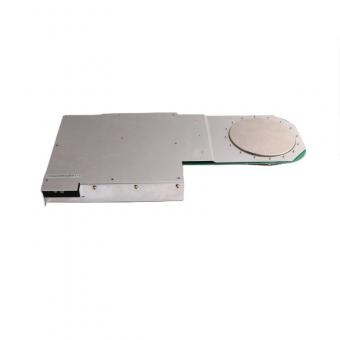 5SHY3545L0003 3BHB004692R0001 GVC732 AE01 3BHB004693R0001
5SHY3545L0003 3BHB004692R0001 GVC732 AE01 3BHB004693R0001
The ABB 5SHY3545L0003, 3BHB004692R0001, GVC732 AE01, and 3BHB004693R0001 are components related to high-power thyristor modules, typically used in industrial applications such as drives, power converters, and other power control systems. These components are part of ABB's extensive range of high-power semiconductor devices designed for reliable and efficient control of electrical energy in demanding environments. Key Components: 5SHY3545L0003: This is the thyristor module itself. Thyristors are semiconductor devices used to control and switch high voltages and currents. The specific characteristics of this module would include high voltage and current handling capabilities, making it suitable for heavy-duty industrial applications. 3BHB004692R0001 (GVC732 AE01): This part number typically refers to a gate driver or control unit associated with the thyristor. The gate driver is responsible for controlling the switching operation of the thyristor, ensuring precise and reliable performance. 3BHB004693R0001: This could be another associated control or auxiliary component within the same system, potentially part of the thyristor's control circuitry or cooling mechanism. Applications: Industrial Drives: Used in variable speed drives where precise control of large motors is required. Power Converters: Employed in power conversion systems to manage and convert high levels of electrical power. HVDC Transmission: Suitable for use in high voltage direct current (HVDC) transmission systems where efficient and reliable power control is essential. Power Grid: Often used in power grid applications for controlling and managing large power flows.
 NTAC-02
NTAC-02
Product Description The ABB NTAC-02 Pulse Encoder Interface is designed to provide reliable communication between pulse encoders and ABB Drives. This interface enables precise position and speed control by translating encoder signals into actionable data for the drive system, ensuring optimal performance in various industrial applications. Detailed Specifications Model Number: NTAC-02 Type: Pulse Encoder Interface Manufacturer: ABB Application: Used with ABB Drives for position and speed feedback Input Voltage: Typically compatible with standard drive voltages (check specifications) Supported Encoder Types: Incremental and absolute encoders (consult documentation for details) Operating Temperature Range: -20°C to +70°C (verify specific conditions) Connection Method: Terminal connections for easy integration Frequently Asked Questions What types of encoders are compatible with the NTAC-02? It supports both incremental and absolute pulse encoders. How is the NTAC-02 installed? Follow the installation guide in the user manual for proper setup and wiring. What troubleshooting steps should I take if the interface fails? Check power supply, verify connections, and ensure correct encoder configuration. Can the NTAC-02 interface multiple encoders? Typically, it interfaces with a single encoder; consult documentation for multi-encoder setups. Where can I find replacement NTAC-02 units? Replacement units can be obtained through authorized ABB distributors or service centers.
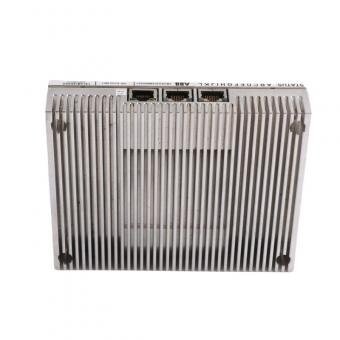 3BHE020455R0001 PPD103 B01
3BHE020455R0001 PPD103 B01
General Information Product ID:3BHE023784R2630 ABB Type Designation: Catalog Description:PP D113 B01-26-111000: AC 800PEC Product Net Depth / Length:145 mm Product Net Height:450 mm Product Net Weight:2.59 kg Product Net Width:100 mm AC 800PECThe high-performance control system formodel-based design The AC 800PEC provides the unique combination of featuresrequired in demanding applications: − Short cycle times down to 100 μs − High processing power− Fast communication and I/O − Programming tools: − System engineering with IEC61131-3 languages using ABB’s Control Builder, either as Compact or Professional version − Product & control development using MATLAB® /Simulink® for model-based design, easily bridging thegap from simulation to implementation − Full integration into ABB’s System 800xA − Innovative and flexible use of FPGAs to include protocolsand application functionality in the devices withoutcreating additional processor load − Optical communication − Industrial grade hardware with no moving parts − Long life cycle, easy upgrading Common Questions: What are the main features of the PPD103 B01? It offers advanced control capabilities, real-time monitoring, and compatibility with a wide range of ABB products. What applications is this control system suitable for? Ideal for industrial automation, process control, and systems requiring precise monitoring and management. How is the PPD103 B01 installed? Installation typically involves mounting in a control cabinet and connecting it to the necessary input/output devices. Refer to the installation manual for detailed steps. What are the communication protocols supported? The system supports multiple industrial communication protocols, ensuring interoperability with existing systems. Where can I find the technical documentation? Technical documentation is available on the ABB website or through authorized ABB distributors.
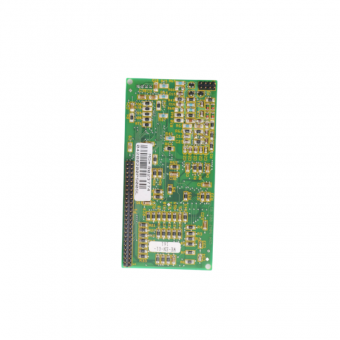 HAFIOFFH10000 WE-EN-01-161
HAFIOFFH10000 WE-EN-01-161
The ABB PHAFIOFFH10000 WE-EN-01-161 is an I/O Input Module designed for use in ABB's automation and control systems. This module is part of ABB's extensive product range that provides reliable input/output capabilities essential for controlling and monitoring various industrial processes. Key Features: Input Channels: The PHAFIOFFH10000 module is designed to accept multiple input signals, which could include analog or digital inputs depending on its configuration. High Reliability: Built to ABB's stringent quality standards, this module ensures reliable performance in demanding industrial environments. Compact and Modular Design: It is designed to fit into standard ABB control system racks, offering a modular and space-efficient solution that allows for easy integration and scalability. Easy Integration: Compatible with other ABB control and automation systems, enabling seamless integration into existing setups. LED Indicators: The module may feature LED indicators for each input channel, allowing for easy status monitoring and troubleshooting. Technical Specifications: Part Number: PHAFIOFFH10000 Model: WE-EN-01-161 Function: I/O input module for receiving and processing input signals in control systems. Input Type: Supports various input types such as analog or digital, depending on the system configuration. Power Requirements: Operates within standard power ranges used in ABB control systems. Environmental Ratings: Designed to operate in typical industrial environments with protections against electrical noise, temperature variations, and other environmental factors.
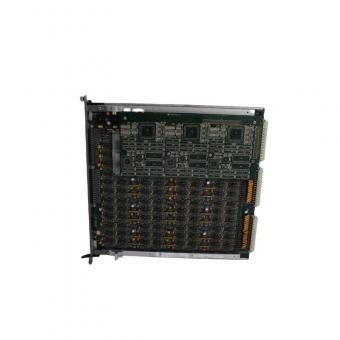 MDO32BNS
MDO32BNS
The ABB MDO32BNS is a 32-channel digital output module used in automation systems to control external devices through digital signals. To ensure proper handling of the MDO32BNS, it must be transported and stored in its original packaging, which should be kept for this purpose. Each channel's output switch features a series/parallel network of six FETs, which provide a 2 out of 3 majority voting system among paths A, B, and C. An LED on the front panel lights up when the switch is closed. Voltage and current monitoring circuits are connected to the switches to feed information to the Latent Fault Detection (LFD) system. This information is relayed to the microcontrollers through dedicated shift registers and opto-isolators, confirming that the output has switched to the desired state and that the line is neither open nor short-circuited.
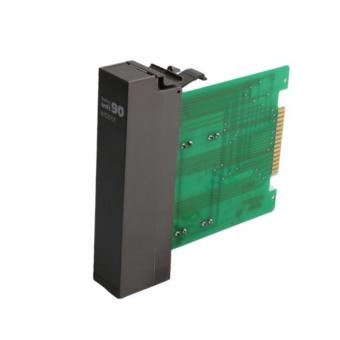 NIDS01
NIDS01
The ABB NIDS01 Digital Station Interface Module is a sophisticated component designed for seamless integration within ABB’s automation and control systems. This module serves as a communication interface, facilitating the connection between digital devices and the control system, enabling efficient data exchange and control for various applications. With its robust design, the NIDS01 supports multiple digital inputs and outputs, ensuring reliable performance in demanding industrial environments. It is engineered for flexibility and scalability, making it suitable for a wide range of applications, including manufacturing, process control, and energy management. The NIDS01 module enhances operational efficiency by providing real-time monitoring and control capabilities, ensuring optimized performance and reliability in automated systems. Description: NIDS01 Digital Station Interface Module Category:PLCs/Machine Control Subcategory:PLC Module/Rack Weight:0.38 lbs Frequently asked questions about the ABB NIDS01 Digital Station Interface Module: 1.What is the primary function of the NIDS01? The NIDS01 Digital Station Interface Module serves as a communication interface that connects digital devices to ABB’s control systems, facilitating efficient data exchange and control. 2.What types of devices can be connected to the NIDS01? The NIDS01 can connect various digital devices, including sensors, actuators, and other automation components, allowing for integrated control and monitoring within industrial applications. 3.How many digital inputs and outputs does the NIDS01 support? The NIDS01 typically supports multiple digital inputs and outputs, providing flexibility for different configurations depending on the application requirements.
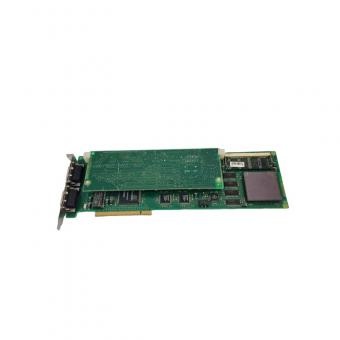 PU516 3BSE013064R1
PU516 3BSE013064R1
Catalog Description: The PU516 is an engineering board designed for PCI bus systems. It features one MB300 and one RS-232 port, compatible with a 5V 32-bit 33MHz PCI bus, and includes 16MB of memory. Exchange Part Number: EXC3BSE013064R1 Long Description: The PU516 Engineering Board is equipped with one MB300 and one RS-232 port, supporting a 5V 32-bit 33MHz PCI bus, along with 16MB of memory. It is commonly used in engineering applications for robust and efficient communication and processing. Note: This part is exempt from the 2011/65/EU (RoHS) directive as per Article 2(4)(c), (e), (f), and (j) of the regulation. For reference, see document 3BSE088609 – EU Declaration of Conformity for the ABB Advant Master Process Control System. Additional Information: Medium Description: Engineering Board - PCI Technical Details: Communication Module Exchange Part Number: EXC3BSE013064R1 Product ID: 3BSE013064R1 ABB Type Designation: PU516
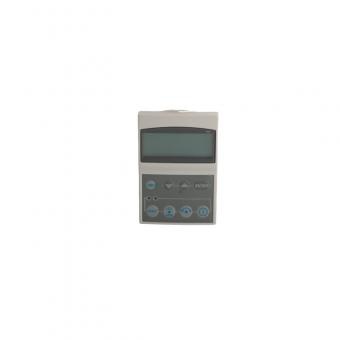 DCS400-PAN-A 3ADT220077R00
DCS400-PAN-A 3ADT220077R00
Brand Name: ABB Package: Original Package Model Number: DCS400-PAN-A Lead time: In Stock Alternate Part Number 3ADT220077R00 Shipping term: UPS DHL TNT EMS Fedex Condition: 100% Original Payment: T/T Quality: Brand New Service: One-Stop Service Dimensions 2.4x1.1x2.8cm Weight 0.11 kg Description DSC400 DC DRIVE KEYPAD Warranty: 12 Months
 CI626A 3BSE005023R1
CI626A 3BSE005023R1
The ABB CI626A 3BSE005023R1 Bus Administrator Board is a vital component in ABB’s automation systems, responsible for managing and controlling communication on the fieldbus. This board ensures efficient data transfer and system reliability, facilitating seamless integration of various devices within the network. Description: CI626A Bus Administrator Board 3BSE005023R1 Specifications: Part:CI626A Category:Drives Subcategory:Drive Board Weight:2.01 lbs Here are some common questions about the ABB CI626A 3BSE005023R1 Bus Administrator Board: 1.Function Q: What is the main function of the Bus Administrator Board? A: It manages and controls communication on the fieldbus, ensuring efficient data transfer and system reliability. 2.Compatibility Q: Which systems or devices is this board compatible with? A: It is typically compatible with various ABB automation systems; please refer to technical documentation for specific details. 3.Installation Requirements Q: What should be considered during installation? A: Follow the installation manual carefully to ensure proper connections and avoid installation errors. 4.Maximum Load Q: What is the maximum load supported by this board? A: Maximum load information is usually found in the technical manual; please consult relevant documents for details. 5.Maintenance Needs Q: Does the Bus Administrator Board require regular maintenance? A: Generally, it does not require frequent maintenance, but periodic checks on connections are recommended to ensure optimal performance.
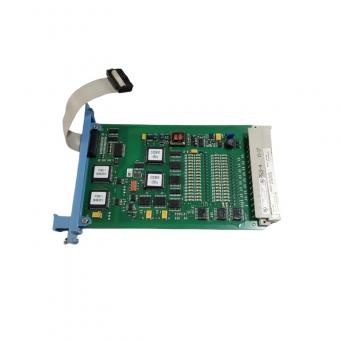 10105/2/1
10105/2/1
The Honeywell 10105/2/1 Fail Safe High-Density Analog Input Module is designed for critical applications where high-density and fail-safe performance are required. This module is used for receiving and processing multiple analog input signals in industrial control systems. The Honeywell 10105/2/1 Fail Safe High-Density Analog Input Module is designed to provide high-density, reliable analog input capabilities in critical industrial applications, ensuring accurate signal processing and system integrity. Key Features: Key Feature Description High-Density Input Supports a large number of analog inputs in a compact form factor for space-efficient installations. Fail Safe Operation Designed for high reliability and to ensure continuous operation even in the event of a fault. Analog Input Receives and processes analog signals for accurate measurement and control. Compatibility Integrates seamlessly with Honeywell control systems and other industrial automation equipment. Robust Design Built to withstand harsh industrial environments and ensure reliable performance.
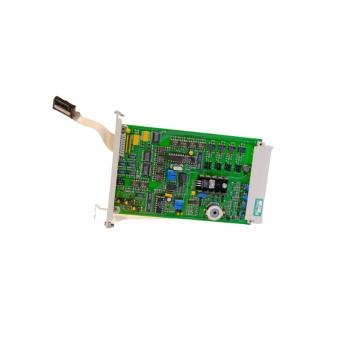 10208/2/1
10208/2/1
The Honeywell 10208/2/1 Relay Contact Output Module is designed for use in industrial control systems, providing reliable relay-based switching capabilities. This module enables the control system to interact with various field devices by activating or deactivating relay contacts, which are typically used to control motors, lights, alarms, and other electrical equipment. Key Features: Relay-Based Output Control: Provides robust switching capabilities for controlling a wide range of electrical devices. High Reliability: Designed for dependable operation in industrial environments, ensuring consistent performance. Compatibility: Integrates seamlessly with Honeywell control systems and other compatible automation equipment. Flexible Application: Suitable for use in diverse applications, including process control, automation, and safety systems. Applications: Process Control: Used to control various field devices such as actuators, valves, and motors in process automation systems. Safety Systems: Integrated into safety systems for emergency shutdowns, alarms, and other critical functions. Building Automation: Suitable for controlling lighting, HVAC systems, and other building management systems. Electrical Specifications: Specification Details Relay Type Electromechanical relay for switching applications. Contact Configuration Typically Single-Pole Single-Throw (SPST) or Single-Pole Double-Throw (SPDT). Specific details should be referenced in the product datasheet. Rated Voltage Generally rated for standard control voltages, such as 24VDC, 120VAC, or 240VAC. Check the product datasheet for exact ratings. Contact Rating Designed to handle specific current and voltage ratings for switching purposes. Coil Voltage Typically matches the control system voltage. Specific coil voltage should be confirmed in the product datasheet.
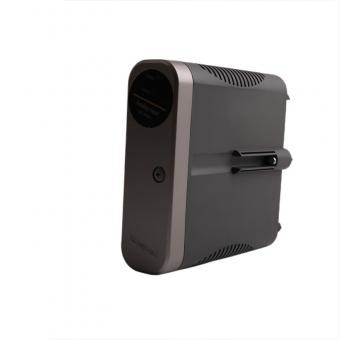 8C-PAIN01 51454356-175
8C-PAIN01 51454356-175
The Honeywell 8C-PAIN01 51454356-175 is an Analog Input Module designed to interface with various types of analog signals within Honeywell's control systems. This module is integral to process control environments, allowing the system to monitor and manage multiple analog inputs from field devices such as sensors and transmitters. Applications: Process Control: Ideal for monitoring and controlling process variables in industries such as oil & gas, chemicals, and manufacturing. Environmental Monitoring: Used in systems that track environmental conditions like temperature, humidity, and air quality. Safety Systems: Integrates into safety systems where precise monitoring of critical parameters is essential. Here is the "Key Features" section presented in the form of a table: Key Feature Description Multiple Input Channels Supports multiple analog input channels for monitoring various process parameters. High Accuracy Ensures precise signal processing for reliable control performance. Compatibility Seamlessly integrates with Honeywell control systems for flexible configuration and expansion. Signal Types Interfaces with a wide range of analog signals, including 4-20mA and 0-10V.
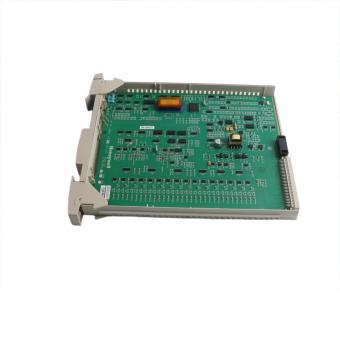 51304754-150 MC-PAIH03
51304754-150 MC-PAIH03
The Honeywell 51304754-150 MC-PAIH03 is a High-Level Analog Input Processor module designed for processing analog signals in industrial control systems. This module is used for high-precision measurement and data acquisition from various analog input sources. The Honeywell 51304754-150 MC-PAIH03 High-Level Analog Input Processor module is designed to provide high precision and reliable processing of high-level analog signals, making it suitable for use in critical and demanding industrial applications. Key Features: Key Feature Description High-Level Analog Input Processes high-level analog signals for accurate measurement and control. High Precision Provides high precision in analog signal processing, suitable for critical applications. Wide Input Range Handles a broad range of input signals, accommodating diverse industrial needs. Compatibility Integrates with Honeywell control systems for seamless data acquisition and system integration. Robust Performance Designed for reliable performance in demanding industrial environments.
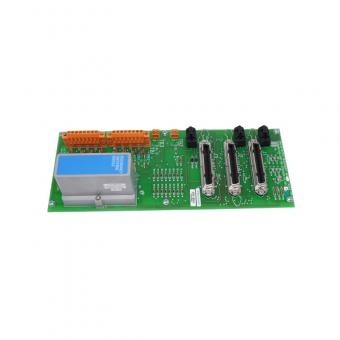 MC-TAOX12 51304335-125
MC-TAOX12 51304335-125
The Honeywell MC-TAOX12 (part number 51304335-125) is an Analog Output Field Termination Assembly (FTA) designed to support redundancy in Honeywell's control systems. This module is used to interface field devices with the control system, providing reliable and accurate analog output signals. The redundancy feature enhances system reliability by allowing the system to continue functioning even if one component fails. Key Features: Redundant Analog Output Support: Ensures continuous operation by providing redundancy, minimizing downtime in case of a failure. High Accuracy: Delivers precise analog output signals to field devices, ensuring accurate control and monitoring. Compatibility: Seamlessly integrates with Honeywell’s distributed control systems (DCS) for enhanced system functionality. Robust Design: Built for reliable performance in industrial environments. Applications: Industrial Process Control: Used in various industrial applications requiring reliable and precise analog output signals for process control. Redundant System Designs: Ideal for systems where redundancy is critical to maintain continuous operation in case of component failure. Specifications: Analog Output Specifications: Specification Details Number of Channels Typically 12 channels per FTA. Signal Type Analog output signals (e.g., 4-20mA). Redundancy Support Yes, designed to support redundant output configurations. Resolution High-resolution output for precise control. Specific details should be referenced in the product datasheet. Accuracy Designed to provide accurate signal output to ensure reliable process control.
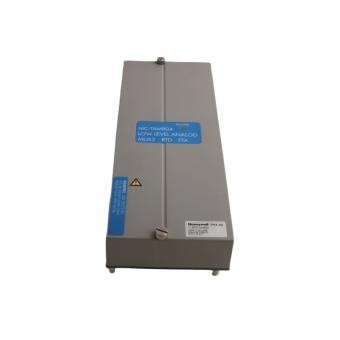 MC-TAMR04 51305907-175
MC-TAMR04 51305907-175
Product Description: The Honeywell MC-TAMR04 (51305907-175) is a low-level analog input multiplexer module designed for use in Honeywell's process control systems. It is a crucial component in distributed control systems (DCS), providing the functionality of switching and multiplexing low-level analog input signals. The module enables the control system to efficiently handle multiple sensor inputs, such as temperature, pressure, and other process variables, by routing them to the appropriate input channels. This module is ideal for industries that require precise and reliable measurement and control, including chemical, oil & gas, power generation, and manufacturing industries. Its ability to multiplex multiple low-level analog signals helps in optimizing the usage of system resources and simplifies wiring, making it an essential part of process monitoring and control applications. Specifications General Model Number: MC-TAMR04 Part Number: 51305907-175 Type: Low-Level Analog Input Multiplexer Electrical Input Voltage: Nominal: 24 VDC Operating Range: 18–32 VDC Signal Types Supported: Low-level analog signals (e.g., voltage, current, resistance) Signal Input Range: Voltage: ±10 V Current: 4-20 mA Resistance: 100-5000 Ω Power Consumption: Designed for low power consumption Output Type: Routes signals to DCS for processing Mechanical Dimensions:30.5x12x7cm Weight: 0.6kg Frequently Asked Questions (FAQ) 1. What is the primary function of the Honeywell MC-TAMR04 module? The MC-TAMR04 module multiplexes low-level analog input signals (such as voltage, current, and resistance) to the control system, allowing for efficient monitoring and processing of multiple input signals. 2. Which signals does this module support? The module supports low-level analog signals including voltage (±10 V), current (4-20 mA), and resistance (100-5000 Ω). 3. What is the operating voltage for the MC-TAMR04 module? The module operates with a nominal input voltage of 24 VDC, with an operating voltage range of 18–32 VDC.
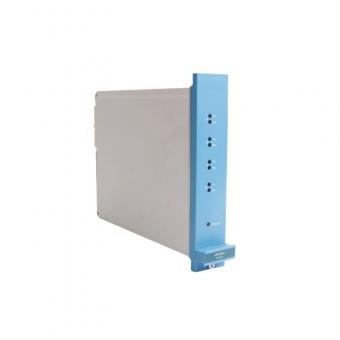 FX-USI-0002
FX-USI-0002
The FX-USI-0002 is a module used in Honeywell’s Safety Manager System. It serves as a replacement for the FE-USI-0002, FC-USI-0002, and FC-USI-0001 modules. The FX-USI-0002 module is not supported by Safety Manager systems running software versions released before R140.1. It is strongly recommended to upgrade any Safety Manager systems on earlier releases to the recommended software version. If upgrading is not possible in the near term, users should ensure they have sufficient spare parts available in case an FE-USI-0002, FC-USI-0002, or FC-USI-0001 module fails. Using the FX-USI-0002 Module: 1.The FX-USI-0002 can serve as a replacement for the FE-USI-0002, FC-USI-0002, and FC-USI-0001 modules. 2.It can be used on-line to replace any of these modules. 3.It will function as a direct replacement for the FE-USI-0002, FC-USI-0002, and FC-USI-0001 modules. 4.It can operate alongside other FE-USI-0002, FC-USI-0002, and FC-USI-0001 modules in a redundant Safety Manager Controller. 5.It is compatible only with Safety Manager software releases R140.1 and later.
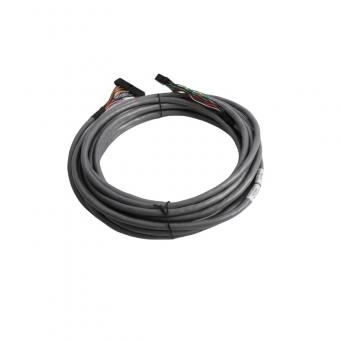 FS-SICC-0001/L20
FS-SICC-0001/L20
The FS-SICC-0001/L20 is a system interconnection cable used to connect Honeywell control systems to Field Termination Assemblies (FTAs). It enables secure transmission of data and signals between system components. Non-Safe Isolated 24 V DC Input Channels The Field Termination Assembly (FTA) module TIDI-1624 acts as an interface between the system interconnection cable (SICC-0001/Lx) and external field wiring through screw terminals. This module provides sixteen non-safe isolated 24 V DC input channels. Non-Safe Dry Digital Output FTA (8 Channels, NO/NC) The Field Termination Assembly (FTA) module TRO-0824 serves as the interface between the system interconnection cable (SICC-0001/Lx) and external field wiring via screw terminals. It features eight non-safe potential-free relay changeover contacts (NO/NC). The energized state of the relay is indicated by an LED on the module. Up to eight channels can be connected to the TRO-0824 using the system interconnection cable (SICC-0001/Lx).
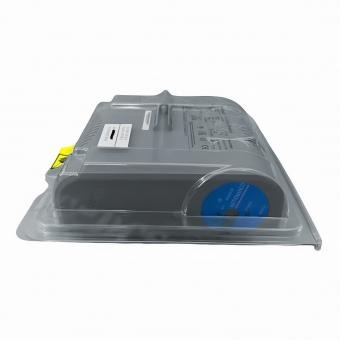 8C-PCNT03
8C-PCNT03
The Honeywell 8C-PCNT03 is part of the Series 8 C300 Controller, which is a key component of Honeywell's Experion Process Knowledge System (PKS). The C300 Controller provides advanced process control and automation capabilities, handling continuous and batch processing tasks. It is known for its flexibility, scalability, and high performance in industrial automation environments, including oil and gas, chemical, and power industries. Key Specifications: Manufacturer: Honeywell Model Number: 8C-PCNT03 Controller Type: C300 Process Controller Series: Series 8 System: Honeywell Experion PKS (Process Knowledge System) Processor: Advanced multi-processor design for efficient control execution Memory: Sufficient memory capacity for handling large applications and complex control strategies I/O Support: Compatible with various I/O modules, allowing for a wide range of control and automation tasks Key Features: Integrated Process Control: The C300 Controller provides integrated control capabilities, handling both continuous and batch processes. Supports a variety of control strategies, including advanced regulatory control, model-based control, and other complex control algorithms. High Performance: Equipped with a high-speed processor and memory resources, the C300 Controller ensures fast processing of control algorithms and real-time data handling. Ensures minimal latency in communication between field devices and the control system, making it suitable for critical applications. Scalability: The 8C-PCNT03 controller is designed to be scalable, allowing users to expand their system as needed. It supports various process sizes and complexities, from small systems to large-scale industrial applications. Easily integrates additional I/O modules or control processors to meet evolving process requirements. Honeywell Experion PKS Integration: Seamlessly integrates into Honeywell’s Experion PKS environment, providing a unified platform for process control, safety, and automation. Supports integration with other systems like safety instrumented systems (SIS), fire and gas systems, and third-party systems through open communication protocols. Redundancy and High Availability: Designed for mission-critical applications, the C300 controller supports redundancy in both hardware and communication, ensuring continuous operation even in the event of hardware failures. Offers hot-swappable capabilities, which allow maintenance and upgrades without process disruption. Applications: The 8C-PCNT03 C300 Controller is suited for a wide range of industrial applications that require reliable, high-performance process control. Common application areas include: Oil & Gas: Managing complex process units, including refineries, pipelines, and gas processing facilities. Chemical Processing: Ensuring precise control of chemical reactions, mixing, and batch processes. Power Generation: Controlling power plant operations and ensuring efficient energy production. Pharmaceuticals: H...
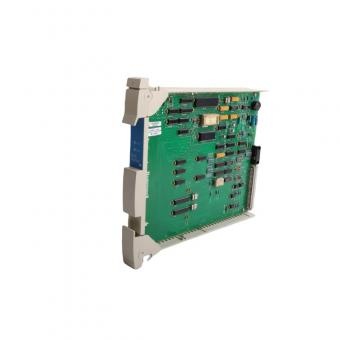 MC-PSIM11 51304362-350
MC-PSIM11 51304362-350
The Honeywell MC-PSIM11 (part number 51304362-350) is a Serial Interface Processor designed to facilitate communication between Honeywell control systems and external devices using serial communication protocols. This module provides essential connectivity features for integrating various peripheral devices into the control system. Applications: Industrial Automation: Facilitates communication between Honeywell control systems and external devices such as sensors, actuators, and other peripherals. Data Acquisition: Used in systems requiring data collection from serial devices for monitoring and control purposes. Key Features: Serial Communication: Provides serial interface capabilities for communication with external devices. Versatile Integration: Supports multiple serial communication protocols, enhancing system flexibility. High Reliability: Engineered for dependable performance in industrial automation environments. Environmental Specifications: Specification Details Operating Temperature Range Typically -20°C to +60°C (-4°F to +140°F). Specific range should be confirmed in the product datasheet. Storage Temperature Range Typically -40°C to +85°C (-40°F to +185°F). Humidity Generally 5% to 95% non-condensing. Protection Class Typically IP20 or higher. Specific class should be confirmed in the product datasheet.
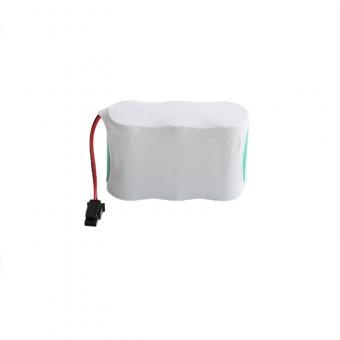 51199942-300
51199942-300
The Honeywell 51199942-300 is a Ni-MH (Nickel-Metal Hydride) battery pack designed for use in various Honeywell equipment and systems. This battery pack provides reliable power solutions, ensuring the proper operation and longevity of Honeywell devices. Key Feature Description Battery Type Nickel-Metal Hydride (Ni-MH) Capacity Provides a substantial capacity to support extended operation of Honeywell equipment. Rechargeable Designed for multiple charge and discharge cycles, offering a long service life. Compatibility Suitable for use with specific Honeywell devices; check compatibility with your equipment. High Energy Density Offers a high energy density, allowing for compact design and efficient power storage.
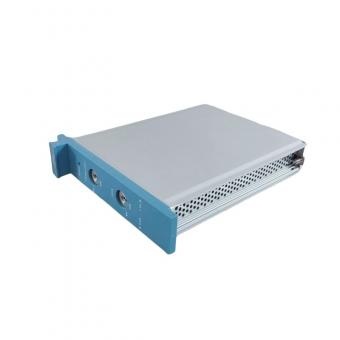 FC-BKMM-0001
FC-BKMM-0001
The Honeywell FC-BKMM-0001 Battery and Key Switch Module is an accessory designed for use with Honeywell's control systems, particularly within industrial automation environments. It typically provides battery backup and a manual control option through the key switch for critical operations in control and monitoring systems. Here's a general overview of the module's key features: Key Features: Battery Backup: Supports backup power to maintain system configurations and essential operations during power interruptions. Ensures that critical data and configurations are retained during a power loss. Key Switch Control: Manual control for enabling/disabling certain system functions, often used in safety-critical applications. The key switch allows authorized personnel to engage or disengage specific modes of operation. Compatibility: Designed for use in Honeywell’s industrial automation systems, such as process control or safety systems. Typically integrated into systems like Experion PKS or other Honeywell control platforms. Form Factor: Compact and designed to be mounted within a control cabinet. Easy to install and replace. Battery Type: The module includes a battery component for power redundancy, ensuring smooth system operation even during electrical failures. Durability: Built to withstand industrial environments, including temperature variations, humidity, and mechanical stresses. This module is particularly useful in environments where system uptime is critical, and manual overrides are necessary for maintenance or safety procedures.
 IS200VAICH1DAA IS200VAICH1D
IS200VAICH1DAA IS200VAICH1D
The GE Mark VI IS200VAICH1DAA is an Analog Input Board used in the GE Mark VI control system, which is designed for managing and monitoring complex processes in power generation and industrial applications. This board is part of the Mark VI system's suite of modules and is crucial for interfacing with analog input signals from various sensors and instruments. Key Features: Analog Inputs: The IS200VAICH1DAA board provides multiple channels for receiving analog input signals. These signals can come from a variety of sensors measuring parameters such as temperature, pressure, level, and flow. High Accuracy: Designed for high-precision measurements, the board ensures accurate signal acquisition and processing, which is critical for maintaining the performance and safety of industrial processes. Signal Conditioning: Includes built-in signal conditioning to handle various types of analog signals, ensuring compatibility with different sensors and providing stable readings. Integration with Mark VI System: Seamlessly integrates with the Mark VI control system, allowing for the efficient transfer of analog data to the control logic and human-machine interfaces (HMIs) for monitoring and control purposes. Modular Design: Part of the modular architecture of the Mark VI system, enabling flexible system configuration and expansion based on application needs. Technical Specifications: Input Channels: Typically supports a set number of analog input channels, with each channel capable of handling a range of signal types and voltages. Signal Range: Designed to accommodate a variety of signal ranges, including standard voltage and current inputs. Communication: Interfaces with the Mark VI control system using standard communication protocols to transfer data from the analog inputs to the control and monitoring systems. Environmental Conditions: Built to operate reliably in the harsh environments typical of power generation and industrial facilities. The GE Mark VI IS200VAICH1DAA Analog Input Board is a vital component in the Mark VI control system, facilitating the acquisition and processing of analog signals to support effective monitoring and control of industrial processes.
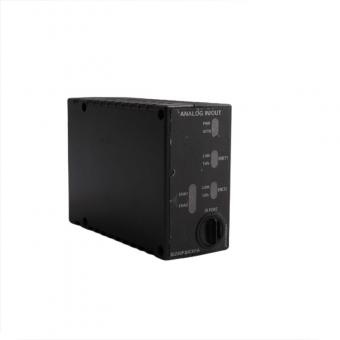 IS220PAICH1A
IS220PAICH1A
The Mark VIe Control Analog I/O Module, catalog number IS220PAICH1A, is designed to be used with the following accessory terminal boards: IS200STAIH1A, IS200STAIH2A, and IS200TBAIH1C. 2. The GE IS220PAICH1A is an analog input/output module used in the Mark VIe control system. It is designed to interface with analog signals from field devices and provide accurate measurement and control within industrial automation and process control systems. 3.How is the IS220PAICH1A module installed and connected? The module is installed in a Mark VIe I/O rack or panel. It connects to field devices through its input terminals and communicates with the control system via the Mark VIe backplane.
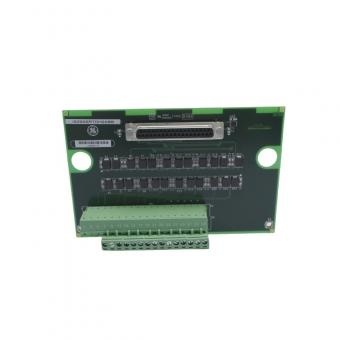 IS200SRTDH2ABB
IS200SRTDH2ABB
The GE Mark VI IS200SRTDH2ABB module is a part of the Mark VIe control system, which is used for advanced control and monitoring of turbines and generators in power generation and industrial processes. The IS200SRTDH2ABB is specifically designed to handle RTD (Resistance Temperature Detector) signals, making it integral to temperature measurement and control within the system. Key Features: RTD Input: The IS200SRTDH2ABB module is designed to interface with RTD sensors, which are commonly used for accurate temperature measurement in industrial applications. Terminals for RTD Connections: It includes terminals for connecting RTD sensors, providing a reliable and straightforward method for integrating temperature measurements into the control system. Signal Processing: The module processes the RTD signals and converts them into a format that can be used by the Mark VIe control system for monitoring and control purposes. High Accuracy: Designed for precise temperature measurement, ensuring accurate and reliable data for critical process control and monitoring applications. Integration with Mark VIe System: Seamlessly integrates with the Mark VIe control system, allowing for easy incorporation of temperature data into the broader control and monitoring framework. Technical Specifications: RTD Sensor Compatibility: Designed to work with standard RTD sensors, such as those with 100 ohm platinum elements (PT100) or other common RTD types. Signal Conversion: Converts RTD resistance measurements into temperature readings compatible with the Mark VIe control system. Connection Terminals: Includes terminals for wiring RTD sensors, allowing for flexible installation and integration. Environmental Conditions: Built to operate reliably in the conditions typical of power generation and industrial environments. The GE Mark VI IS200SRTDH2ABB DRL TERMBD RTD module plays a crucial role in temperature measurement and monitoring within the Mark VIe control system, supporting the efficient and safe operation of turbines, generators, and other critical industrial equipment.
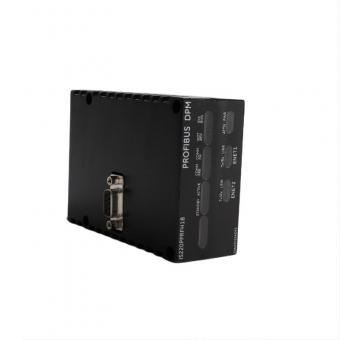 IS220PPRFH1B
IS220PPRFH1B
The GE Mark VI IS220PPRFH1B Master Gateway Module is a key component of the Mark VIe control system, which is widely used for turbine, generator, and plant control in power generation and other industrial applications. This module serves as a communication gateway, facilitating data exchange between the Mark VIe control system and external systems or networks. Key Features: Primary Function: The IS220PPRFH1B is designed to act as a master communication gateway, managing the flow of data between the Mark VIe control system and other networked devices or control systems. High-Speed Communication: The module supports high-speed communication protocols, ensuring efficient and reliable data transfer, which is critical for real-time monitoring and control. Dual Ethernet Ports: Typically equipped with dual Ethernet ports, the IS220PPRFH1B allows for redundant network connections, enhancing the reliability and availability of the control system. Integration with Mark VIe: Seamlessly integrates with the Mark VIe control system, enabling comprehensive control and monitoring capabilities for turbines, generators, and balance of plant (BOP) equipment. Modular Design: Part of the modular design of the Mark VIe system, allowing for flexible configuration and easy maintenance. The module can be hot-swapped without interrupting system operations. Support for Multiple Protocols: The IS220PPRFH1B supports various communication protocols, including Modbus TCP/IP, allowing it to interface with a wide range of devices and systems. Applications: Turbine Control: Used in gas and steam turbine control systems to manage communication between the turbine controller and external systems, such as Distributed Control Systems (DCS) or Supervisory Control and Data Acquisition (SCADA) systems. Generator Control: Facilitates communication between the generator control modules and the rest of the plant's control infrastructure. Plant Control Systems: Integrates with the overall plant control system, enabling centralized monitoring and control of various plant operations. The GE Mark VI IS220PPRFH1B Master Gateway Module is crucial for ensuring smooth and reliable communication within the Mark VIe control system, playing a vital role in the operation and management of critical industrial processes.
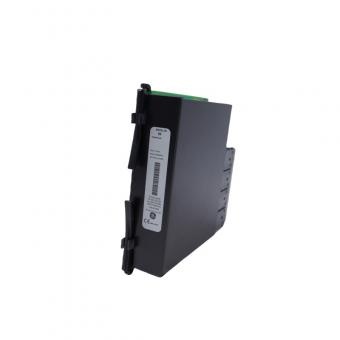 UR-6DH UR6DH
UR-6DH UR6DH
The GE Multilin UR-6DH (UR6DH) Digital I/O Input Output Module is part of the Universal Relay (UR) series, which is designed to provide advanced protection, control, and monitoring solutions for electrical power systems. This module is used to expand the digital I/O capabilities of the UR series relays. Key Features: Digital Inputs and Outputs: The UR-6DH module typically offers a set of digital inputs and outputs that can be configured for various protection and control applications. Configurable Logic: The digital I/O can be programmed through the relay's logic settings to perform custom control schemes or to trigger specific protection functions. High-Speed Operation: Designed for fast response times, ensuring reliable performance in critical power system applications. Flexible Communication: The UR-6DH integrates seamlessly with the communication protocols supported by the Universal Relay series, allowing for easy integration into broader power management systems. Hot-Swappable: The module can be replaced or upgraded without interrupting the operation of the relay, minimizing downtime during maintenance. Applications: Protection Systems: Used in conjunction with other modules in the UR series to provide comprehensive protection for generators, transformers, motors, and other power system components. Automation and Control: Can be used to automate control tasks such as switching operations, interlocking schemes, and status monitoring. Event Recording: Helps in capturing and recording event data for analysis and diagnostics, aiding in the troubleshooting of power system issues.
 UR-7HH UR7HH
UR-7HH UR7HH
The GE Multilin UR7HH Communications Module is part of the Universal Relay (UR) series, which provides advanced protection, control, and monitoring for electrical power systems. The UR7HH module specifically enhances the communication capabilities of the UR relay by allowing it to interface with different communication networks, thereby expanding the relay's integration and data-sharing capabilities within a power management system. Key Features: Multi-Protocol Support: The UR7HH module typically supports multiple communication protocols, such as Modbus, DNP3, and IEC 61850, which are widely used in industrial and utility environments. This makes it adaptable to various system requirements. Ethernet Connectivity: Equipped with Ethernet ports, the UR7HH enables high-speed data transfer and communication over TCP/IP networks, facilitating real-time monitoring and control. Redundant Communication Paths: For increased reliability, the module often supports redundant communication paths, ensuring continuous operation even in the event of a network failure. Seamless Integration: Designed to integrate seamlessly with the GE Multilin UR series relays, the UR7HH module allows these relays to communicate effectively within broader automation and control systems. Advanced Diagnostics: The module may include diagnostic tools to monitor network performance, detect communication issues, and provide alerts, aiding in system maintenance and reliability. Scalability: The modular design of the UR series relays means the UR7HH can be added as needed to meet the specific communication requirements of the application, allowing for scalable system configurations. Applications: Substation Automation: The UR7HH is commonly used in substation automation systems, where it facilitates communication between protection relays, control devices, and SCADA systems. Power Generation and Distribution: In power generation and distribution networks, the module enables the relays to communicate critical data to central control systems, helping operators monitor and control the network efficiently. Industrial Automation: The module is also used in industrial automation systems where protection relays are part of the broader control and monitoring infrastructure. Technical Specifications: Ethernet Ports: Typically includes one or more Ethernet ports for TCP/IP communication. Protocol Support: May include Modbus TCP/IP, DNP3, IEC 61850, and others, depending on configuration. Power Requirements: The module is powered through the UR relay chassis and does not require a separate power supply. Operating Conditions: Designed to operate reliably in the harsh environments typical of electrical substations and industrial facilities. The GE Multilin UR7HH Communications Module is essential for ensuring robust and reliable communication within the UR series relays, making it a key component in the management of modern electrical power systems.
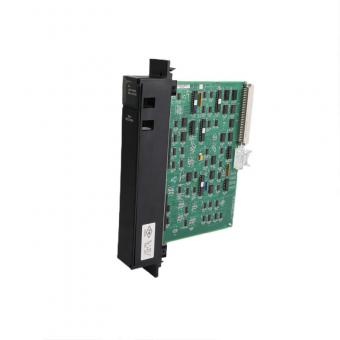 IC697BEM711
IC697BEM711
The GE Series 90-70 IC697BEM711 Bus Expansion Module is a key component within the GE Series 90-70 Programmable Logic Controller (PLC) family. This module is used to expand the capabilities of a 90-70 PLC system by allowing additional I/O racks to be connected to a single CPU, thereby increasing the number of I/O points that can be managed within a control system. Key Features: Bus Expansion Capability: The IC697BEM711 allows for the connection of additional I/O racks to the main CPU rack, enabling the system to accommodate more I/O modules and, consequently, more input/output points. Supports Long Distances: This module is designed to support communication over extended distances between racks, making it suitable for large-scale or distributed industrial control systems. High-Speed Data Transfer: The module provides high-speed communication between the CPU and the additional I/O racks, ensuring that data transfer and control signals are processed efficiently. Compatibility: It is fully compatible with other modules in the GE Series 90-70 family, allowing for easy integration into existing systems. Redundancy Support: The IC697BEM711 can be used in systems where redundancy is required, providing a backup communication path to enhance system reliability. Brand GE Fanuc Series Series 90-70 Manufacturer GE Fanuc / Emerson Automation Product Description Bus Expansion Module (BEM) Part Number IC697BEM711 Series Series 90-70 Slot width Single slot Product type Bus receiver module Part Number IC697BEM711 Mounting location Series 90-70 CPU baseplate Compatibility IC697 PLC Product Description Bus receiver module Status LED indicators Module OK; Last Rack; Bus Active Status LEDs OK, BUS Active, Last Rack Compatibility IC697 PLC No. of Ports Two (2) 25-pin D-shell connectors Slot required 1 Module location Slot 1 Port 1 function: Expansion port towards the CPU
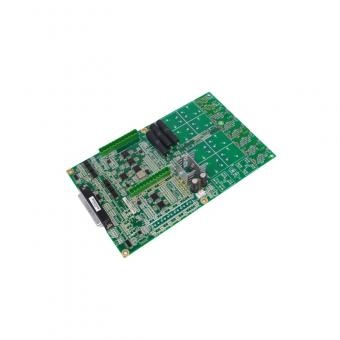 IS210AEAAH3BKE
IS210AEAAH3BKE
The GE Mark VIe IS210AEAAH3BKE Application Control Layer Module is a critical component of the Mark VIe control system, which is used for advanced control and monitoring of turbines, generators, and other critical equipment in power generation and industrial applications. This module plays a key role in handling control logic and applications within the Mark VIe system. Key Features: Application Control: The IS210AEAAH3BKE module is designed to manage and execute application-specific control logic within the Mark VIe system. It supports complex control schemes and automation tasks. High Performance: Provides high-performance processing capabilities to handle demanding control and monitoring applications, ensuring reliable and timely execution of control logic. Integration with Mark VIe: Seamlessly integrates with other components of the Mark VIe control system, including input/output modules, communication modules, and human-machine interfaces (HMIs). Modular Design: Part of the modular architecture of the Mark VIe system, allowing for flexible configuration and expansion based on application requirements. Fault Tolerance: Includes features to enhance system reliability and fault tolerance, ensuring continuous operation even in the event of component failures. Benefits: Advanced Control Capabilities: Enhances the Mark VIe system's ability to handle sophisticated control logic and automation tasks, supporting complex control schemes. Seamless Integration: Integrates smoothly with other Mark VIe components, ensuring cohesive operation within the control system. High Reliability: Designed to provide reliable performance and fault tolerance, ensuring continuous operation and minimizing downtime. The GE Mark VIe IS210AEAAH3BKE Application Control Layer Module is essential for managing and executing advanced control logic within the Mark VIe control system, playing a crucial role in the operation and optimization of turbines, generators, and other critical industrial processes.
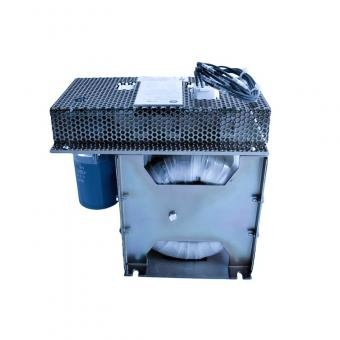 DS2020DACAG2
DS2020DACAG2
Description: DS2020DACAG2 DISCONTINUED BY MANUFACTURER TRANSFORMER ASSEMBLY PLC MODULE GE DRIVE SYSTEMS MARK 5 CONVERTER AC TO DC FACTORY WARRANTY MAY NOT APPLY. RADWELL 2-YEAR WARRANTY INCLUDED Category:Transformers Subcategory:Servo Power Transformer Weight:48.39 lbs General Electric Speedtronic Mark V DS2020DACAG2 is a Power Conversion Module that is a part of the Speedtronic legacy series. The part number DS2020DACAG2 is also known as a transformer assembly. This DACA is capable of converting VAC power to VDC power. Whether or not a battery backup is employed, this module can be used with the primary power source. It can also assist the control system when it loses power by providing it with some additional local energy storage, allowing it to ride through longer. This module does not have the ability to run diagnostics on its own. It can't even keep track of its input and output levels. Those functions will be handled by a separate device within the power distribution system. The DACA should only be used in particular areas where corrosive and combustible materials are not present. It should also only be used between the temperatures of -30 and +65 degrees Celsius, with a non-condensing humidity of 5-95 percent. The DS2020DACAG2 can be floor mounted in the drive cabinet with the help of special brackets and bolts. The DACA has four brackets, and using bolts to assist install it to the floor will guarantee that it is securely mounted.
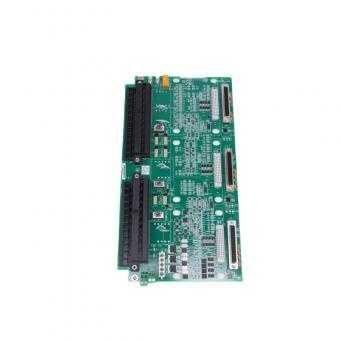 IS200TSVCH2AJE
IS200TSVCH2AJE
The IS200TSVCH2A weighs approximately 2.25 pounds. As a servo-valve terminal board, it is designed to provide a direct interface for actuators and external sensors. Using boards like this one offers the opportunity to reduce or eliminate much of the original instrumentation once used between the system and these external components. This reduces the chance of single-point failures while it increases the potential for system reliability. It also reduces long-term maintenance needs and costs. The GE Mark VI IS200TSVCH2AJE Terminal Board is a specialized component within the GE Mark VI control system. It serves as a terminal board for interfacing with servo-valves and other external actuators and sensors, streamlining the control and monitoring of industrial processes. Key Features: Servo-Valve Interface: The IS200TSVCH2A terminal board is designed to interface directly with servo-valves. This facilitates precise control of actuators in various applications, such as in turbines, compressors, and other industrial machinery. Reduced Instrumentation: By providing a direct connection between the control system and external components, the terminal board helps to reduce or eliminate much of the traditional instrumentation. This direct interface minimizes the complexity of wiring and connections, which can enhance system reliability and reduce potential points of failure. Increased Reliability: The simplified architecture of using terminal boards like the IS200TSVCH2A contributes to increased system reliability. By reducing the number of intermediary components, the risk of single-point failures is diminished, leading to a more robust and dependable control system. Lower Maintenance Costs: The reduction in the number of components and connections not only enhances reliability but also lowers long-term maintenance needs and costs. Fewer components mean fewer potential failures and less frequent maintenance requirements. Specifications Overview: Model: IS200TSVCH2AJE Type: Servo-Valve Terminal Board Weight: Approximately 2.25 pounds Function: Direct interface for servo-valves and external sensors Applications: Industrial automation, process control The GE Mark VI IS200TSVCH2AJE Terminal Board is an essential component for modern control systems, offering a direct, reliable interface for servo-valves and sensors while reducing maintenance and enhancing overall system reliability.
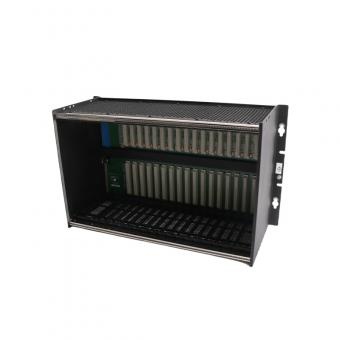 IC698CHS017
IC698CHS017
1.The GE IC698CHS017 is a 17-slot rack designed to house and organize various modules for GE Fanuc RX7i PACSystems. It provides a mounting platform for CPU, power supply, and I/O modules, ensuring efficient communication and power distribution between them. 2. What type of modules can be installed in the IC698CHS017 rack? The IC698CHS017 rack can accommodate CPU modules, power supply units, I/O modules, and other compatible cards within the GE Fanuc RX7i PACSystems family. 3. How many slots are available in the IC698CHS017 rack? The rack has 17 slots, which allow for the installation of various modules such as CPUs, power supplies, and I/O modules.
 IS420UCSBH3A
IS420UCSBH3A
The GE Mark VIe IS420UCSBH3A UCSB Controller Module is a part of the GE Mark VIe control system, which is designed for advanced process control and automation in various industrial applications. The UCSB (Universal Control System Bus) Controller Module plays a crucial role in managing and controlling complex processes with high reliability and performance. Key Features: Universal Control System Bus (UCSB): The IS420UCSBH3A is part of the UCSB module family, designed for high-speed communication and data handling within the Mark VIe control system. It supports the integration of multiple control system components, ensuring seamless data exchange and system coordination. High-Performance Processing: This module provides high-performance processing capabilities, handling complex control algorithms and data management tasks. It ensures reliable and efficient control of industrial processes by executing real-time computations and decision-making. Redundancy and Reliability: The UCSB Controller Module is designed with redundancy features to enhance system reliability. It supports fault tolerance and ensures continuous operation even in the event of a hardware failure, which is critical for maintaining uptime in industrial processes. Communication Interfaces: The module features various communication interfaces, enabling connectivity with other control system components, sensors, and actuators. This facilitates comprehensive process monitoring and control, integrating with other modules and systems as needed. Integration with Mark VIe System: As part of the Mark VIe control system, the IS420UCSBH3A integrates seamlessly with other Mark VIe components, including I/O modules, operator stations, and remote I/O systems. This integration supports a unified control and monitoring system, simplifying system management. Specifications Overview: Model: IS420UCSBH3A Type: UCSB Controller Module System: GE Mark VIe Function: High-performance processing and communication for control systems Features: Redundancy, high-speed interfaces, advanced control capabilities The GE Mark VIe IS420UCSBH3A UCSB Controller Module is a critical component in the Mark VIe control system, providing robust control and communication capabilities for industrial automation and process control. Its high performance, reliability, and integration features make it essential for managing complex industrial processes effectively.
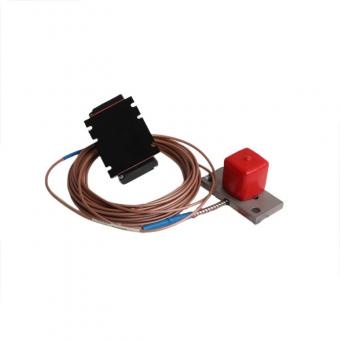 PR6426/000-131 CON041/916-200
PR6426/000-131 CON041/916-200
The EPRO PR6426/000-131 CON041/916-200 is an Eddy Current Signal Converter designed for use in industrial settings to convert the signals from eddy current sensors into a format suitable for further processing and analysis. Sensor Signal Converter designed for critical turbo machinery applications such as steam, gas and hydro turbines, compressors, pumps and fans to measure radial and axial shaft displacement, position, eccentricity and speed/key. Here's a table summarizing the provided information: Category Specification Dynamic Performance Frequency Range (-3 dB) 0 to 20,000 Hz Rise Time <15 µs Note Designed for PR6422, PR6423, PR6424, PR6425, PR6426 Note For Extended Range Use: CON041/91x-xxx Note PR6425 Requires Extended Range Converter Environmental Operating Temperature Range -30 to 100°C (-22 to 212°F) Shock and Vibration 5g @ 60Hz @ 25°C (77°F) Protection Class IP20 Power & Electrical Supply Voltage Range -23V to -32V (Output Range -4V to -20V) Supply Voltage Range -21V to -32V (Output Range -2V to -18V) Physical Housing Material / Weight PA 6.6 / ~60 grams (2.12 oz) Mounting Din Rail Connections Screw Terminal (Max. 1.5 mm², Wire-end Sleeves) Accessories BOX 030 Housing for Converter Mounting
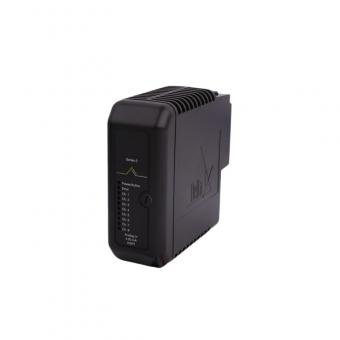 KJ3222X1-BA1 12P2532X072 VE4033S2B1
KJ3222X1-BA1 12P2532X072 VE4033S2B1
The Emerson KJ3222X1-BA1 12P2532X072 VE4033S2B1 DeltaV Analog Output Module is a critical component in the DeltaV distributed control system (DCS) designed to provide precise analog output signals for controlling various field devices. This module is used to output analog signals such as current or voltage to control actuators, valves, and other process equipment. Removal and Insertion Power Safety: Ensure that field power is disconnected before removing or connecting the device. This applies whether the power is supplied directly at the field terminal or through a bussed field power system via the Carrier. I/O Loop Assessment: Perform a complete assessment of all energy-limited nodes in the I/O loop before any changes. System Power: The device cannot be removed or inserted while the system power is active. Keying System: The device uses a rotary keying system to ensure compatibility between I/O cards and terminal blocks. Ensure that the terminal block is correctly keyed to match the I/O card being used. Maintenance and Adjustment User Serviceability: This unit does not contain any user-serviceable parts and should not be disassembled. Calibration: Calibration is not required for this unit. Power Specifications Local Bus Power: 12 VDC at 150 mA Bussed Field Power: 24 VDC at 300 mA Field Circuit: 24 VDC at 30 mA per channel
 SLS1508 KJ2201X1-BA1 12P3162X162
SLS1508 KJ2201X1-BA1 12P3162X162
The Emerson SLS1508 KJ2201X1-BA1 12P3162X162 DeltaV SIS Smart Logic Solver is an integral component of the DeltaV Safety Instrumented System (SIS) designed to execute safety logic for critical applications. It provides high-integrity, fail-safe operations for safety instrumented functions (SIFs) by processing safety logic, controlling outputs, and interfacing with inputs to ensure the safety and reliability of industrial processes. This Smart Logic Solver is used extensively in various industries, including oil and gas, chemical, petrochemical, and power generation, to maintain safe operations and prevent accidents. Key Features of Emerson SLS1508 KJ2201X1-BA1 12P3162X162 DeltaV SIS Smart Logic Solver: Feature Description High Safety Integrity Level (SIL) Compliance Certified up to SIL 3, compliant with IEC 61508 and IEC 61511 for high safety integrity in critical applications. Integrated Safety and Process Control Combines safety and process control within the DeltaV DCS, simplifying system management and monitoring. Scalable and Flexible Design Scalable architecture supports simplex and redundant configurations for varying safety and availability needs. Advanced Diagnostics and Health Monitoring Built-in diagnostics and monitoring features ensure system integrity and aid in quick fault resolution. Redundant and Fault-Tolerant Capabilities Offers redundancy and fault tolerance features, such as automatic failover and hot-swappable modules, for continuous operation. Ease of Configuration and Maintenance Supports online configuration and updates without process interruption, enhancing flexibility and reducing downtime. Rugged and Reliable for Harsh Environments Engineered for extreme industrial conditions, ensuring reliable and durable performance across diverse environments. Applications: Safety Instrumented Systems (SIS): Used for implementing and managing Safety Instrumented Functions (SIFs) in various safety-critical applications. Emergency Shutdown Systems (ESD): Provides reliable logic execution for emergency shutdowns and safety interlocks to protect personnel and equipment. Fire and Gas Systems: Supports the detection and mitigation of fire and gas incidents by integrating with fire and gas detection systems. High-Availability Safety Systems: Ideal for applications requiring high availability, redundancy, and fault tolerance, such as in refineries, chemical plants, and power stations.
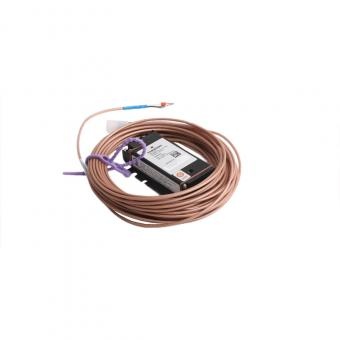 PR6423/10R-040 CON021
PR6423/10R-040 CON021
The EPRO PR6423/10R-040 CON021 is an 8mm Eddy Current Sensor designed for high-precision measurement in industrial applications. This sensor utilizes the eddy current principle to measure displacement, vibration, or proximity without physical contact. Non-contact sensor designed for critical turbomachinery applications such as steam, gas and hydro turbines, compressors, gearboxes, pumps and fans to measure radial and axial shaft dynamic displacement; position, eccentricity and speed. Here is a table summarizing the performance and environmental specifications of the EPRO PR6423/10R-040 CON021 8mm Eddy Current Sensor Category Specification Performance Linear Measurement Range 2 mm (80 mils) Initial Air Gap 0.5 mm (20 mils) Incremental Scale Factor (ISF) ISO: 8 V/mm (203.2 mV/mil) ± 5% @ 0 to 45°C (+32 to +113°F) Deviation from Best Fit Straight Line (DSL) ± 0.025 mm (± 1 mil) @ 0 to 45°C (+32 to +113°F) Measuring Target Minimum Shaft Diameter 25 mm (0.79”) Target Material 42CrMo4 (AISI/SAE 4140) Standard, Other (On Request) Environmental, General Protection Class IP66, IEC 60529 Operating Temperature Range Sensor incl. 1m Cable: -35 to +200°C (-31 to 392°F) Operating Temperature Range Cable & Connector: -35 to +150°C (-31 to 302°F) Material Sensor Tip PEEK Polyether Ether Ketone Material Case Stainless Steel Material Cable PTFE Polytetrafluoroethylene Material Connector Brass, nickel-plated Weight (Sensor with 1m Cable) Approx. 100 grams (3.53 oz)
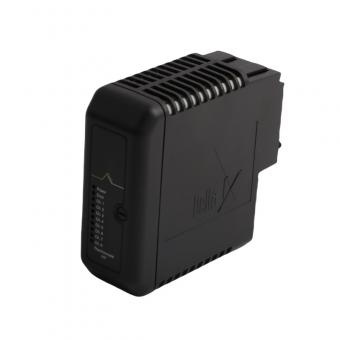 KJ3002X1-BG2 12P1731X022 VE4003S5B1
KJ3002X1-BG2 12P1731X022 VE4003S5B1
The Emerson KJ3002X1-BG2 12P1731X022 VE4003S5B1 Thermocouple mV Card is a specialized module designed for precise temperature measurement using thermocouple sensors and microvolt (mV) signals. This card integrates seamlessly with Emerson’s DeltaV™ control system, providing reliable temperature monitoring for various industrial applications. Key Features: Thermocouple and mV Input: Supports multiple types of thermocouples (e.g., J, K, T, E, N, R, S, B) for versatile temperature measurement across a wide range of processes. Capable of handling mV signals, allowing for compatibility with various measurement devices and enhancing the system's flexibility. Cold Junction Compensation: Integration with DeltaV™ System: Fully compatible with Emerson’s DeltaV™ distributed control system, enabling easy configuration and management through DeltaV software. Facilitates seamless communication and data transfer between thermocouples and the control system. High Accuracy and Stability: Designed for high accuracy in temperature measurement, providing reliable data essential for process control. Features signal filtering and noise reduction to enhance measurement stability. Modular Design: The modular architecture allows for straightforward installation and maintenance, enabling quick upgrades and replacements without significant downtime. Supports various configurations tailored to specific application requirements. Equipped with built-in cold junction compensation, ensuring accurate temperature readings by correcting for temperature variations at the thermocouple connection point. LED Status Indicators: Equipped with LED indicators for real-time monitoring of input status, facilitating quick diagnostics and troubleshooting. Provides immediate feedback on operational conditions. User-Friendly Configuration: Simplifies the setup process, allowing users to easily configure thermocouple inputs and associated parameters. Offers options for alarms and thresholds, enhancing monitoring capabilities. Specifications: Part Number: KJ3002X1-BG2 Product Code: 12P1731X022 Function: Thermocouple mV Card for temperature measurement Compatibility: Designed for use with Emerson’s DeltaV™ control system Input Types: Supports multiple thermocouple types and mV input signals Applications: Process Temperature Control: Ideal for monitoring and controlling temperatures in industries such as oil & gas, chemical processing, and food and beverage. Automation Systems: Integrates thermocouple inputs into automation systems, enhancing overall process efficiency and safety. Data Acquisition: Facilitates accurate temperature data collection for process analysis and optimization.
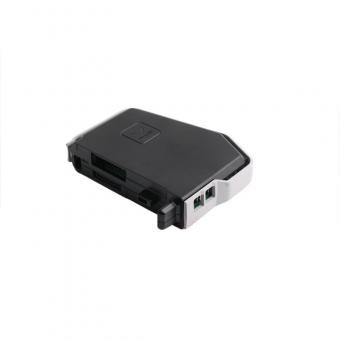 KJ2003X1-BK1 12P4686X052
KJ2003X1-BK1 12P4686X052
The Emerson KJ2003X1-BK1 12P4686X052 SD Plus Controller is a powerful component within Emerson's DeltaV distributed control system (DCS). This controller is part of the DeltaV S-series product line and is designed to provide enhanced processing capabilities, control loop execution, and robust system performance for complex process automation tasks. The SD Plus Controller is optimized for high reliability, availability, and easy integration with other DeltaV system components, making it suitable for a wide range of industrial applications. Key Features of Emerson KJ2003X1-BK1 12P4686X052 SD Plus Controller: Feature Description High-Performance Processing High-speed processor for fast control loop execution and complex algorithm processing, ensuring responsive control. Scalable and Flexible Architecture Supports system scalability and flexible configuration options to meet various process automation needs. Redundancy and High Availability Provides controller redundancy for continuous operation, enhancing reliability and minimizing process disruptions. Integrated Diagnostics and Monitoring Built-in diagnostics and alarms for monitoring system health, enabling proactive maintenance and reducing downtime. Easy Integration and Configuration Fully integrates with DeltaV DCS for centralized configuration, management, and supports easy updates and changes. Robust and Industrial-Grade Design Designed for harsh environments, with durability against electrical noise, temperature extremes, and mechanical stress. Applications: Process Control in Various Industries: Ideal for use in industries such as oil and gas, chemical, power generation, pharmaceuticals, and food and beverage, where reliable and accurate control is critical. Complex Automation Systems: Suitable for managing complex automation tasks that require fast processing speeds, high I/O capacity, and robust redundancy options. System Expansion and Upgrades: Provides a scalable solution for system expansion and modernization projects, allowing seamless integration with existing DeltaV systems.
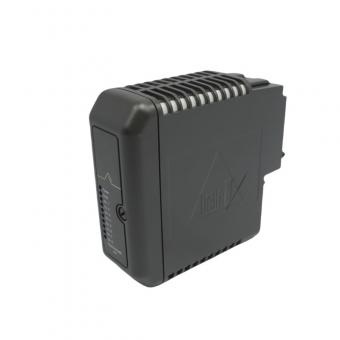 KJ3002X1-BG2 12P1731X082 VE4003S5B1
KJ3002X1-BG2 12P1731X082 VE4003S5B1
The Emerson KJ3002X1-BG2 12P1731X082 VE4003S5B1 Thermocouple Module is a key component within the Emerson DeltaV™ control system, designed for precise temperature measurement using thermocouple sensors. This module enables the integration of thermocouple inputs into the control system, facilitating accurate monitoring and control of process temperatures. Key Features: Thermocouple Input: Supports a wide range of thermocouple types (e.g., J, K, T, E, N, R, S, B), allowing for flexibility in temperature measurement applications. Capable of measuring temperatures across various industrial processes, making it suitable for different environments. Integration with DeltaV™ System: Fully compatible with Emerson’s DeltaV™ distributed control system, enabling seamless data integration and management. Allows for easy configuration through the DeltaV software environment, simplifying setup and operational adjustments. High Accuracy and Precision: Designed for high accuracy and stability in temperature readings, ensuring reliable process control. Features built-in cold junction compensation to enhance measurement accuracy. Modular Design: The modular format allows for easy installation, maintenance, and upgrades without significant disruption to existing systems. Supports flexible configurations, accommodating different process requirements. User-Friendly Configuration: Facilitates straightforward setup and calibration processes, allowing users to quickly integrate thermocouples into their control systems. Includes features for configuring alarms and monitoring critical temperature thresholds. Specifications: Part Number: KJ3002X1-BG2 Product Code: 12P1731X082 Function: Thermocouple Module for temperature measurement Compatibility: Designed for use with Emerson’s DeltaV™ control system Input Types: Supports multiple thermocouple types (J, K, T, E, N, R, S, B) Applications: Process Temperature Control: Ideal for monitoring and controlling temperatures in industries such as oil & gas, chemical processing, and food and beverage. Automation Systems: Integrates thermocouple inputs into automation systems, enhancing overall process efficiency and safety. Data Acquisition: Facilitates accurate temperature data collection for process analysis and optimization. The Emerson KJ3002X1-BG2 12P1731X082 VE4003S5B1 Thermocouple Module is essential for effective temperature monitoring and control within the DeltaV control system. Its reliability, versatility, and ease of integration make it suitable for various industrial temperature measurement applications.
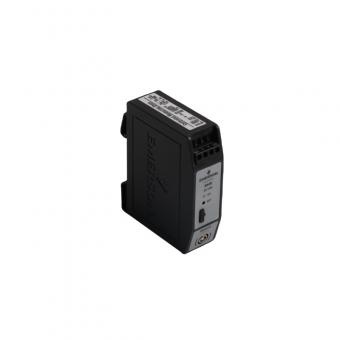 EZ1000
EZ1000
The Emerson EZ1000 Eddy Current Converter is a companion device to eddy current sensors, such as the Emerson EZ1000 Eddy Current Sensor. The converter is responsible for processing the raw signals received from the sensor and converting them into standardized output signals that can be read and interpreted by monitoring systems or data acquisition equipment. Key Features of Emerson EZ1000 Eddy Current Converter: Feature Description Signal Conversion Converts raw signals from an eddy current sensor into standardized output signals (e.g., 4-20 mA, 0-10V) for use in monitoring systems. High Accuracy and Stability Provides precise signal processing with high accuracy and stability, ensuring reliable data output for critical applications. Configurable Parameters Offers customizable settings for measurement range, sensitivity, and filter options to suit specific application needs. Robust Design Built to withstand harsh industrial environments, resistant to electrical noise, temperature changes, and other environmental factors. Applications Suitable for rotating machinery monitoring, process control, and R&D applications requiring precise, non-contact measurement data. Applications: Rotating Machinery Monitoring: Essential for predictive maintenance by monitoring shaft displacement or vibration, which helps detect misalignment, imbalance, or other faults early. Process Control: Used in industrial processes that require precise measurement of machine parts' positions or displacements. Research and Development: Supports experimental setups that require non-contact measurements with high accuracy.
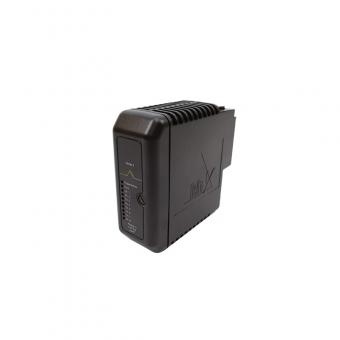 KJ3222X1-BA1 12P2532X072 VE4003S2B2
KJ3222X1-BA1 12P2532X072 VE4003S2B2
The Emerson KJ3222X1-BA1 (part number 12P2532X072), also known as the VE4003S2B2 AI 8 Channel 4-20mA HART Card, is an advanced input card used in process control systems. This card is designed to interface with analog devices and transmitters that operate within the 4-20 mA range while also supporting HART (Highway Addressable Remote Transducer) communication. Power Specifications 1.Local Bus Power: 12 VDC at 150 mA 2.Bussed Field Power: 24 VDC at 300 mA 3.Field Circuit Power: 24 VDC at 30 mA per channel Terminal Block Key Position 1.Position: A1 2.Removal and Insertion: Ensure that field power, whether supplied through the field terminal or as bussed field power via the carrier, is disconnected before removing or connecting the device. Perform an I/O loop assessment on all energy-limited nodes. Do not remove or insert this unit while the system power is energized. A rotary keying system is in place to ensure compatibility between I/O cards and terminal blocks once installation is complete. The terminal block keys must be correctly set for the corresponding I/O card. Maintenance and Adjustment Serviceability: This unit contains no user-serviceable parts and should not be disassembled. Calibration: Calibration is not required.
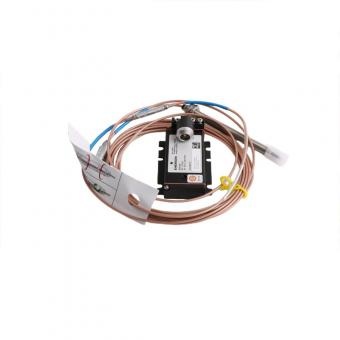 PR6423/013-010 CON021
PR6423/013-010 CON021
The EPRO PR6423/013-010 CON021 is a vibration monitor sensor designed for industrial applications to measure and monitor vibration levels. This sensor is used to ensure the proper operation and maintenance of machinery by detecting abnormal vibrations that could indicate potential issues or failures. Key Features: Vibration Monitoring: Measures vibration levels to assess the condition of rotating machinery and equipment. High Accuracy: Provides precise vibration measurements to help identify issues early and prevent equipment failures. Robust Design: Built to withstand harsh industrial environments and provide reliable performance. Specifications: Environmental Specifications: Specification Details Ambient Temperature Operates within a specified temperature range (details should be confirmed in the product datasheet). Shock Resistance Designed to handle industrial shock conditions (specific ratings should be confirmed in the product datasheet). Vibration Resistance Capable of measuring a wide range of vibration frequencies and amplitudes (specific details should be referenced in the product datasheet). Airborne Contaminants Built to perform reliably in environments with airborne contaminants (compliance details should be confirmed). Relative Humidity Suitable for operation within specified humidity ranges (details should be confirmed in the product datasheet). Installation and Maintenance: Specification Details Installation Requirements Follow manufacturer guidelines for installation to ensure proper functionality and accuracy. Maintenance Regular maintenance is required to ensure optimal performance; follow manufacturer recommendations. Calibration Calibration details should be confirmed in the product datasheet to maintain measurement accuracy. Applications: Condition Monitoring: Used for ongoing monitoring of machinery condition to detect and prevent potential failures. Predictive Maintenance: Helps in scheduling maintenance activities based on actual vibration data to avoid unexpected downtime.
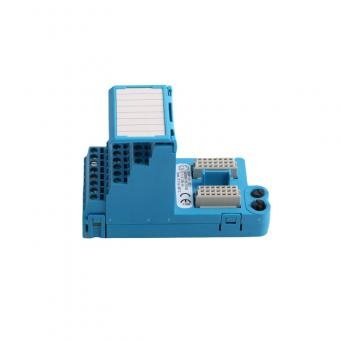 KJ4110X1-BC1 12P1869X012
KJ4110X1-BC1 12P1869X012
The Emerson KJ4110X1-BC1 12P1869X012 IS Terminal Block is a crucial component designed for use in intrinsically safe (IS) applications within hazardous environments. This terminal block facilitates secure connections for various field devices while ensuring safety and compliance with industry standards. Key Features: Intrinsically Safe Design: Specifically designed for use in hazardous areas, the terminal block ensures that electrical connections do not ignite flammable gases or dust. Meets stringent safety certifications, making it suitable for use in industries such as oil & gas, chemicals, and pharmaceuticals. Multiple Connection Points: Provides multiple terminals for connecting field devices, allowing for easy integration into existing systems. Supports various wire sizes and types, enhancing flexibility for different installation scenarios. Durable Construction: Built with robust materials to withstand harsh environmental conditions, including moisture, dust, and temperature variations. Ensures long-term reliability and reduces the risk of failure in demanding industrial settings. User-Friendly Design: Designed for ease of installation and maintenance, with clear labeling for terminals to simplify wiring. Facilitates quick and efficient setup, minimizing downtime during installation. Seamless Integration: Compatible with Emerson’s control systems and field devices, ensuring smooth communication and data transfer within the system. Enhances overall system performance and safety. Specifications: Part Number: KJ4110X1-BC1 Product Code: 12P1869X012 Function: IS terminal block for connecting field devices in hazardous areas Connection Type: Supports various terminal connections for flexibility Applications: Oil & Gas Industry: Used in offshore and onshore applications where safety is paramount. Chemical Processing: Ideal for environments where volatile chemicals are present. Pharmaceuticals: Ensures safe connections in clean and controlled environments. The Emerson KJ4110X1-BC1 12P1869X012 IS Terminal Block is an essential component for ensuring safe and reliable connections in hazardous environments. Its robust design, multiple connection points, and intrinsic safety features make it a preferred choice for various industrial applications where safety and reliability are critical.
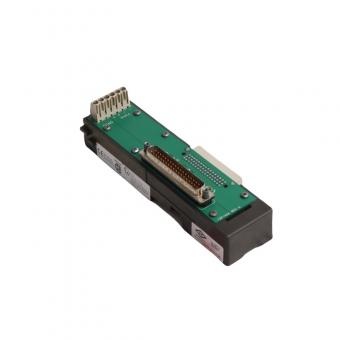 KJ4001X1-HC1 12P0831X072
KJ4001X1-HC1 12P0831X072
The Emerson KJ3243X1-BB1 12P3994X042 DeltaV KJ4001X1-HC1 LocalBus Left Extender is a component within the DeltaV distributed control system (DCS) by Emerson. This extender module is designed to extend the LocalBus communication of the DeltaV system to additional cards or modules, thereby enhancing the flexibility and scalability of the DeltaV system. The LocalBus Extender allows for seamless integration of multiple I/O cards and other modules within the DeltaV architecture, ensuring efficient communication and control. Key Features of the Emerson KJ4001X1-HC1 LocalBus Left Extender: Feature Description Model Number KJ4001X1-HC1 Part Number 12P3994X042 Type LocalBus Left Extender for DeltaV DCS Functionality Extends LocalBus communication to additional cards or modules within the DeltaV system Compatibility Compatible with Emerson DeltaV distributed control systems, designed to work with various DeltaV I/O cards and modules Bus Extension Provides left-side bus extension capability, allowing for more flexible and scalable system configurations Installation Typically installed in a DeltaV carrier, within a standard DeltaV card rack or system cabinet Hot-Swappable Supports hot-swapping, enabling installation or replacement without system downtime Reliability High reliability design with robust communication features to ensure consistent data flow and system performance Diagnostics and Monitoring Integrated diagnostics for real-time status monitoring and troubleshooting Environmental Tolerance Designed to withstand harsh industrial environments, including exposure to dust, moisture, and varying temperatures Applications Used in industries such as power generation, oil and gas, petrochemical, and other process industries Applications: System Expansion: Allows for the expansion of DeltaV DCS systems by enabling additional I/O cards and modules to be connected and communicated with effectively. Flexible System Configuration: Provides flexible system design and configuration options, supporting the connection of additional components as required by the application. Enhanced Communication: Ensures robust and reliable communication across the LocalBus network, maintaining system integrity and performance. Benefits: Scalability: Enhances the scalability of the DeltaV system, allowing for future expansions and upgrades without major reconfigurations. Operational Flexibility: Offers flexibility in configuring the DeltaV control network to meet specific process requirements and operational needs. Minimized Downtime: The hot-swappable feature and integrated diagnostics reduce downtime during maintenance or system modifications
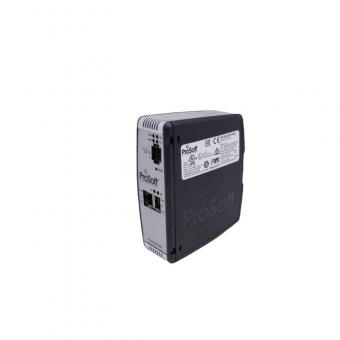 PLX32-EIP-PND
PLX32-EIP-PND
The EtherNet/IP to PROFINET device gateway offers bi-directional data transfers between a PROFINET Controller and EtherNet/IP networks. The PLX32-EIP-PND gateway is a stand-alone DIN-rail mounted unit that provides two Ethernet ports, with each port using a different subnet. The onboard SD Card slot (SD card optional) is used for storing configuration files that can be used for recovery, transferring the configuration to another gateway, or general configuration backup. The EtherNet/IP Driver uses Class 1 I/O connections or Class 3 Message instructions. The PROFINET driver operates as a PROFINET Class A device. Features ODVA Approved PROFINET v2 certification with PROFINET Class A compliance EtherNet/IP and PROFINET certifications ensure the device is compatible with their respective network Field-tested with multiple PROFINET controllers from multiple vendors Remotely view and diagnose EtherNet/IP and PROFINET networks Embedded EDS AOP provided to allow for seamless integration to Studio 5000 and RSLogix 5000 Using EtherNet/IP I/O connections, no ladder programming is required Multiple I/O connections to allow for increased throughput Secure module configuration via module switch (v1.04 and greater) Up to 10,000 16-bit registers can be used to exchange large amounts of data
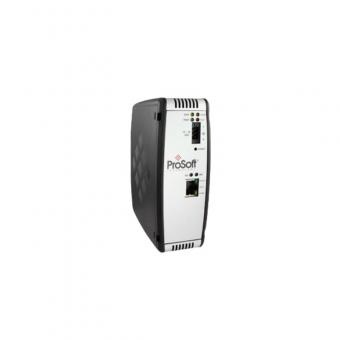 PLX31-EIP-PND
PLX31-EIP-PND
The EtherNet/IP™ to PROFINET® IO Device (slave) gateway offers bi-directional data transfers between EtherNet/IP™ controllers and a PROFINET® IO controller. The EtherNet/IP™ Driver supports I/O connections for guaranteed data delivery or Message instructions to send data to/from the PACs. The gateway supports 1440 bytes of input data and 1440 bytes of output data for larger applications. In addition, the gateway’s multiple I/O connections, allow you to set different RPIs for control data and module diagnostics, enabling you to optimize your Ethernet bandwidth. Features Embedded EDS Add-On Profile allows for simplified integration and reduced configuration time for Rockwell Automation PACs. No ladder programming is required when using I/O connections. Multiple I/O connections allow you to set different RPIs for status and control data, enabling Ethernet bandwidth optimization. Communication via an I/O connection provides guaranteed data delivery and enables the PAC to monitor for communication faults. SD card slot (SD card optional) is used for storing configuration files in the event of a disaster. ProSoft Discovery Service allows your PC to find the gateway and change its default IP address without being on the same subnet.
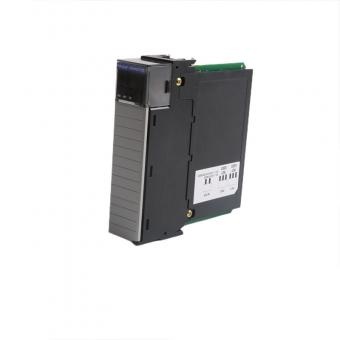 MVI56E-MNETR
MVI56E-MNETR
MVI56E products are backward compatible with existing MVI56 products, ladder logic, and module configuration files already in use. Easily swap and upgrade products while benefiting from an array of new features designed to improve interoperability and enhance ease-of-use. • Configuration Builder (PCB): New Windows software for diagnostics, connecting via the module's Ethernet port or CIPconnect®, to upload/download module configuration information and access troubleshooting features and functions. •Discovery Service (PDS): Utility software to find and display a list of MVI56E modules on the network and to temporarily change an IP address to connect with a module's web page. • CIPconnect-enabled: Allows PC-to-module configuration and diagnostics from the Ethernet network through a 1756-ENBT EtherNet/IP™ module. • Personality Module: An industrial compact flash memory card storing the module’s complete configuration and Ethernet settings, allowing quick and easy replacement. • LED Scrolling Diagnostic Display: 4-character, alphanumeric display, providing standard English messages for status and alarm data, and for processor and network communication status. System Requirements The MVI56E-MNETR module requires the following minimum hardware and software components: • Rockwell Automation processor (firmware version 10 or higher), with compatible power supply, and one free slot in the rack for the MVI56E-MNETR module. The module requires 800 mA of available 5 Vdc power • Rockwell Automation RSLogix 5000 programming software o Version 16 or higher required for Add-On Instruction o Version 15 or lower must use Sample Ladder • Rockwell Automation RSLinx® communication software version 2.51 or higher • ProSoft Configuration Builder (PCB) (included) • ProSoft Discovery Service (PDS) (included in PCB) • Pentium® II 450 MHz minimum. Pentium III 733 MHz (or better) recommended • Supported operating systems: o Microsoft Windows 10 o Microsoft Windows 7 Professional (32-or 64-bit) o Microsoft Windows 2000 Professional with Service Pack 1, 2, or 3 o Microsoft Windows Server 2003 • 128 Mbytes of RAM minimum, 256 Mbytes of RAM recommended • 100 Mbytes of free hard disk space (or more based on application requirements)
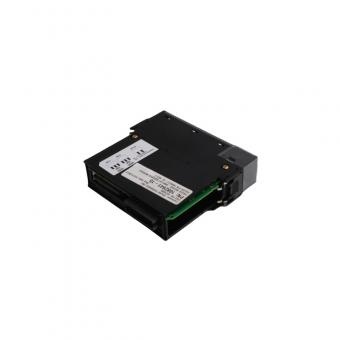 MVI56E-MNETXT
MVI56E-MNETXT
The MVI56E Modbus TCP/IP Client/Server Communication Module enables seamless integration between Rockwell Automation ControlLogix processors and various Modbus-compatible devices, including Modicon Programmable Automation Controllers (PACs) and numerous instruments. The module features a 5000-word register space to facilitate data exchange between the processor and the Modbus TCP/IP network. There are two variants: the MVI56E-MNET, designed for standard process applications, and the MVI56E-MNETXT, designed for the Logix-XT™ control platform. The MVI56E-MNETXT is tailored for extreme environments, featuring a conformal coating for protection against harsh or corrosive conditions and can operate at higher temperatures. Here's a table presenting the key updates and features of the MVI56E Modbus TCP/IP Client/Server Communication Module: Feature Description ProSoft Configuration Builder (PCB) New Windows software for diagnostics and module configuration via the Ethernet port or CIPconnect®, enabling easy upload/download of configuration data and troubleshooting. ProSoft Discovery Service (PDS) Utility software that detects and displays MVI56E modules on the network, allowing temporary IP address changes for web page access. CIPconnect-enabled Enables PC-to-module configuration and diagnostics through the Ethernet network via a ControlLogix 1756-ENBT EtherNet/IP™ module. Personality Module Industrial compact flash memory card storing the module’s full configuration and Ethernet settings for quick and easy replacement. LED Scrolling Diagnostic Display 4-character alphanumeric display providing status and alarm messages in standard English, as well as processor and network communication status. XT Series for Extreme Environments The MVI56E-MNETXT module is designed to operate in extreme temperatures and harsh environments, with a conformal coating for protection against corrosive elements.
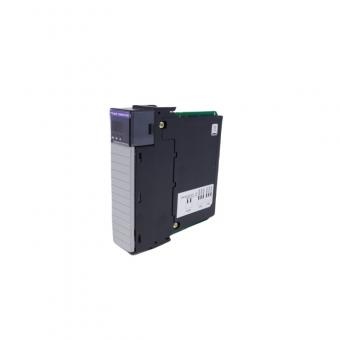 MVI56E-MCM
MVI56E-MCM
The PROSOFT MVI56E-MCM is a Modbus Communication Module designed for use with platform. It facilitates communication between Modbus devices and the system. Here's a breakdown of its key features and functionalities: Important Safety Information North America Warnings A Warning - Explosion Hazard - Substitution of components may impair suitability for Class I, Division 2. B Warning - Explosion Hazard - When in Hazardous Locations, turn off power before replacing or rewiring modules. C Warning - Explosion Hazard - Do not disconnect equipment unless power has been switched off or the area is known to be nonhazardous. D Class 2 Power ATEX Warnings and Conditions of Safe Usage Power, Input, and Output (I/O) wiring must be in accordance with the authority having jurisdiction A Warning - Explosion Hazard - When in hazardous locations, turn off power before replacing or wiring modules. B Warning - Explosion Hazard - Do not disconnect equipment unless power has been switched off or the area is known to be non-hazardous. C These products are intended to be mounted in an IP54 enclosure. The devices shall provide external means to prevent the rated voltage being exceeded by transient disturbances of more than 40%. This device must be used only with ATEX certified backplanes. D DO NOT OPEN WHEN ENERGIZED. Package Contents The following components are included with your MVI56E-MCM module, and are all required for installation and configuration.
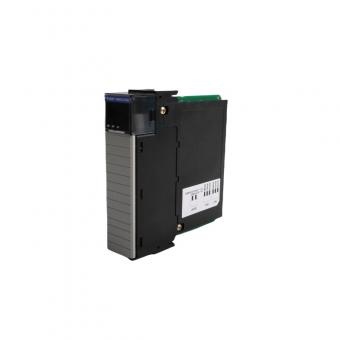 MVI56E-MCMR
MVI56E-MCMR
System Requirements The MVI56E-MCMR module requires the following minimum hardware and software components: • processor (firmware version 10 or higher), with compatible power supply, and one free slot in the rack for the MVI56E-MCMR module. The module requires 800 mA of available 5 Vdc power and 3 mA of available 24 VDC power. • RSLogix 5000 programming software o Version 16 or higher required for Add-On Instruction o Version 15 or lower must use Sample Ladder • RSLinx® communication software version 2.51 or higher • ProSoft Configuration Builder (PCB) (included) • ProSoft Discovery Service (PDS) (included in PCB) • Pentium® II 450 MHz minimum. Pentium III 733 MHz (or better) recommended • Supported operating systems: o Microsoft Windows 10 o Microsoft Windows 7 Professional (32-or 64-bit) o Microsoft Windows 2000 Professional with Service Pack 1, 2, or 3 o Microsoft Windows Server 2003 • 128 Mbytes of RAM minimum, 256 Mbytes of RAM recommended • 100 Mbytes of free hard disk space (or more based on application requirements) Package Contents The following components are included with your MVI56E-MCMR module, and are all required for installation and configuration. Setting Jumpers There are three jumpers located at the bottom of the module. The first two jumpers (P1 and P2) set the serial communication mode: RS-232, RS-422 or RS-485. The Setup Jumper acts as "write protection" for the module’s firmware. In "write protected" mode, the Setup pins are not connected, and the module’s firmware cannot be overwritten. The module is shipped with the Setup jumper OFF. Do not jumper the Setup pins together unless you are directed to do so by ProSoft Technical Support (or you want to update the module firmware).
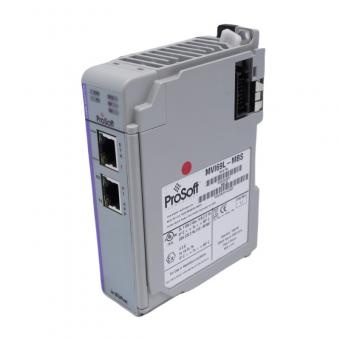 MVI69L-MBS
MVI69L-MBS
The ProSoft MVI69L-MBS is a Modbus Serial Lite Communication Module designed for use with PLC platforms. This module facilitates serial communication using the Modbus protocol, providing a cost-effective solution for integrating Modbus serial devices into a system. The MVI69L-MBS Modbus Serial Module is designed for controllers, making it ideal for smaller applications that require communication with a few Modbus Serial devices. This module is equipped with an Add-on Profile and Add-on Instruction, which streamline the commissioning process. Key Features: Compatibility: Supports processors with 1769 I/O bus capability version 16 and later (Note: 1500 is not supported). Add-on Instruction: Provides User-Defined Types (UDTs) for logical definitions of I/O, status, and control data. Add-on Profile: Enhances integration within the system. Diagnostic Data: Available in processor controller tags, allowing for decisions based on node health. Configuration Backup: Module configuration is saved within the project (ACD file). Co-Processor Functionality: Acts as a co-processor, minimizing impact on PLC scan time. I/O Data Support: Handles up to 240 words of I/O data. Port Configuration: Application port can be set as either a Modbus Master or Modbus Slave. Modbus Commands: Supports up to 30 Modbus commands when operating as a Modbus Master. Floating Point Data: Compatible with Enron and Daniel style floating point data implementations. Target Applications: Well-suited for OEM and machine builder applications.
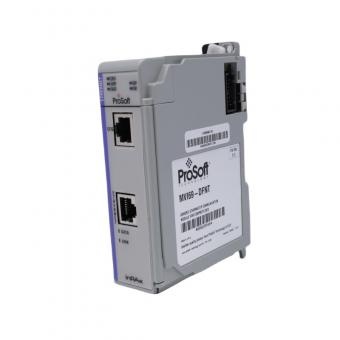 MVI69-DFNT
MVI69-DFNT
Product Description The MVI69-DFNT EtherNet/IP (DF1 for Ethernet) Client/Server Communication Module is a 1500 LRP backplane compatible module that allows processors to interface easily with EtherNet/IP protocol (Explicit Messaging) compatible devices and hosts. Devices commonly supporting the protocol include PLCs, PACs, and host HMI systems. The module acts as an EtherNet/IP client, enabling it to send and receive messages to and from EtherNet/IP devices, as well as functioning as a server, allowing EtherNet/IP devices to communicate with the controller. This dual functionality makes it ideal for applications that require bidirectional data flow between different types of EtherNet/IP-enabled equipment. Detailed Specifications General Information Manufacturer: ProSoft Technology Model Number: MVI69-DFNT Product Type: EtherNet/IP Client/Server Communication Module Protocols Supported: EtherNet/IP Functionality: Client and Server Communication Interface Ethernet Interface: 1 x RJ45 port (10/100 Mbps) EtherNet/IP communication Auto-negotiation for optimal communication speed (10/100 Mbps) Supports TCP/IP and UDP communication protocols Power Requirements Input Voltage: 24 VDC ± 20% Power Consumption: 1.3 W (typical) Current Consumption: 55 mA (typical) Environmental Specifications Operating Temperature: 0°C to 60°C (32°F to 140°F) Storage Temperature: -20°C to 85°C (-4°F to 185°F) Humidity: 5% to 95% non-condensing Vibration: 0.3 g at 5-500 Hz (operating) Certifications: CE, UL, RoHS Frequently Asked Questions (FAQs) 1. What is the primary purpose of the MVI69-DFNT module? The MVI69-DFNT module is designed to provide communication between PLCs and EtherNet/IP networks. It supports both client and server communication modes, enabling data exchange between EtherNet/IP devices and PLC systems. 2. Can the MVI69-DFNT module operate as both a client and a server? Yes, the MVI69-DFNT module supports both client and server modes. As a client, it can initiate requests to other EtherNet/IP devices, and as a server, it allows EtherNet/IP devices to communicate with the PLC. 3. What EtherNet/IP functions are supported by this module? The MVI69-DFNT module supports both explicit and implicit messaging. Explicit messaging (CIP) is used for more complex data exchanges, while implicit messaging (I/O) is for real-time data transfer, such as control signals or sensor data.
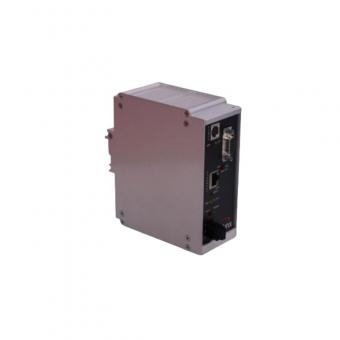 5205-DFNT-PDPS 5205-BACNET-PDPS
5205-DFNT-PDPS 5205-BACNET-PDPS
The 5205-DFNT-PDPS and 5205-BACNET-PDPS are gateways designed to enable communication between EtherNet/IP or BACnet networks and PROFIBUS DP networks, acting as a bridge between two different industrial communication protocols. The DFNT-PDPS modules are the ideal solution for the many applications where EtherNet/IP connectivity can be used to integrate a PROFIBUS DP master device into a system. The EtherNet/IP gateway is a powerful module designed with both Client and Server support, enabling easy connection to Rockwell Automation PLCs (CLX, SLC, PLC, CPLX, and similar devices). In combination with the PROFIBUS DP Slave support, the module provides a very powerful interface to the many PROFIBUS master devices which are in use in the industrial marketplace today. Applications for the module are found in most industries, especially Manufacturing, Oil and Gas, Electrical Power and Food Processing. The ProLinx EtherNet/IP to PROFIBUS DP Slave Gateway creates a powerful connection between devices on an EtherNet/IP network and a PROFIBUS master device. This stand-alone DIN-rail mounted protocol gateway provides one Ethernet port and one PROFIBUS DP Slave configurable DB9F port. The Ethernet/IP protocol driver supports the Explicit Messaging implementation of the protocol. User-configurable as both a Client and a Server, the EtherNet/IP port is a very powerful data transfer tool.
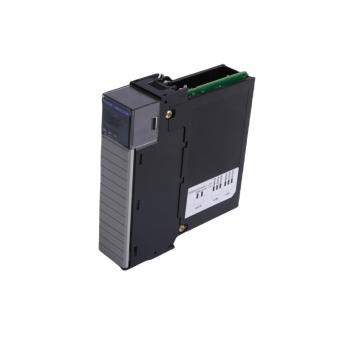 MVI56E-GSC
MVI56E-GSC
What's New? MVI56E products are backward compatible with existing MVI56 products, ladder logic, and module configuration files already in use. Easily swap and upgrade to benefit from an array of new features designed to improve interoperability and enhance ease of use. • ProSoft Configuration Builder (PCB): Microsoft Windows® -based utility software for diagnostics. Connect through the module's Ethernet port or use CIPconnect® to access troubleshooting features and functions. • ProSoft Discovery Service (PDS): New Windows-based utility software to find and display a list of MVI56E modules on the network and to temporarily change a module's IP address to be able to connect with a module's web page. • CIPconnect-enabled: Allows PC-to-module diagnostics from the Ethernet network through a 1756-ENxT EtherNet/IP™ module. • Personality Card: An industrial-grade compact flash memory card storing the module’s Ethernet settings, allowing quick and easy replacement. • LED Scrolling Diagnostic Display: 4-character, alphanumeric display, providing English messages for status and alarm data, and for processor and network communication status. What's Different? The MVI56E-GSC Generic ASCII Serial Communication module is configured in RSLogix™ 5000 software using the sample ladder or Add-On Instruction (AOI). It also uses ProSoft Discovery Service (PDS), ProSoft Configuration Builder (PCB), as well as all required product documentation. • PDS is the software utility used to allow your PC to connect to the module to set a temporary Ethernet IP address. Then you can connect to the module's web page to retrieve or change the module's firmware though an Ethernet link. • PCB is the software used to provide access to the module's diagnostic menus and application serial port communication data analyzer features.
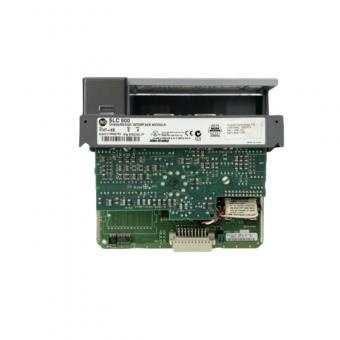 2150-AGA 1747-KE
2150-AGA 1747-KE
The PROSOFT 2150-AGA 1747-KE Interface Module is designed to enable communication between SLC 500 programmable controllers and devices using the Allen-Bradley DF1 protocol. This module offers an interface that supports asynchronous communication and allows for seamless data transfer between controllers and other devices within a distributed network. Applications: The PROSOFT 2150-AGA 1747-KE Interface Module is ideal for industrial environments that utilize SLC 500 programmable controllers and need to establish serial communication with other DF1-enabled devices. Typical applications include factory automation, process control, and distributed control systems where reliable data communication is essential for system efficiency. The module provides a cost-effective and reliable solution for upgrading or replacing existing 1747-KE modules, enabling seamless communication in legacy or modernized systems. Here’s a table presenting the key features of the PROSOFT 2150-AGA 1747-KE Interface Module: Feature Description SLC 500 Integration Interfaces directly with Allen-Bradley SLC 500 controllers, allowing communication over serial ports using the DF1 protocol. 1747-KE Compatibility Acts as a replacement or complement to the Allen-Bradley 1747-KE module, providing similar functionality with enhancements. Asynchronous Communication Supports asynchronous serial communication, ideal for connecting devices like modems, printers, and other peripherals. DF1 Protocol Support Enables peer-to-peer communication between PLCs and other automation devices via the DF1 protocol. Reliable Data Transfer Ensures consistent and dependable data exchange between SLC 500 controllers and connected devices. RS-232/RS-485 Interface Offers RS-232 or RS-485 serial communication, enabling connectivity with various external devices and networks.
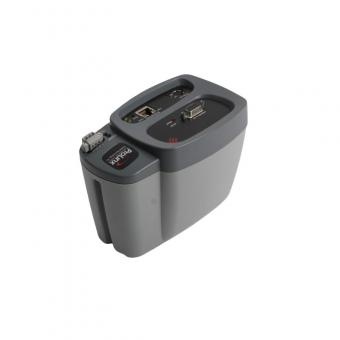 4205-MNET-PDPS
4205-MNET-PDPS
The ProSoft 4205-MNET-PDPS is a Modbus TCP/IP to PROFIBUS DP Slave Gateway designed to enable seamless communication between devices on a Modbus TCP/IP network and those on a PROFIBUS DP network. This gateway is typically used to allow Modbus TCP/IP-based controllers (such as PLCs or SCADA systems) to exchange data with PROFIBUS DP devices, acting as a slave on the PROFIBUS DP network. It is an ideal solution for integrating systems with different communication protocols in industrial automation environments. Example Use Case: A manufacturing facility is running a Siemens S7 PLC on a PROFIBUS DP network to control various field devices such as I/O modules and drives. The facility wants to introduce new Modbus TCP/IP-based devices, such as sensors and HMIs, without replacing the existing PROFIBUS DP infrastructure. The 4205-MNET-PDPS gateway enables the Modbus TCP/IP devices to communicate with the PROFIBUS DP master, allowing for efficient integration of both systems Benefits: Cost-Effective Integration: The gateway allows you to integrate Modbus TCP/IP devices with an existing PROFIBUS DP network, reducing the need for costly equipment replacements or upgrades. Seamless Communication: It provides real-time, high-speed communication between two different protocols, ensuring smooth operation of the entire automation system. Flexibility: The ability to support both Modbus TCP/IP and PROFIBUS DP protocols makes the gateway highly adaptable for use in various industries and applications. Simplified Configuration: ProSoft’s intuitive configuration tools and diagnostics make it easy to set up and maintain communication between the two networks.
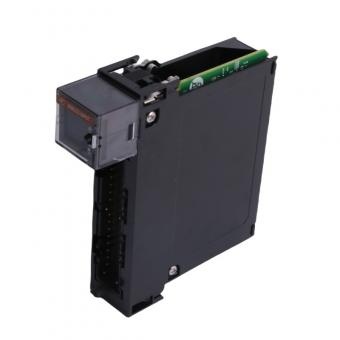 1756-IF8I
1756-IF8I
For a 1756-IF8I or 1756-IF8IK module operating in current mode with a 0…21 mA range, and a 4…20 mA transmitter in use: 1.To receive values in signal units: Set Low Signal to 4 mA Set High Signal to 20 mA Set Low Engineering to 4 EU Set High Engineering to 20 EU 2.To receive values as Percent of Full Scale: Set Low Signal to 4 mA Set High Signal to 20 mA Set Low Engineering to 0% Set High Engineering to 100% For modules with 8 channels, data is mapped from a 6-channel module format to an 8-channel module format. Despite the controller sending data in the 1756-IF6I module format, the firmware internally adjusts this data to match the 1756-IF8I module format.
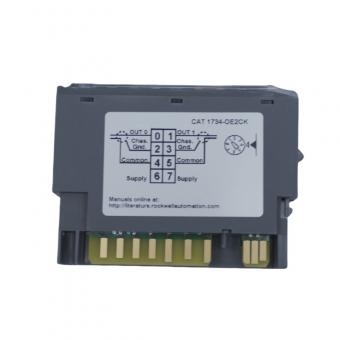 1734-OE2CK
1734-OE2CK
1734-OE2CK POINT I/O 2 Point Analog Output Module-K is a POINT I/O 2 Point Analog Output Module , used to control analog devices by providing current or voltage outputs. Question Answer How many outputs does the module have? The 1734-OE2CK has 2 analog output channels. What types of outputs are supported? It supports both current (4-20 mA) and voltage (0-10V DC) outputs. What is the resolution of the outputs? The module provides a 16-bit resolution for both current and voltage outputs. What are the communication options? It communicates over the EtherNet/IP network using the POINTBus backplane. Is the module hot-swappable? Yes, the 1734-OE2CK is hot-swappable, allowing for replacement without shutting down the system. What is the operating temperature range? The operating temperature range is -20 to 55°C (-4 to 131°F). What kind of isolation does it have? It provides channel-to-system isolation to prevent electrical interference between components. What is the power consumption of the module? The module consumes 75 mA of current from the POINTBus backplane. Is external power required for the module? No, the module is powered through the POINTBus backplane and doesn’t require an additional external power supply. How is the module mounted? The module can be DIN rail mounted as part of the POINT I/O system. What certifications does it carry? The 1734-OE2CK is certified for use in hazardous locations and complies with CE, UL, and ATEX standards. Does it support diagnostics? Yes, it has built-in diagnostics for monitoring module status and troubleshooting output conditions. Can the module be used in safety applications? No, the 1734-OE2CK is not rated for safety or SIL (Safety Integrity Level) applications. What software is required for configuration? The module is configured using Studio 5000 Logix Designer software.
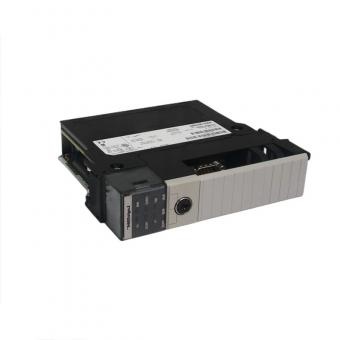 1756-L64
1756-L64
The 1756-L64/B is a part of Logix5564 Processor Module specifically designed to offer high performance and scalability for industrial automation and control applications. The Logix5564 Processor, commonly referred to as the 1756-L64, is a programmable automation controller (PAC) known for its robust capabilities in process, motion, and safety control systems. Key Features: Memory: Equipped with 16MB of user memory, allowing for large, complex programs and data storage. I/O Capacity: Supports multiple input/output modules for various control applications. Network Connectivity: Supports a wide range of communication modules such as Ethernet/IP and DeviceNet. Redundancy Support: Can be used in redundant systems to provide high availability and fault tolerance. Integrated Motion: Supports motion control capabilities for applications requiring precision control. Advanced Diagnostics: Offers extensive diagnostic information to ensure system performance and rapid troubleshooting. Data Handling: Efficient data handling and transfer, suitable for real-time control applications. Module Type Processor Module I-O Memory 478 Kilobytes User Memory 16 MB Maximum I-O 128000 Maximum Analog I-O 4000 Maximum Digital I-O 128000 Current Draw (5.1 Volts DC) 1200 milliamps Current Draw (24 Volts DC) 14 milliamps Power Dissipation 3.5 Watts Thermal Dissipation 11.9 BTU per hour Isolation Voltage 30 Volts Continuous
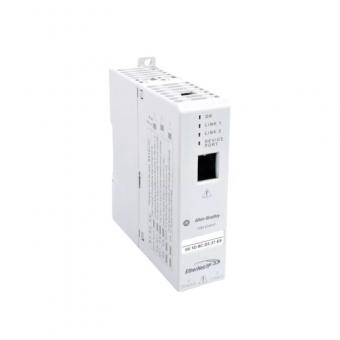 1783-ETAP1F
1783-ETAP1F
The 1783-ETAP1F is a part of the Stratix 2000 series, specifically designed for industrial applications requiring reliable Ethernet connectivity. This Ethernet switch is particularly suited for use in systems where ring topologies or high availability are needed. Below are the key features and specifications of the 1783-ETAP1F: Key Features: Device-Level Ring (DLR) Support: Allows for ring topologies that provide high network availability by offering fast recovery times in case of a single network failure. Gigabit Fiber Optic Port: The “1F” in the model number indicates the inclusion of a fiber optic port, enabling long-distance communication with high bandwidth. Compact Design: Designed for easy integration into control panels with space constraints. DIN Rail Mounting: Facilitates quick and secure installation within industrial enclosures. Harsh Environment Suitability: Built to withstand industrial conditions, with robust construction and protection against dust and moisture. Low Power Consumption: Energy-efficient design to reduce overall power requirements. Specifications: Number of Ports: 2 Copper Ethernet ports (10/100 Mbps) 1 Fiber Optic Ethernet port (1 Gbps) Network Topology Support: Device-Level Ring (DLR), Linear, Star Fiber Optic Port: Supports single-mode fiber SC connectors typically used Power Supply: Typically powered by 24V DC (range may vary) Operating Temperature Range: Typically from -40°C to +70°C, suitable for harsh environments Environmental Rating: IP20, suitable for standard industrial environments Compliance: CE, cULus, and other relevant industrial certifications Dimensions: Compact, often around 90 x 60 x 35 mm (specific dimensions may vary)
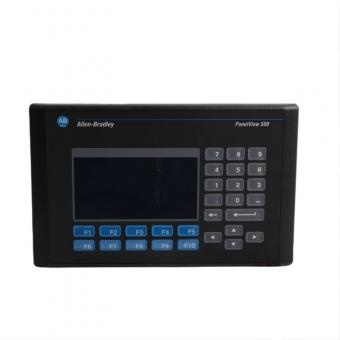 2711-B5A1
2711-B5A1
The 2711-B5A1 is an PanelView Standard Operator Terminal. This operator terminal has a 5.5-inch display with embedded Remote I/O communication port and RS232 communication port. It has ten (10) Function keys and a Touchscreen operator interface. This HMI provides monitoring, control, communication and other functionalities in one place - via the integrated screen and operator input areas. The HMI’s screen features a 5.5-inch display size, having a resolution of 128 x 64 pixels. With this small screen area, this device is ideally used for micro-automation and small processes that requires minimum graphical, equipment and static displays. It is also built with embedded communication terminals such as an RS232 port for printer communication and a Remote I/O (RIO) communication interface that caters Remote I/O protocol which is a serial-based communication standard. With RIO protocol, up to 32 devices in the Remote I/O network may be connected with a single master device per segment. The RS232 printer port may be specifically used for printing alarm list and messages. Backlight 100,000 hr LED backlight life Input Type Keypad / Touch Product Family: PanelView Standard Terminals Product Type: Operator Terminals Display Type: Monochrome LCD blue mode display Display Area: 120 x 60 mm (4.75 x 2.38 in.) Resolution: 256 x 128 Touchscreen: Touch cells: 128 Actuation: 1 million presses Keypad function keys: 10 function keys (F1…F10) Application memory: 170 KB application runtime; 240 KB nonvolatile memory (application objects plus text and bitmaps) Communication ports: Remote I/O (RIO); RS232 (printer) Input Voltage range: 85…264V AC, 47…63 Hz Accessories: function key legend inserts; Anti-glare overlays; backlight replacements; Real-time clock replacements; Mounting hardware; Power supply and terminal block; interface modules; Part Number/Catalog No. 2711-B5A1 Product Line Panelview 550 Display Size 5.5 inches Display Color Monochrome LCD blue mode Communication Remote I/O Communication and RS-232 Printer Port Input Power 120 Volts AC Memory 170 KB application runtime Communication Cable 2711-NC13 Shipping Weight 6 pounds Shipping Dimensions 14x11x8 inches Series A,B,C,D,E,F,G,H
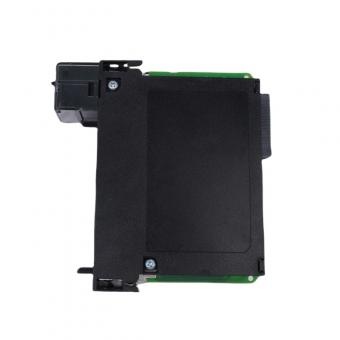 1756-IR6I
1756-IR6I
To use the rate alarm for a non-ohm input on the 1756-IR6I module and a non-millivolt input on the 1756-IT6I and 1756-IT6I2 modules, you must have RSLogix 5000® software, version 12 or later, and module firmware revision 1.100 or later. For the 1756-IR6I module in temperature applications, if a wire-off condition is detected, the behavior depends on the specific wires disconnected: 1.If only the wire connected to terminal A is lost: The input data for the channel will change to the highest scaled temperature value associated with the selected RTD type. The ChxOverrrange (where x = channel number) tag will be set to 1. 2.If any other combination of wires is disconnected: The input data for the channel will change to the lowest scaled temperature value associated with the selected RTD type. The ChxUnderrange (where x = channel number) tag will be set to 1.
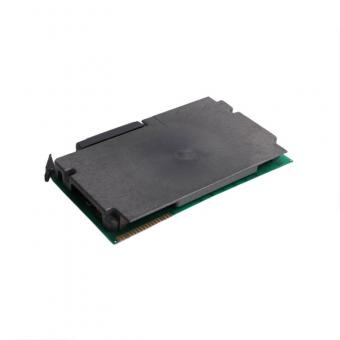 1771-IM
1771-IM
The 1771-IM PLC-5 Digital Input Module is a keypad specifically designed for use with the ABB DCS400 series of DC drives. This keypad serves as the human-machine interface (HMI) for the DCS400 drives, allowing operators to monitor, control, and configure the drive parameters. 1. 100% original product, 100% quality assurance and the more competitive price. If you find a fake . Please contact us without hesitation! We afford the shipment cost! We send you a new product asking zero cent! 2. Thoughful service Professional after-sales service. 3. Quick Shipping We have large quantites of inventories, can ship immediately.
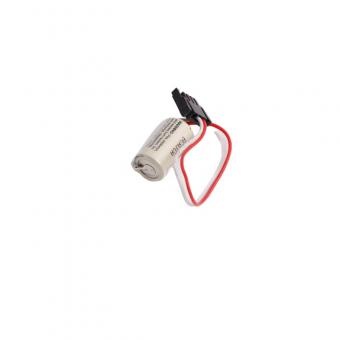 1769-BA
1769-BA
The 1769-BA is a replacement lithium battery specifically designed for use with controllers. This battery is essential for maintaining the memory of the CPU and I/O modules, particularly in situations where the main power is lost. It ensures that critical data, such as program files and configuration settings, are retained during power outages or when the controller is powered off. Key Features: Memory Backup: Provides power to the controller's memory to retain user programs, configuration data, and other critical information. Long Shelf Life: The battery has a long shelf life, ensuring reliability even after extended periods of storage. Easy Replacement: Designed for straightforward replacement to minimize downtime during maintenance. Lithium Chemistry: Offers a stable and long-lasting power source, suitable for industrial environments. Specifications: Battery Type: Lithium Nominal Voltage: 3.0V Capacity: Approximately 1,800 mAh (varies depending on usage conditions) Operating Temperature: Typically from -40°C to 85°C (-40°F to 185°F), making it suitable for a wide range of industrial environments. Shelf Life: Up to 10 years, depending on storage conditions. Compatibility: Compatible with 1769 series controllers. Also compatible with certain MicroLogix controllers that require a battery backup. Part Number/Catalog No. 1769-BA Product Line Battery Module Type Battery Shipping Weight 2 lbs. Shipping Dimensions 8X8X5 in. Series A and B Isolation Voltage 30 Volts Continuous Enclosure Open Backplane Current 1.4 Amps at 24 Volts Power Consumption 33.6 Watts Power Dissipation 7.5 Watts
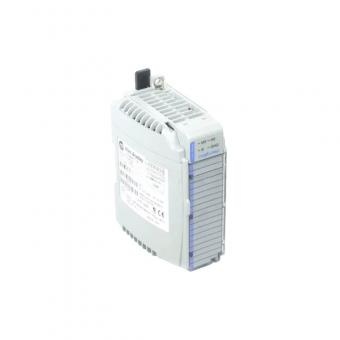 1769-ADN
1769-ADN
The 1769-ADN is a DeviceNet communication module compatible It serves as a bridge between a DeviceNet network and a 1769 Compact I/O system It allows connection to DeviceNet network through the integrated DeviceNet communication port with communication rates of 125k bit/s, 250k bit/s, and 500k bit/s. This module supports DIN rail or panel mounting. This module has a current draw of 90 mA at 24 Volts DC and voltage of 11 to 25 Volts DC. It has a 30 Volt isolation voltage and a 4.7 Watt Power dissipation. For installation, it uses a DIN rail or panel mounting method with an open enclosure and it requires one slot . The adapter should not be more than 4 modules (Series A) or 5 modules (Series B) away from the power supply. The 1769-ADN adapter module has more diagnostic features providing better fault detection and improved data collection. For wiring, the 802.3 compliant twisted pair cable with 2 millimeters squared (14 AWG) category standard must be used. It has a reduced start-up time and less wiring than a normal hard-wired system. Part Number/Catalog No. 1769-ADN Product Description: 1769 DeviceNet Scanner Product Line 1769-ADN Module Type DeviceNet Adapter Module Shipping Weight 2 pounds Communication Port: One (1) DeviceNet Shipping Dimensions 8x8x5 inches Data Transfer speed: 125k bit/s 250k bit/s 500k bit/s Series A and B Indicators: Module Status: red/grn Network status - red/grn I/O status- red/grn Diagnostic status- red/grn Isolation Voltage 30 Volts Continuous Mounting: DIN Rail; Panel Enclosure Open Power Supply Distance Rating: Series A: 4; Series B: 5 Agency Certification: UL; CE; DeviceNet Foundation Operating Temperature: 32°F to 140°F (0°C to 60°C) Power Consumption 33.6 Watts Storage Temperature: -40°F to +185°F (-40°C to +85°C) Backplane Current Series A: 450mA at 5V dc (2.25W) Series B: 500mA at 5V dc (2. 5W) Power Dissipation 7.5 Watts
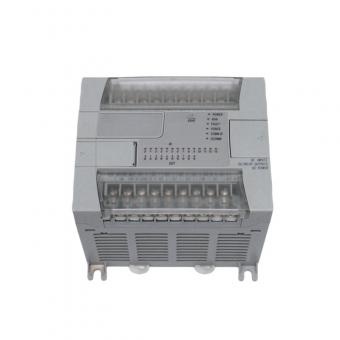 1762-L24BXB
1762-L24BXB
The 1762-L24BXB is commonly used in small control applications that require digital input and output functionality. Question Answer How many I/O points does the controller have? The 1762-L24BXB has 24 I/O points: 16 digital inputs and 8 digital outputs. What are the voltage requirements? It operates on a supply voltage of 120/240V AC. What type of inputs does the controller support? It supports 16 digital inputs, with a voltage rating of 24V DC. What type of outputs does it have? It has 8 relay outputs. Can the controller be expanded? Yes, the 1200 series supports expansion with additional I/O modules. Does it support communication protocols? Yes, it supports RS232/RS485 communication ports for connectivity with other devices. What is the operating temperature range? The operating temperature range is 0 to 55°C (32 to 131°F). What is the memory capacity? The 1762-L24BXB has 6 KB of user program memory and 4 KB of data memory. Is it programmable with standard software? Yes, it is programmable using RSLogix 500 software. What safety features does it include? It includes features like input filtering and watchdog timers to ensure reliable operation. Can the controller be mounted on DIN rail? Yes, it can be DIN rail or panel
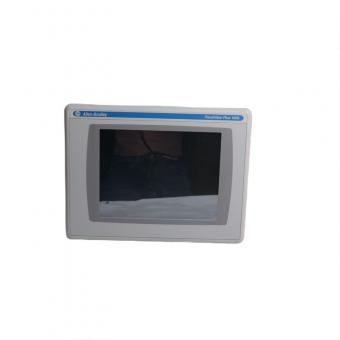 2711PC-T10C4D8
2711PC-T10C4D8
The 2711PC-T10C4D8 is a Panelview Plus 6 1000 Operator Terminal. This operator terminal is powered by an external 18-32VDC supply voltage and has a 10.4-inch colored display with embedded Ethernet, RS232, USB communication ports. This operator terminal has a touchscreen input interface. The 2711PC-T10C4D8 is a member of the PanelView Plus 6 1000 series, which are operator terminals designed for monitoring and controlling applications. This specific model features a 10.4-inch color touchscreen display and is designed to provide an intuitive interface for operators to interact with industrial machinery and processes. Key Features: 10.4-Inch Color Touchscreen Display: Provides a clear and vibrant interface with a resolution of 640 x 480 pixels (VGA), allowing operators to easily monitor and control processes. Touchscreen Interface: Equipped with an analog resistive touchscreen, which supports touch inputs for navigating through applications and controlling machines. Integrated Communication: Includes built-in communication options such as Ethernet, USB, and RS-232 ports, making it easy to connect to various networks and peripheral devices. Product Family: PanelView Plus 6 Compact Terminals Product Type: PanelView Plus 6 600 Compact Terminals Operator Input: Touch Display Type: Color active-matrix TFT Lifecycle status: End of life Backlight: CCFL, 50,000 hours min at 25 掳 C (77 掳F), field replaceable Display Area: 211 x 158 mm (8.3 x 6.2 in.) Resolution: 640 x 480, 18-bit color graphics Touch: Analog Resistive Internal memory: 512MB Flash Memory / 512 MB Random Access Memory Integrated ports: Ethernet, RS-232, 2 USB host Input Voltage range: 18-32VDC Part Number/Catalog No. 2711PC-T10C4D8 Product Line PanelView Plus 6 Compact Display Color Color Input Type Touchscreen Communication Ethernet and RS-232 Input Power 24 Volts DC
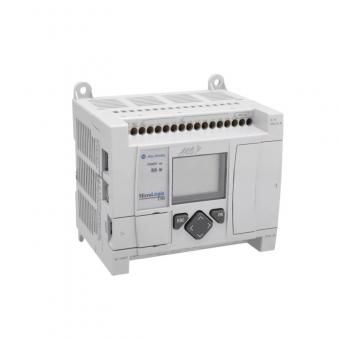 1763-L16BBB
1763-L16BBB
The 1763-L16BBB is a 1100 Controller. This controller is powered by an external supply voltage of 24VDC with built-in Twelve (12) 24VDC discrete inputs, Two (2) 0-10 VDC analog inputs, Two (2) Relay Outputs, and Four (4) FET Outputs. This controller has a built-in RS232 and Ethernet communication interfaces. The 1763-L16BBB has an internal power circuitry that requires an external supply voltage of 24VDC. It has a variety of input and output devices such as Ten (10) 24VDC discrete inputs, Two (2) 10VDC analog inputs, Two (2) relay outputs and Four (4) 24VDC FET outputs. The embedded input channels may be operated at 14 - 26.4VDC (+10%) at 65 °C/149 °F or 14 - 30VDC (+25%) at 30 °C/86 °F voltage range. Included in the Ten (10) input channels are Four (4) high-speed input channels, locates at channels 0-3. It accepts input switching frequency of 0 Hz-20 kHz or 0 Hz-40 kHz. Inputs 4 to 10 are standard DC inputs with switching frequency of 0Hz-1kHz. Communication Port 1 RS-232 / 485; 1 Ethernet Dimensions 3.5 x 4.33 x 3.43 inches Digital Outputs Two (2) Relay; Four (4) FET Digital Inputs (10) 24VDC Display Type LCD Analog Inputs (2) Voltage Input Point Count 16 Points Part Number/Catalog No. 1763-L16BBB Input Power 24V DC ( -15%, +10%) Class 2 SELV Product Type Programmable Controller Brand 1763-L16BBB Memory: 1763-MM1 Analog Voltage Range 0-10VDC Analog Data Type 10-bit unsigned integer Analog Resolution 10 Bit Relay Output operating Voltage: 125V DC / 120/240 VAC FET Output Voltage range: 24VDC Protocol: DF1 / MODBUS / Ethernet I/P Power Consumption 35 Watts UPC 10662074023049
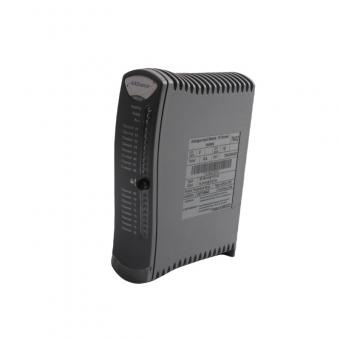 T9432
T9432
The ICS Triplex T9432 Analog Input Module is part of the Trusted® TMR (Triple Modular Redundant) system by ICS Triplex, designed for use in high-integrity safety applications. It provides reliable and fault-tolerant analog input operations, making it ideal for critical industrial environments like oil and gas, power generation, and chemical processing. Specification Details Manufacturer ICS Triplex Model T9432 Type Analog Input Module Number of Input Channels 32 channels Input Range Configurable per channel for various voltage or current signals Input Types Voltage, current, and resistance inputs Resolution 16-bit Input Signal Ranges -10V to +10V, 0-5V, 0-10V, 4-20mA, etc. (configurable based on system requirements) Channel Isolation Channels are isolated to prevent cross-channel interference Fault Tolerance Triple Modular Redundant (TMR) architecture ensures continued operation even in the event of a fault Diagnostics Continuous self-test and diagnostics for fault detection Accuracy Typically ±0.1% of full-scale input range Common Mode Rejection High common-mode rejection for noisy industrial environments Input Overvoltage Protection Yes, each channel is protected from voltage surges Power Consumption Low power consumption typical for high-density modules Channel Sampling Rate High-speed input processing for real-time data acquisition Environmental Specifications Designed to operate in harsh environments with high reliability Operating Temperature -5°C to 60°C (23°F to 140°F) Storage Temperature -25°C to 70°C (-13°F to 158°F) Humidity 5% to 95% RH (non-condensing) Dimensions (H x W x D) Standard Trusted® form factor, fitting the ICS Triplex chassis Weight Approximately 1-2 kg Additional Features: TMR (Triple Modular Redundancy): Each input is processed by three independent processors, with majority voting to ensure reliable input data. Hot-swappable: Modules can be replaced without shutting down the system, providing high availability. Configurable Input Channels: Allows customization for various analog input signals like voltage or current, ensuring flexibility. Diagnostics and Fault Detection: Continuous self-testing and diagnostics for channel health, providing alarms in case of faults. The ICS Triplex T9432 is commonly used in safety-critical applications, such as emergency shutdown systems, fire and gas detection, and turbine control, where input integrity is crucial for the operation of safety systems.
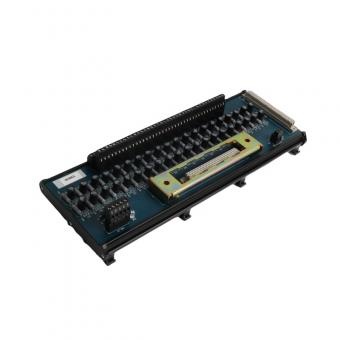 T8830
T8830
The ICS Triplex T8830 Trusted 40 Channel Analog Input Module is designed for use in the Trusted® system family, providing high-performance analog signal processing for industrial control and safety systems. This module is essential for acquiring and processing analog signals from various field devices and sensors. Specification Details Manufacturer ICS Triplex Model T8830 Type Analog Input Module Number of Channels 40 Channels Input Signal Types Analog signals (typically 4-20 mA or 0-10 V) Input Voltage Range Varies depending on signal type; typically 0-10V or 4-20mA Accuracy High accuracy for precise measurement, typically ±0.1% of full scale Resolution High resolution, details dependent on configuration Sampling Rate High-speed sampling for real-time processing, typically in milliseconds Input Isolation Channel-to-channel isolation to prevent cross-talk Fault Tolerance Fully triplicated for fault tolerance and reliability Self-Diagnostics Continuous self-testing and fault detection Sequence of Events (SOE) Capable of recording time-stamped events with high resolution Time Stamp Resolution Typically 1 millisecond Update Time Fast update rate, typically less than 10 milliseconds Power Supply Requirements Operates on standard system power supply voltages (typically 24V DC) Operating Temperature Range -5°C to 60°C (23°F to 140°F) Non-Operating Temperature Range -25°C to 70°C (-13°F to 158°F) Humidity Typically 5-95% relative humidity, non-condensing Dimensions Standard module size for Trusted® systems Weight Approximately 1.4 kg (3 lbs) (may vary) Features: High Channel Density: The module supports up to 40 analog input channels, providing extensive signal monitoring capabilities in a compact form factor. Fault-Tolerant Design: Features a triplicated architecture to ensure high availability and reliability, essential for safety-critical applications. High Accuracy and Resolution: Provides precise measurement of analog signals with high accuracy, critical for accurate control and monitoring. Real-Time Processing: Fast sampling and update rates ensure timely processing of analog signals, enabling real-time system responses. Self-Diagnostics: Includes self-diagnostic capabilities to continuously monitor module health and detect faults, contributing to system reliability. Event Recording: Capable of capturing and time-stamping events with high resolution for detailed analysis and troubleshooting. The ICS Triplex T8830 Analog Input Module is a vital component for ICS Triplex Trusted® systems, offering high-density, accurate, and reliable analog signal processing to support a wide range of industrial applications.
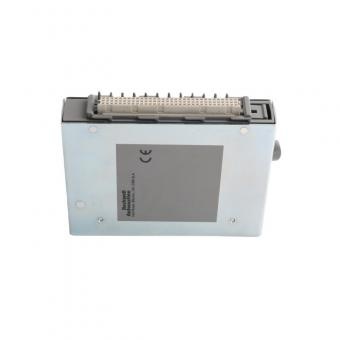 T8153C
T8153C
The Trusted Communication Interface Adapter T8153 is specifically designed for direct connection to the rear of a Trusted Communication Interface Module, housed in a Trusted Controller Chassis T8100. This assembly facilitates communication with remote systems by providing an interface connection. It connects to the Trusted Communication Interface Module via a 78+2-way Inverse DIN41612 M-type connector (SK1). Key features include: ■Enables seamless external system communication with a Trusted System. ■Simple installation process, connecting directly to the rear of the Trusted Communication Interface. ■Offers two 10/100BaseT connections. ■Provides four RS422/485 connections. ■Includes two RS232 connections, with one offering full RS232 functionality. The Ethernet ports on the Gateway Module do not function optimally with the T8153 Communications Interface Adapter. While most ports can be made to work by manually setting the arbitration to 100BaseT and full duplex, it is recommended to use the T8173 Gateway Adapter instead. The T8173 is more suitable for use with the Gateway Module and also provides connections for keyboard, video, and mouse ports.
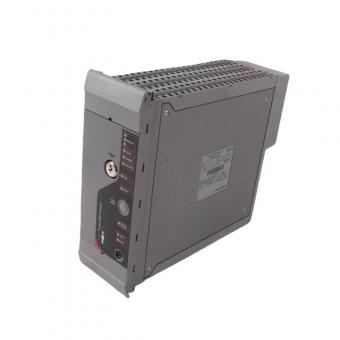 T8111C
T8111C
The ICS Triplex T8111C Trusted TMR Processor Module is part of the Trusted Triple Modular Redundant (TMR) system, which is designed for high-integrity and high-availability industrial applications, such as safety-critical systems in process industries. Below are the key details of this processor module: Key Features: Triple Modular Redundant (TMR) Architecture: This ensures high reliability by using three independent microprocessors that vote on each action to protect against any faults in the system. High Availability: Provides uninterrupted service even if one processor fails, continuing to operate with the other two. Fault Tolerance: The module has fault-tolerant capabilities with automatic diagnostics and fault detection to ensure continuous operation. Scalability: Supports distributed configurations, making it flexible to expand as system demands increase. Processor Speed: Uses high-speed processors capable of handling real-time data processing with minimal latency. Data Integrity: Ensures secure data handling and accurate processing through its voting system and redundancy. Environmental Resilience: Designed for operation in harsh environments with robust temperature, humidity, and vibration tolerances. Technical Specifications: Processor: Triple microprocessors with fault-tolerant voting logic. Communication: Supports multiple communication protocols for interfacing with other system modules and external devices. Diagnostic Capabilities: Continuous health monitoring and diagnostics to ensure system integrity. Power Supply: Operates within typical industrial power standards, designed to handle input variations without performance degradation. Operating Temperature: Typically supports a wide range of industrial temperatures. This module is used in high-demand environments such as oil and gas, power generation, and manufacturing, where system reliability and safety are critical.
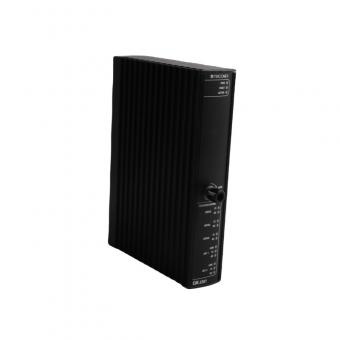 CM 3201
CM 3201
The ICS Triplex CM 3201 Communication Module is a critical component used in ICS Triplex Trusted® systems for facilitating communication between various modules and external systems. This module plays a key role in ensuring seamless data exchange and integration within complex industrial control systems. Specification Details Manufacturer ICS Triplex Model CM 3201 Type Communication Module Function Facilitates communication between Trusted® modules and external systems Communication Protocols Typically supports multiple industrial communication protocols (details may vary based on configuration) Connection Type Standard interfaces for connecting to other modules or systems Redundancy May include features for redundancy to ensure high availability and reliability Power Supply Requirements Operates on standard system power supply voltages (typically 24V DC) Isolation Provides electrical isolation to protect communication integrity Operating Temperature Range Typically -5°C to 60°C (23°F to 140°F) Non-Operating Temperature Range Typically -25°C to 70°C (-13°F to 158°F) Humidity Typically 5-95% relative humidity, non-condensing Dimensions Standard module size for Trusted® systems Weight Approximately 1.5 kg (3.3 lbs) (may vary) Features: Seamless Communication: Ensures reliable data exchange between Trusted® modules and other external systems, facilitating smooth operation and integration within industrial control environments. Protocol Support: Supports various industrial communication protocols, allowing integration with a wide range of external systems and devices. High Availability: Designed to include redundancy features, enhancing the reliability and availability of the communication network. Electrical Isolation: Provides isolation between communication channels and external systems, protecting against electrical interference and faults. Robust Design: Built to withstand industrial conditions, including variations in temperature and humidity, ensuring stable performance in harsh environments. Applications: Industrial Automation: Used in process control and automation systems to ensure effective communication between different control modules and external systems. Safety Systems: Facilitates integration of safety-critical systems where reliable communication is essential for maintaining operational safety and integrity. High-Availability Systems: Suitable for applications requiring high levels of system availability and redundancy to prevent downtime and ensure continuous operation. The ICS Triplex CM 3201 Communication Module is essential for maintaining efficient and reliable communication within ICS Triplex Trusted® systems, supporting a wide range of industrial applications where robust and seamless data exchange is crucial.
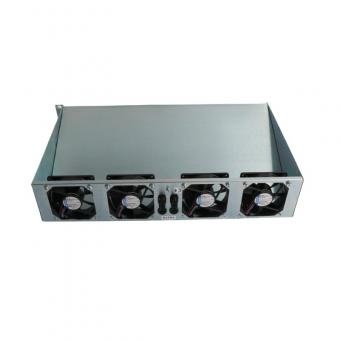 T8270
T8270
The T8270 is a 24 Vdc fan assembly designed to provide forced cooling for ICS Triplex Trusted systems. It is rack-mounted and installed to maintain proper airflow and temperature control within a module rack. The Trusted Fan Tray 24 Vdc Rack Mounted consists of four vertically mounted fans positioned at the rear of a 2U-high chassis. The chassis also includes a baffle to prevent airflow from passing through the module chassis directly above the Fan Tray. The fans exhaust air into the rear of the system cabinet, where it is drawn upward and expelled by roof-mounted fans. The main power supply for the Fan Tray is provided by a Trusted Power Distribution Unit, specifically the 24 Vdc MCB T8292, through a Trusted Fan Power Cable (TC-011-01). This cable is also used to interconnect the Fan Trays and Roof Fans within a Trusted System module rack. A fully populated rack includes five Fan Trays and may also have a Roof Fan Unit. This is the maximum number of Fan Trays and Roof Fan Units that can be powered by a single Trusted Power Distribution Unit miniature circuit breaker (MCB).
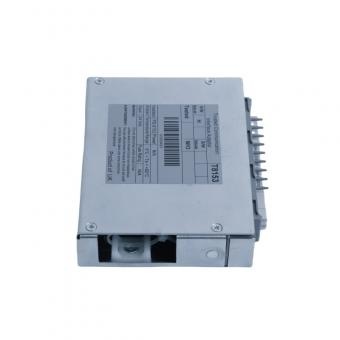 T8153
T8153
The ICS Triplex T8153 Communication Interface Adapter is designed to facilitate communication between the ICS Triplex Trusted® system and various external devices and networks. As part of the Trusted® range, the T8153 provides a reliable and fault-tolerant communication solution that is essential for safety-critical applications. It ensures data integrity and high availability while maintaining communication links between the control system and external devices or other systems. Specification Details Manufacturer ICS Triplex Model T8153 Type Communication Interface Adapter Functionality Provides communication between Trusted® system and external devices/networks Communication Protocol Supports multiple protocols (e.g., Modbus, Ethernet, RS232/RS485, depending on configuration) Fault Tolerance Fully fault-tolerant and designed for high reliability in safety-critical systems Number of Ports Multiple communication ports, depending on configuration Interface Type Serial, Ethernet, or other communication interfaces (specific to configuration) Data Transfer Rate Depends on the protocol (e.g., up to 100 Mbps for Ethernet-based communication) Diagnostic Features Comprehensive diagnostics for communication status and fault detection Redundancy Supports redundancy for continuous operation, even in case of adapter failure Power Supply Powered through the Trusted® system backplane Compatibility Compatible with other Trusted® system components and third-party devices using standard communication protocols Data Integrity Ensures high data integrity with error checking and fault reporting Hot-Swappable Yes, can be replaced without system shutdown to maintain uptime Operating Temperature Range -5°C to 60°C (23°F to 140°F) Storage Temperature Range -25°C to 70°C (-13°F to 158°F) Humidity 5% to 95% RH (non-condensing) Certifications SIL3 certified for safety applications Dimensions (H x W x D) Standard Trusted® form factor, designed to fit within the system chassis Weight Approx. 1.2 kg Shipping Weight Approx. 1.8 kg Additional Features: Fault-Tolerant Communication: The T8153 is designed with fault-tolerant features to ensure that critical data is transmitted even in the presence of communication errors or hardware faults. This is crucial in safety-critical environments. Real-Time Data Transfer: Supports real-time data transfer between the ICS Triplex system and external devices, ensuring timely communication for control and monitoring applications. Protocol Flexibility: The module can be configured to support a wide range of communication protocols, making it adaptable for various system architectures and third-party device integration. Self-Diagnostics: The T8153 constantly monitors its communication channels and reports diagnostic information to the system. This helps in identifying and resolving issues before they affect system operation. High Data Availability: Ensures high data availability through redundancy and error-handlin...
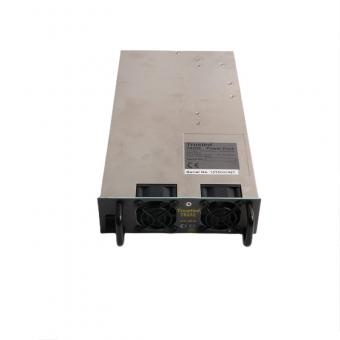 T8232
T8232
The ICS Triplex T8232 is a Trusted TMR Power Pack Module, designed to provide reliable power for the ICS Triplex Trusted system, which is known for its use in safety-critical and high-reliability industrial applications. The module plays a critical role in delivering a stable, redundant power supply to the system, ensuring continuous operation even in the event of a fault. Key Specifications: Product Type: Trusted TMR Power Pack Module Voltage Input Range: 90 to 264V AC, 47 to 63 Hz or 110 to 300V DC Output Voltage: 24V DC (Nominal) Power Output: Up to 500W Fault Tolerance: Triple Modular Redundancy (TMR) design for reliable and redundant power delivery Safety Integrity Level (SIL): Rated for SIL3 applications (per IEC 61508) Diagnostics: Provides real-time monitoring of power health, fault detection, and automatic switchover in case of failure Redundancy: Supports redundant power configurations for uninterrupted power supply to critical systems Operating Temperature: -10°C to +70°C Non-operating Temperature: -40°C to +85°C Operating Humidity: 5% to 95% RH, non-condensing Dimensions: Standard Trusted system module size Weight: 1.6 kg approximately Features: Triple Modular Redundancy (TMR): Ensures that the power supply remains stable and reliable through three independent power supply circuits, enhancing system fault tolerance. High Integrity and Safety: Designed for use in safety-critical systems, ensuring continuous power supply in demanding environments and complying with SIL3 safety standards. Advanced Diagnostics: Continuous monitoring of power status, fault conditions, and performance to detect issues early and maintain system integrity. Automatic Failover: If one power supply fails, the module automatically switches to the redundant supply without interrupting the system. Wide Input Voltage Range: Supports both AC and DC inputs, offering flexibility for various industrial power configurations. The ICS Triplex T8232 is essential for Trusted systems operating in environments where power stability is critical, such as oil & gas, chemical, and power generation industries, ensuring safe and reliable operation even in harsh conditions.
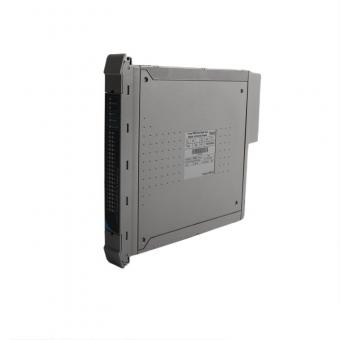 T8403C
T8403C
The ICS Triplex T8403C is a Trusted TMR (Triple Modular Redundant) 24Vdc Digital Input Module designed for high-reliability, safety-critical applications in industrial control systems. This module is part of the Trusted system by ICS Triplex, known for its advanced fault tolerance and high availability features, ensuring continuous and reliable operation even in demanding environments. Key Specifications: Product Type: Trusted TMR 24Vdc Digital Input Module (with conformal coating for enhanced protection) Voltage Range: 24V DC (Nominal) Number of Input Channels: 40 isolated digital inputs Input Signal Isolation: Galvanic isolation per channel Fault Tolerance: Triple Modular Redundancy (TMR) design Safety Integrity Level (SIL): Certified for SIL3 applications according to IEC 61508 Input Type: Digital inputs, suitable for 24V DC signals Diagnostics: Extensive diagnostics for detecting faults such as open circuits, short circuits, and stuck signals Operating Temperature: -5°C to +60°C (23°F to 140°F) Non-operating Temperature: -25°C to +70°C (-13°F to 158°F) Operating Humidity: 5% to 95% RH (non-condensing) Conformal Coating: Provides protection against environmental factors like moisture, dust, and chemicals Dimensions (LxWxH): Standard Trusted module dimensions Weight: Approximately 1.14 kg Features: Triple Modular Redundancy (TMR): Ensures high reliability by using three independent input circuits per channel, with fault detection and voting mechanisms to maintain system integrity even if one input channel fails. Conformal Coating: The module is coated to withstand harsh environmental conditions, enhancing its durability and reliability in challenging environments. SIL3 Certification: Complies with SIL3 standards, making it suitable for safety-critical applications where system reliability is paramount. Advanced Diagnostics: Provides real-time monitoring and diagnostics to detect and report faults in input channels, helping to ensure continuous operation and support predictive maintenance. High Reliability: Designed for industries requiring robust and reliable digital input solutions, The ICS Triplex T8403C module is a key component for achieving high safety and reliability in industrial control systems, offering enhanced protection and fault tolerance for critical input signals.
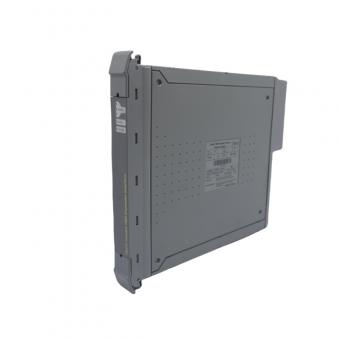 T8311
T8311
The ICS Triplex T8311 is a Trusted TMR Expander Interface designed to extend the Trusted Triple Modular Redundant (TMR) system architecture. This module serves as a critical component for the extension of input/output (I/O) functionality to expander chassis, providing enhanced scalability for the system. Key Specifications: Product Type: Trusted TMR Expander Interface Voltage Range: 20 to 32V DC Heat Dissipation: 40W Compatible Chassis: T8311 Maximum Load: 40W Module Clock Speed: 50MHz Expander Bus Data Rate: 250Mbps I/O Interface: Expander chassis backplane Operating Temperature: -5°C to 60ºC (13°F to 140°F) Non-operating Temperature: -25°C to 70°C (-25°F to 158°F) Operating Humidity: 5 to 95% RH Dimensions (L x W x H): 30.3 cm x 3.1 cm x 26.6 cm Weight: 1.14 Kg This module is essential for large-scale, high-reliability industrial control systems, allowing for modular system expansion while maintaining the integrity and redundancy provided by the TMR architecture.
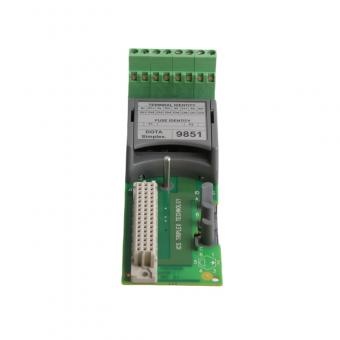 T9851
T9851
The ICS Triplex T9851 is a Trusted TMR (Triple Modular Redundant) Digital Output Module designed for high-reliability and safety-critical applications in industrial automation systems. This module is part of the ICS Triplex Trusted system, known for its fault-tolerant architecture, providing three isolated, independent output channels per point, ensuring fault tolerance and system availability. Key Specifications: Product Type: Trusted TMR Digital Output Module Number of Output Channels: 40 digital outputs Output Voltage: 24V DC (nominal) Output Current: 0.5A per channel Fault Tolerance: Triple Modular Redundancy (TMR) ensures continuous operation even in the event of a fault in one output channel. Safety Integrity Level (SIL): Rated for SIL3 applications according to IEC 61508 Output Isolation: Each output is galvanically isolated Redundancy: Provides fault tolerance with three independent output circuits per channel, with voting to ensure reliable output Diagnostics: Continuous real-time diagnostics to detect faults in output channels and circuitry Operating Temperature: -5°C to +60°C (23°F to 140°F) Non-operating Temperature: -25°C to +70°C (-13°F to 158°F) Operating Humidity: 5% to 95% RH, non-condensing Dimensions: Standard Trusted module dimensions Weight: Approximately 1.14 kg Features: Triple Modular Redundancy (TMR): Provides system integrity by using three independent circuits per output point, ensuring high availability even in the presence of faults. SIL3 Certified: Suitable for use in the most demanding safety-critical environments, complying with IEC 61508 for SIL3. Diagnostics and Fault Reporting: The module continuously monitors output states and wiring to detect short circuits, open circuits, and other failure modes, providing detailed fault information. Fast Response Time: The T9851 offers rapid switching speeds suitable for real-time control applications. High Reliability: The T9851 is designed for industries that require the highest level of operational reliability, such as oil & gas, power generation, and chemical processing. This digital output module is widely used in applications where the safety and continuous operation of systems are paramount, offering enhanced protection and reliability for critical processes.
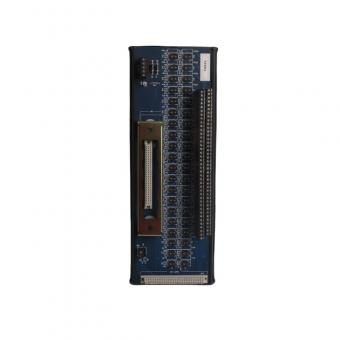 T8800
T8800
The ICS Triplex T8800 Trusted 40 Channel 24V Digital Input Module is part of the Trusted® TMR (Triple Modular Redundant) system by ICS Triplex, designed for highly reliable and fault-tolerant operations in critical control and safety applications. This module supports 40 digital input channels, each monitored using the triple-modular redundancy approach to ensure the integrity and reliability of input data. Parameter Specification Specification Details Manufacturer ICS Triplex Model T8800 Type Digital Input Module Number of Input Channels 40 channels Input Voltage Range 18 to 32 V DC (Nominal 24 V DC) Input Current (per Channel) 4 mA at 24 V DC Fault Tolerance Triple Modular Redundant (TMR) architecture with majority voting Channel Isolation Fully isolated channels to prevent crosstalk and interference Input Signal Delay 1 ms (typical) Diagnostic Coverage Extensive diagnostics including stuck-on, stuck-off, and out-of-range detection Power Supply Supplied through Trusted® system backplane Input Type Dry contact or transistor-based inputs, suitable for safety-critical signals On-State Voltage Greater than 18 V DC Off-State Voltage Less than 5 V DC On-State Current 4 mA (minimum) Off-State Current 1 mA (maximum) Channel-to-Channel Crosstalk Negligible due to high isolation Diagnostics Built-in diagnostics and self-testing for fault detection and reporting Hot-Swappable Yes, the module can be replaced while the system is in operation Power Consumption 10 W (typical) Operating Temperature -5°C to 60°C (23°F to 140°F) Storage Temperature -25°C to 70°C (-13°F to 158°F) Operating Humidity 5% to 95% RH (non-condensing) Vibration and Shock Compliant with industrial standards for harsh environments Safety and Certification SIL3 Certified for safety-critical applications Dimensions (H x W x D) Standard Trusted® module form factor, fitting the ICS Triplex chassis Weight Approximately 1.5 kg Additional Features: TMR (Triple Modular Redundancy): Each input is processed by three independent subsystems, providing a majority voting system to ensure the integrity of input signals even in the event of a subsystem fault. Field Wiring Monitoring: Optional line monitoring can detect open and short circuits on field wiring, improving diagnostics and maintenance planning. Fast Update Rate: With a typical input delay of 1 ms, the module supports real-time input signal processing for safety-critical applications. Sequence of Events (SOE) Support: The module can capture and time-stamp digital input events with a high degree of accuracy, typically at 1 ms resolution. Self-Test Capability: Built-in self-test ensures the module's integrity and fault-free operation, reducing the likelihood of undetected faults. Applications: The ICS Triplex T8800 Trusted 40 Channel 24V Digital Input Module is ideal for use in industries such as: Oil & Gas: Emergency shutdown systems, fire and gas detection. Power Generation: Turbine control and monitoring. Chemical Proce...
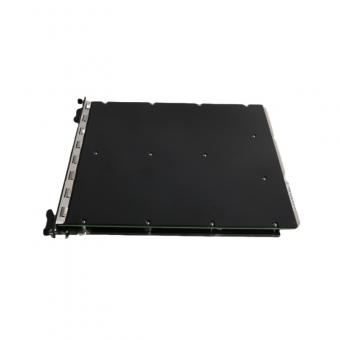 AI3281
AI3281
1.The Triconex AI3281 is an analog input module designed for industrial automation systems. It is used in safety-critical applications and helps to process analog signals from various sensors, converting them into digital data for monitoring and control purposes within the Triconex safety system. 2. What are the technical specifications of the AI3281 Analog Input Module? Key specifications include: ■Part Number: AI3281 ■Manufacturer: Triconex (Schneider Electric) ■Channels: 32 channels for analog input ■Input Type: Supports various analog signals (e.g., 4-20mA) ■Function: High-accuracy signal processing for monitoring ■Safety Rating: Suitable for safety and critical process control 3. What are common applications of the AI3281 Analog Input Module? The AI3281 module is typically used in: Safety Instrumented Systems (SIS) Process control systems in industries such as oil & gas, petrochemical, and power generation High-integrity systems that require fault-tolerant solutions
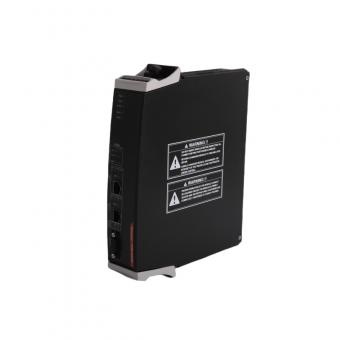 TCM 4355X
TCM 4355X
The TRICONEX TCM 4355X Tricon Communication Module is designed for integrating and communicating with external systems within the Tricon control environment. Here's a detailed overview: TRICONEX TCM 4355X Tricon Communication Module Function: Purpose: Provides communication capabilities between the Tricon control system and other networks or devices, enabling integration and data exchange. Role: Facilitates communication for real-time control and monitoring by supporting various industrial communication protocols. Specifications: Ports and Interfaces: Communication Protocols: Ethernet/IP: For network-based communication. Modbus: For serial communication with field devices. Other protocols depending on system configuration. Data Rates: Designed to handle high-speed data transfer, essential for real-time operations. Redundancy: Includes redundancy features to ensure continuous operation and high availability of communication links. Typically features multiple communication ports for connecting to different networks or systems. Supports standard industrial protocols such as Modbus, Ethernet/IP, or proprietary Triconex protocols. Communication Protocols: Ethernet/IP: For network-based communication. Modbus: For serial communication with field devices. Other protocols depending on system configuration. Data Rates: Designed to handle high-speed data transfer, essential for real-time operations. Redundancy: Includes redundancy features to ensure continuous operation and high availability of communication links. Features: Diagnostic Capabilities: Built-in diagnostics for monitoring communication health, detecting issues, and troubleshooting. Configuration: Configurable via Triconex system software or external configuration tools to meet specific communication requirements. Integration: Seamlessly integrates with Tricon control modules, I/O modules, and other system components for a comprehensive control solution.
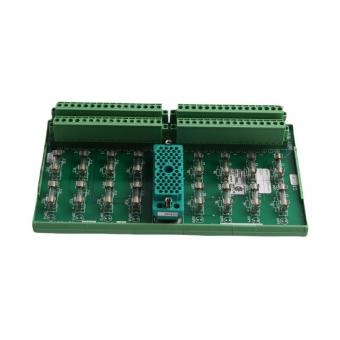 9668-110
9668-110
To interface with each 32-point relay output module, you will need two termination panels (or cables). You have the flexibility to mix and match any combination of the termination products listed. For instance, you can use either two 9668-110 panels, two 9651-110 basic panels, or one of each (one 9668-110 panel and one 9651-110 basic panel). Termination Option: Non-Commoned, Normally Open (3636R, 3636T) Standard Termination Panel: 9668-110 The 9668-110 is a non-commoned relay output termination panel with the following features: ■16 LOAD+ and LOAD– terminals ■16 PWR+ and PWR– terminals ■16 fuses Each 9668-110 panel supports 16 points. Since the relay output modules have 32 points, you will need to use two termination panels for each module. The 9668-110 panels come with two sets of labels: 1-16 and 17-32. For instructions on applying these labels
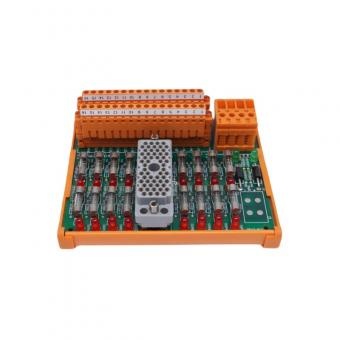 9563-810
9563-810
1.The Triconex 9563-810 is a digital input termination panel used in Triconex safety and control systems. It provides the necessary interface for connecting digital input signals from field devices to the Triconex control system. 2. What are the technical specifications of the 9563-810 Digital Input Termination Panel? Key specifications include: ■Part Number: 9563-810 ■Type: Digital Input Termination Panel ■Input Channels: Supports multiple digital input channels (refer to the product manual for the exact number) ■Input Type: Digital signals from field devices ■Mounting: Designed for installation in control panels or enclosures ■Compatibility: Works with Triconex control modules 3. What are common applications of the 9563-810 Termination Panel? ■The termination panel is used in: ■Safety Instrumented Systems (SIS) ■Process control systems in industries such as oil and gas, petrochemical, and power generation ■Industrial automation where reliable digital signal processing is required
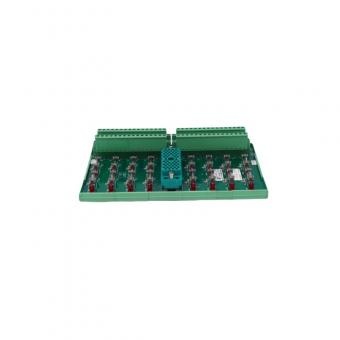 7400169-310 9662-1XX
7400169-310 9662-1XX
1.The Triconex 7400169-310 9662-1XX is a terminal panel used as part of the Triconex safety and control system. It provides a connection interface between field devices and Triconex modules, facilitating communication and signal routing. 2. What are the technical specifications of the Triconex 7400169-310 9662-1XX Terminal Panel? Key specifications include: ■Part Number: 7400169-310 9662-1XX ■Manufacturer: Triconex (Schneider Electric) ■Function: Terminal panel for field device connections ■Compatibility: Designed for use with Triconex safety system modules ■Channels: Supports multiple I/O connections ■Dimensions and Mounting: Panel designed for easy integration into control cabinets 3. What is the primary purpose of the Triconex Terminal Panel? The terminal panel serves as a central interface for connecting field devices such as sensors, switches, and controllers to the Triconex safety and control system. It enables efficient signal distribution and reliable data transmission between devices and the main control modules.
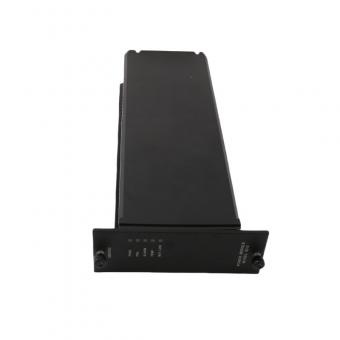 8312
8312
1.The Triconex 8312 is a power module designed to supply 230 VAC input power to Triconex control systems. It provides a 175-watt output, ensuring reliable power delivery for safety-critical industrial applications. 2. Caution: The Model 8312 Power Module should not be used in Tricon systems located in hazardous areas that require compliance with ATEX standards. 3. What are common applications of the Triconex 8312 Power Module? The power module is typically used in: ■Safety Instrumented Systems (SIS) ■Process control systems in industries like oil and gas, petrochemical, and power generation ■Critical systems where reliable and uninterrupted power supply is essential for safety and control equipment.
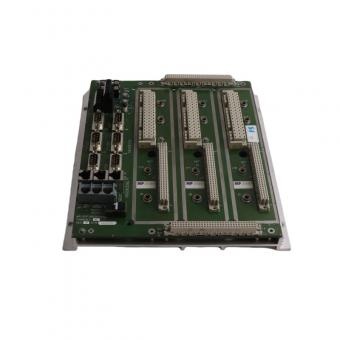 7400207-001
7400207-001
The TRICONEX 7400207-001 Main Processor Baseplate is an essential component of the Tricon safety and control system. Here’s an overview of its key features and specifications: TRICONEX 7400207-001 Main Processor Baseplate Function: Purpose: Acts as the central processing unit for the Tricon system, handling core processing tasks and communication with other system modules. Integration: Houses and connects the main processor and various I/O modules, facilitating data exchange and system control. Specifications: Processor: Contains the main processor unit responsible for executing control and safety algorithms. Communication: Provides communication interfaces for connecting with other system components, including I/O modules and external systems. Expansion: Supports expansion by accommodating additional modules or interfaces as required by the system configuration. Features: High Reliability: Designed for high reliability and redundancy to ensure continuous operation in safety-critical applications. Diagnostics: Includes built-in diagnostics for monitoring system health and detecting faults. Modular Design: Allows for easy integration and replacement of components, enhancing system flexibility and maintainability. Compatibility: System: Specifically designed for use with Tricon systems, ensuring compatibility with other Tricon modules and components. Integration: Can be integrated with various I/O and communication modules to create a complete control and safety solution. Environmental: Operating Conditions: Designed to operate within industrial environments, with considerations for factors such as temperature and vibration. Application: Industries: Used in industries requiring high reliability and safety, such as chemical processing, oil and gas, and power generation.
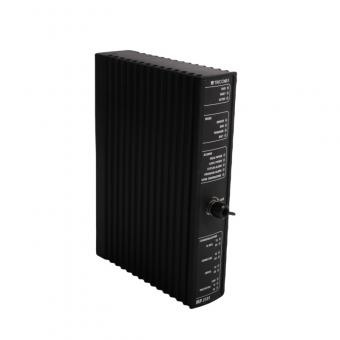 MP 3101
MP 3101
The TRICONEX MP 3101 Main Processor Module is a crucial component of the Tricon safety and control system, responsible for executing critical control and safety functions. Here are the details: TRICONEX MP 3101 Main Processor Module Function: Purpose: Handles the primary processing tasks within the Tricon system, including execution of control algorithms, safety functions, and system diagnostics. Role: Serves as the central processing unit for the system, ensuring that control and safety operations are performed accurately and reliably. Specifications: Processor: Equipped with a high-performance processor designed for real-time control and safety operations. Memory: Includes memory for storing program code, configuration data, and runtime data. I/O Interfaces: Connects to various I/O modules and system components to facilitate data exchange and system control. Features: Redundancy: Often features built-in redundancy to ensure high availability and fault tolerance in safety-critical applications. Diagnostics: Provides diagnostic capabilities for monitoring system health, detecting faults, and performing self-tests. Communication: Supports communication with other modules and external systems, ensuring seamless integration and data exchange. Compatibility: System: Designed for use within the Tricon safety and control system, compatible with other Tricon modules and components. Integration: Integrates with Tricon I/O modules, communication modules, and other system components to form a complete control and safety solution. Environmental: Operating Conditions: Built to operate in industrial environments with considerations for temperature, vibration, and other environmental factors. Application: Industries: Used in various industries where high reliability and safety are required, such as chemical processing, oil and gas, power generation, and manufacturing.
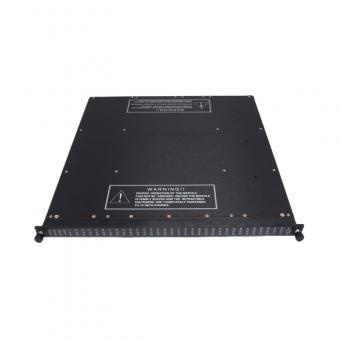 3625
3625
The TRICONEX 3625 is a Digital 24VDC Output Module designed for use with the Triconex Tricon safety and control system. This module provides reliable and controlled output signals for various industrial applications, where digital control and actuation are required. Key Specifications: Product Type: Digital Output Module Model: 3625 Number of Channels: 16 channels Output Type: Digital outputs Output Voltage: 24V DC Output Current: Typically 0.5A per channel (verify with specific module documentation) Isolation: Galvanic isolation between output channels and the control system Fault Tolerance: Designed to ensure reliable operation in safety-critical applications Safety Integrity Level (SIL): Suitable for use in safety-critical environments, typically compliant with SIL3 standards per IEC 61508 Operating Temperature: -40°C to +70°C (-40°F to +158°F) Non-operating Temperature: -40°C to +85°C (-40°F to +185°F) Operating Humidity: 5% to 95% RH (non-condensing) Dimensions: Standard Triconex module size Weight: Approximately 1.5 kg (varies based on configuration) Features: Digital Outputs: Provides 16 digital outputs for controlling field devices, actuators, or other digital equipment. Galvanic Isolation: Ensures electrical isolation between output channels and the control system to protect against noise and electrical interference. High Reliability: Built to meet rigorous reliability standards, ensuring consistent performance in demanding industrial environments. Safety Compliance: Meets SIL3 standards, making it suitable for use in safety-critical applications where fault tolerance and system integrity are crucial. Advanced Diagnostics: Includes diagnostic features to monitor the health and status of output channels, aiding in maintenance and troubleshooting The TRICONEX 3625 module is used in various industrial control systems where reliable digital output control is required, such as in process automation, safety systems, and other critical applications.
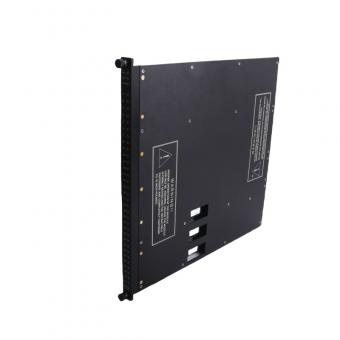 3503E
3503E
The TRICONEX 3503E is a Digital Input Module designed for use with the Triconex Tricon safety and control system. This module is integral for receiving digital signals from various field devices, sensors, and switches, providing crucial input to the control system for monitoring and decision-making processes. Key Specifications: Product Type: Digital Input Module Model: 3503E Number of Channels: 16 channels Input Type: Digital inputs Input Voltage Range: Typically supports 24V DC digital signals Input Type: May include dry contact or 24V DC input signals Isolation: Provides galvanic isolation between input channels and the control system to protect against electrical interference and noise Safety Integrity Level (SIL): Suitable for use in safety-critical applications, typically compliant with SIL3 standards per IEC 61508 Operating Temperature: -40°C to +70°C (-40°F to +158°F) Non-operating Temperature: -40°C to +85°C (-40°F to +185°F) Operating Humidity: 5% to 95% RH (non-condensing) Dimensions: Standard Triconex module size Weight: Approximately 1.5 kg (varies based on configuration) Features: Digital Inputs: Provides 16 channels for receiving digital signals from field devices, enabling monitoring and control of various processes. Galvanic Isolation: Ensures electrical isolation to prevent noise and interference from affecting the control system, enhancing signal integrity and reliability. High Reliability: Designed for demanding industrial environments, ensuring robust performance and reliability in safety-critical applications. Safety Compliance: Meets SIL3 standards, ensuring it is suitable for high-integrity safety applications where reliability and fault tolerance are crucial. Advanced Diagnostics: Includes diagnostic features to monitor the health and status of input channels, assisting in maintenance and troubleshooting. The TRICONEX 3503E module is commonly used in industries where reliable digital signal input is necessary for effective process control, monitoring, and safety. It is particularly suitable for applications in sectors such as power generation, oil and gas, and chemical processing, where safety and reliability are paramount.
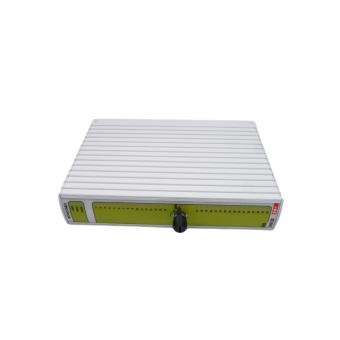 RO 3451 S2
RO 3451 S2
1.The Triconex RO 3451 S2 is a relay output module used in Triconex safety and control systems. It provides reliable relay switching for controlling external devices such as motors, valves, and other actuators in safety-critical applications. 2. What are the technical specifications of the Triconex RO 3451 S2? Key specifications include: ■Part Number: RO 3451 S2 ■Type: Relay Output Module ■Output Channels: Multiple relay channels (check manual for exact number) ■Voltage Rating: Supports a range of output voltages (refer to the manual for specifics) ■Switching Capacity: High-capacity switching for industrial devices ■Safety Compliance: Suitable for use in Safety Integrity Level (SIL) 3 systems 3. What are common applications for the Triconex RO 3451 S2? The module is commonly used to control: ■Motors and actuators ■Valves and pumps ■Industrial equipment in safety and automation systems It is widely utilized in industries such as oil and gas, petrochemical, and power generation.
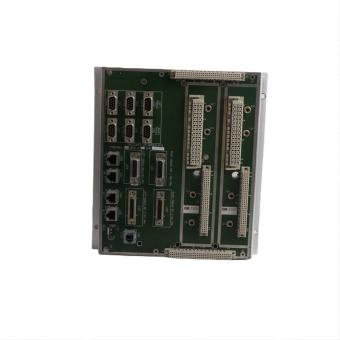 CM2201 7400206-100
CM2201 7400206-100
The TRICONEX CM2201 7400206-100 is a Communication Module Baseplate used with the Triconex Tricon safety and control system. This baseplate is designed to provide a mounting and connection interface for communication modules within the Triconex system, facilitating effective communication and integration with other system components. Key Specifications: Product Type: Communication Module Baseplate Model: 7400206-100 Purpose: Provides the necessary baseplate for mounting and connecting communication modules within the Triconex system. Compatibility: Designed to be compatible with Triconex CM2201 communication modules and other related system components. Mounting: Offers a structured platform for securely mounting communication modules and ensuring proper connectivity. Dimensions: Standard baseplate size designed to fit within Triconex racks or enclosures (specific dimensions can vary). Weight: Typically lightweight; exact weight may vary based on configuration. Features: Mounting Hardware: Includes the baseplate and necessary hardware for installing communication modules. Connectivity: Facilitates the connection of communication modules to the Triconex system, enabling seamless communication between modules and external systems. System Integration: Supports the integration of communication modules, allowing for effective data exchange and system operation. Durability: Constructed to withstand industrial environments, providing reliable performance and long-term durability. The TRICONEX CM2201 7400206-100 Communication Module Baseplate is crucial for the assembly and configuration of Triconex control systems, enabling the installation and connection of communication modules. For specific details regarding compatibility, installation, and configuration, consulting the manufacturer's documentation or contacting Triconex support is recommended.
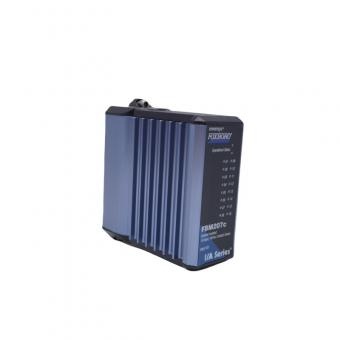 FBM207C
FBM207C
The Foxboro FBM207C Voltage Monitor with 48 V DC contact sense is designed to monitor and manage voltage levels within a fieldbus control system. Here’s an overview of its features and specifications: Key Features: Voltage Monitoring: Designed to monitor DC voltage levels, specifically 48 V DC. Contact Sense: Equipped with contact sensing capabilities to detect the presence or absence of voltage at specific points. Compatibility: Intended for use with the Foxboro FBM207C Fieldbus Module, integrating seamlessly into process control systems. Technical Specifications: Voltage Range: Monitors 48 V DC voltage levels. Contact Sense Functionality: Detects voltage presence or absence, providing status information and alerts for system diagnostics. Integration: Works with the FBM207C module to provide voltage monitoring and diagnostics within the control system. Power Requirements: Operates on the system's existing power supply, typically 48 V DC. Applications: Process Control Systems: Useful in industrial settings where monitoring of DC voltage levels is critical for system stability and performance. Fieldbus Systems: Ensures reliable operation of field devices and control modules by providing accurate voltage monitoring and diagnostics.
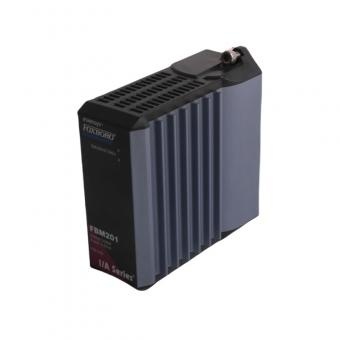 FBM201 P0914SQ
FBM201 P0914SQ
The FOXBORO FBM201 P0914SQ is an 8-channel isolated analog input module used in industrial automation and process control systems. It provides isolated input channels for measuring analog signals, typically in the range of 0-20 mA, from field devices like sensors and transmitters. 2. What are the key features of the FBM201 P0914SQ? Key features include: ■8 isolated analog input channels ■Signal range: 0-20 mA for each channel ■Channel isolation: Electrically isolated channels to prevent cross-talk and interference ■Compact form factor: Fits into standard Foxboro FBM racks ■High accuracy and reliability in capturing and processing analog signals 3. What is the purpose of the isolation in the FBM201 P0914SQ Module? The isolation ensures that each channel operates independently, which reduces the risk of signal interference or cross-talk between input signals. This is critical for maintaining signal integrity and ensuring accurate measurements in industrial environments.
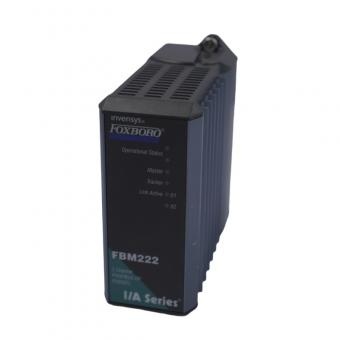 FBM222 P0926TL
FBM222 P0926TL
Overview of the Redundant PROFIBUS Communication Module (FBM222) The FBM222 Redundant PROFIBUS Communication Module acts as an interface between the Foxboro Evo control system and PROFIBUS-DP/PA slave devices, such as motor drives, I/O modules, and field I/O devices. This module supports both single and redundant configurations, providing two PROFIBUS links, each capable of connecting up to 125 slave devices per port when repeaters are used. The FBM222 integrates slave devices with the Foxboro Evo system via Distributed Control Interface (DCI) blocks, ensuring seamless communication and control. In setups with redundant media, two Terminal Assemblies (TAs) are linked using termination cables and the FBM222 Redundant Adapter - Dual Network (P0926XM). These TAs connect to each network through third-party redundant link modules, like the ABB™ Redundant Link Module (RLM01).
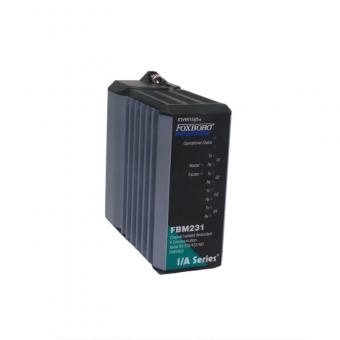 FBM231 P0926GV
FBM231 P0926GV
The Foxboro FBM231 P0926GV is a 4-channel isolated redundant communication module designed for use in industrial process control systems. Here are some key features and specifications typically associated with this module: Key Features: 4 Channels: Supports four independent communication channels. Isolated: Each channel is electrically isolated to prevent interference and ground loops. Redundant Communication: Provides redundancy to enhance reliability and ensure continuous communication. Versatile Connectivity: Designed to interface with various process control systems, enhancing flexibility. Technical Specifications: Isolation: Provides isolation between channels and the system to protect against electrical noise and faults. Communication Protocols: Typically supports standard industrial communication protocols (specific protocols should be checked in the module's manual). Power Supply Requirements: Requires a specific power supply for operation; details can vary by configuration. Operating Temperature Range: Designed to operate within a specified temperature range suitable for industrial environments. Applications: Used in process control systems for reliable and redundant communication between field devices and control systems. Suitable for environments where high reliability and fault tolerance are critical.
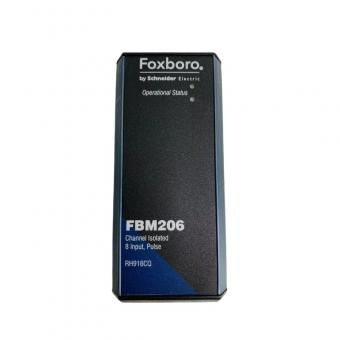 FBM206
FBM206
The FOXBORO FBM206 RH916CQis a pulse input module designed for the Foxboro control system. It provides interfaces for up to 8 independent pulse or frequency input signals from field devices, making it ideal for applications that require accurate pulse counting and frequency measurement. Overview of the FOXBORO FBM206 and FBM206b Pulse Input Modules The FBM206 module supports up to eight pulse input channels, accepting pulse signals up to 25 kHz, and provides these values to the Foxboro Evo™ system. The FBM206b module, on the other hand, offers four pulse input channels and four 0-20 mA analog output channels for control applications. Both modules interface with various field sensors, including vortex meters, turbine meters, solid-state or electromechanical contacts, and other devices with similar pulse outputs. Each input channel on the FBM206 accepts 2-wire pulse input signals. The modules also perform signal conversion to allow the electrical input signals from field sensors to communicate seamlessly with the redundant fieldbus system.
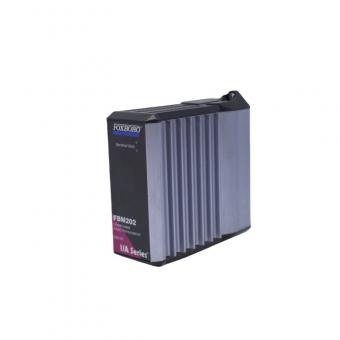 FBM202 P0914ST
FBM202 P0914ST
The Foxboro FBM202 P0914ST is an input module designed for use in process control systems, specifically for handling thermocouple and millivolt (mV) inputs. Here’s a detailed overview: Key Features: Channel Isolated: Each input channel is electrically isolated to prevent interference and ground loops, enhancing signal accuracy and system reliability. 8 Inputs: Provides eight channels for connecting thermocouples or millivolt sources, allowing for multiple measurements to be processed simultaneously. Thermocouple and mV Inputs: Compatible with various thermocouple types and millivolt signals, making it versatile for different temperature measurement applications. Technical Specifications: Input Types: Supports a range of thermocouples (e.g., Type J, K, T, etc.) and millivolt inputs. Isolation: Each input channel is isolated to prevent electrical noise and ensure accurate measurements. Signal Conversion: Converts thermocouple or millivolt signals into a format suitable for processing by the control system. Accuracy: Designed to provide accurate measurements with minimal drift and interference. Applications: Temperature Measurement: Used in industrial process control systems for measuring temperature using thermocouples. Signal Monitoring: Suitable for applications requiring the monitoring of millivolt signals for process control and data acquisition. For detailed specifications, wiring diagrams, and installation procedures, refer to the datasheet or installation manual for the Foxboro FBM202 P0914ST module provided by Foxboro.
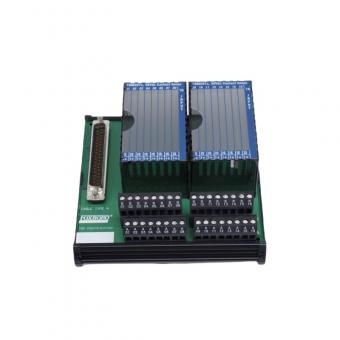 P0917MF FBM207C
P0917MF FBM207C
The Foxboro P0917MF FBM207C Compression Termination Assembly is designed for use with the Foxboro FBM207C Fieldbus Module. It facilitates secure and reliable connections between field devices and the control system. Here’s a detailed overview: Key Features: Compression Termination: Ensures a robust and vibration-resistant connection by compressing the wires to create a solid electrical contact. Compatibility: Specifically designed to work with the Foxboro FBM207C module, which is used in fieldbus systems. Field Device Connection: Provides the necessary connections for interfacing with various field devices, such as sensors and actuators Technical Specifications: Mounting: Integrates with the FBM207C module, allowing for easy installation and secure connection. Wiring Connections: Handles multiple connections, ensuring proper termination and signal integrity. Materials: Constructed from durable materials suited for industrial environments, including resistance to high temperatures and corrosive conditions. Applications: Process Control Systems: Essential for connecting field devices to the FBM207C Fieldbus Module in process control systems. Instrumentation and Automation: Suitable for various applications requiring reliable and secure wiring connections.
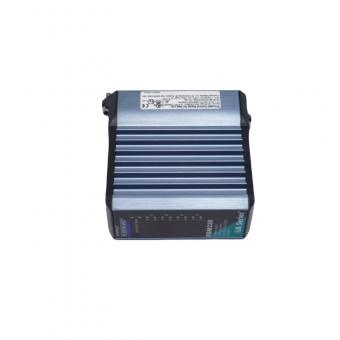 FBM230 P0926GU
FBM230 P0926GU
The Foxboro FBM230 P0926GU Ethernet Communication Card is designed to provide Ethernet connectivity for Foxboro's fieldbus modules, enabling communication between the process control system and external devices or networks. Here’s a detailed overview: Key Features: Ethernet Communication: Facilitates Ethernet-based communication, providing a high-speed, reliable interface for data exchange. Fieldbus Integration: Integrates with Foxboro's control systems to enable communication with field devices and other modules. High Performance: Supports high data throughput and fast communication to ensure efficient data handling and system responsiveness. Technical Specifications: Ethernet Interface: Typically includes standard Ethernet ports for network connectivity, compliant with Ethernet standards. Protocol Support: Supports Ethernet-based communication protocols, which may include TCP/IP, UDP, and other relevant protocols for process control. Data Transfer Rate: Provides high-speed data transfer capabilities to handle large volumes of process data efficiently. Integration: Designed to work with Foxboro’s fieldbus modules and control systems, ensuring seamless integration within the overall system. Applications: Process Control Systems: Used to connect Foxboro's fieldbus modules to Ethernet networks, facilitating communication with other control systems, data acquisition systems, and remote monitoring setups. Industrial Networks: Suitable for integrating process control systems into industrial Ethernet networks, supporting data exchange and communication with other networked devices. For exact specifications, installation instructions, and configuration details, refer to the datasheet or installation manual for the Foxboro FBM230 P0926GU Ethernet Communication Card provided by Foxboro.
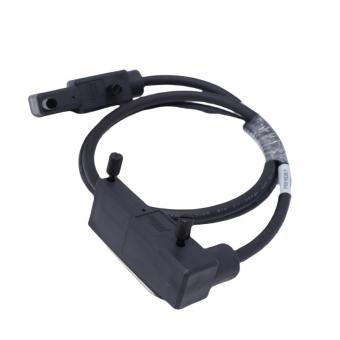 P0916WE
P0916WE
1.The FOXBORO P0916WE is a termination cable designed for use with Foxboro control systems. It provides a secure connection between field devices and control modules, ensuring proper signal transmission and system integration. 2. What are the key specifications of the P0916WE Termination Cable? Key specifications include: ■Part Number: P0916WE ■Type: Termination Cable ■Length: Specific length (refer to the product datasheet for details) ■Connector Type: Designed to interface with Foxboro control modules and field devices ■Shielding: Typically includes shielding for noise reduction (check datasheet for specifics) ■Temperature Range: Suitable for industrial environments (refer to the manual for operating temperature range) 3. What applications is the P0916WE Termination Cable used for? The cable is used for: ■Connecting field devices such as sensors and actuators to Foxboro control modules ■Signal termination in process control and automation systems ■Ensuring reliable communication and signal integrity in industrial automation environments
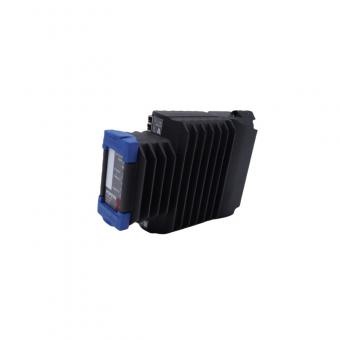 FCP270 P0917YZ
FCP270 P0917YZ
The Foxboro FCP270 P0917YZ Field Control Processor is a component used in process control systems to manage and process field data. Here’s a detailed overview: Key Features: Field Control Processor: Acts as the central processing unit for managing and executing control tasks in field applications. High Performance: Designed to handle complex control algorithms and process data efficiently. Integration: Compatible with Foxboro’s I/A Series Distributed Control System (DCS), providing seamless integration within the system. Technical Specifications: Processing Power: Equipped with sufficient processing capabilities to manage field data and control processes effectively. Communication: Supports various communication protocols to interface with other modules and field devices. Memory: Includes onboard memory for storing control logic, configuration settings, and historical data. Redundancy: May offer options for redundancy to ensure high availability and reliability of the control system. Applications: Process Control Systems: Used in industrial settings to control and monitor processes by executing control strategies and processing data from field devices. Distributed Control Systems (DCS): Functions as a key component in Foxboro’s I/A Series DCS, providing control and monitoring capabilities for complex processes. For precise details on specifications, installation procedures, and compatibility, refer to the datasheet or installation manual for the Foxboro FCP270 P0917YZ Field Control Processor provided by Foxboro.
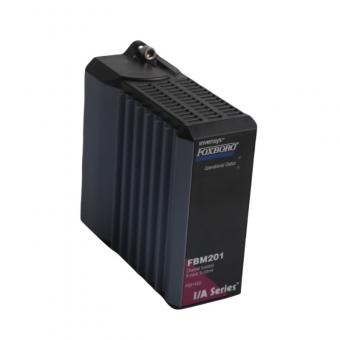 FBM201 RH914SQ
FBM201 RH914SQ
1.The FOXBORO FBM201 RH914SQ is a channel-isolated input module that provides 8 input channels, each capable of handling 0-20 mA signals. It is used in Foxboro control systems to connect and monitor current-based analog signals from field devices. 2. What are the key features of the FBM201 RH914SQ? Key features include: ■8 isolated input channels for 0-20 mA signals ■Channel isolation: Ensures that each channel is electrically isolated from others, improving reliability and reducing interference ■Signal range: 0-20 mA analog inputs ■High accuracy: Designed for precise signal measurement and control ■Compact design: Fits into standard Foxboro control system enclosures 3. What is the purpose of the channel isolation in the FBM201 module? Channel isolation ensures that each input channel operates independently, reducing the risk of electrical interference or cross-talk between signals. This increases the reliability and accuracy of the signals transmitted to the control system.
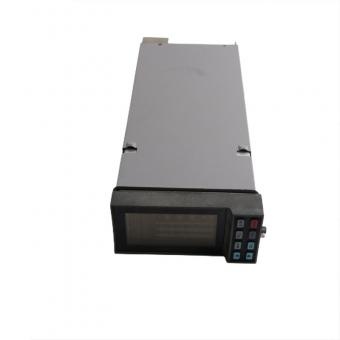 761CNA-AT 4000-00002
761CNA-AT 4000-00002
1.The FOXBORO 761CNA-AT 4000-00002 is a microcontroller module designed for use in Foxboro’s control systems. It serves as a single station controller, providing critical control and processing functions within the automation system. 2. What are the key specifications of the 761CNA-AT 4000-00002 Module? Key specifications include: ■Part Number: 761CNA-AT 4000-00002 ■Type: Single Station Micro Controller Module ■Function: Control and processing functions for automation systems ■Compatibility: Designed for use with Foxboro control systems ■I/O Support: Typically supports various digital and analog inputs/outputs (refer to the product manual for specifics) ■Communication: Interfaces with other modules and systems within the control environment 3. What are the common applications of the 761CNA-AT 4000-00002 Module? The module is commonly used in: ■Industrial automation systems ■Process control applications in industries such as oil and gas, chemical processing, and power generation ■Safety and control systems where precise and reliable control is essential
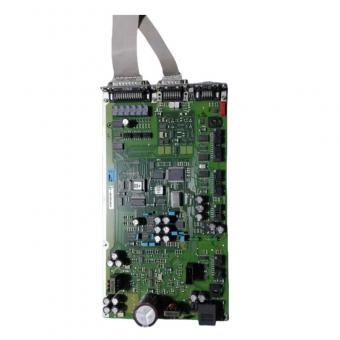 C79451A3474B1-14
C79451A3474B1-14
The Siemens C79451A3474B1-14 is part of Siemens’ range of analyzer accessories. It is typically used in conjunction with Siemens' industrial gas and process analyzers, such as the Siemens SIPROCESS GA700 series, MAXUM process gas chromatographs, and other analytical instruments. Accessories like these play a vital role in optimizing the performance, installation, and maintenance of the analyzer systems in industries like oil & gas, chemical processing, and environmental monitoring. Benefits Extended Analyzer Lifespan: Accessories like the C79451A3474B1-14 help to reduce wear and tear on sensitive analyzer components, thus extending the lifespan of the analyzer itself. Improved Accuracy: Optimizes sample handling and gas flow, ensuring that the analyzers receive clean, accurate samples for precise measurements. Maintenance Ease: Simplifies maintenance tasks, allowing for easier access to components that need periodic servicing or replacement.
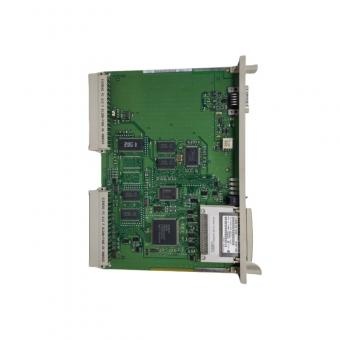 6ES5374-1KH21
6ES5374-1KH21
The Siemens 6ES5374-1KH21 is a SIMATIC S5 memory card designed for use with Siemens' SIMATIC S5 PLC systems. This memory card is used for storing and transferring program and data information within the PLC. Benefits Non-Volatile Storage: Ensures that stored data is preserved without power, making it reliable for long-term storage of critical information. Compact Design: Fits into the compact slots of SIMATIC S5 PLCs, optimizing space within control panels and systems. Compatibility: Designed specifically for SIMATIC S5 PLCs, ensuring seamless integration and functionality within these systems.
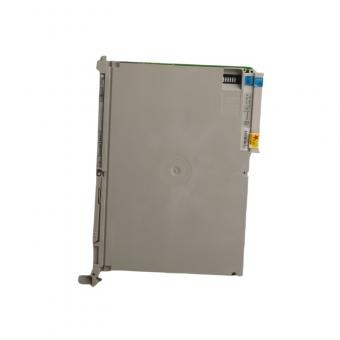 6ES5470-4UB12
6ES5470-4UB12
The Siemens 6ES5470-4UB12 Analog Output Module is designed for precise control in automation systems, providing reliable analog signal output for various applications. This module supports multiple output channels, allowing for seamless integration with other components, and enhances system performance by ensuring accurate data transmission. Description: 6ES54704UB12 DISCONTINUED BY MANUFACTURER OUTPUT MODULE 8 POINT ANALOG 10V SIMATIC S5 Article Number (Market Facing Number):6ES5470-4UB12 Product Description:SIMATIC S5 470 ANALOG OUTPUT MODULE FLOATING, COMPACT VERSION U 8 OUTPUTS +-10V Product Lifecycle (PLM):PM500:Discontinued Product or end of PLM & Support Export Control Regulations:ECCN : N / AL : N Net Weight (kg):0,562 Kg Packaging Dimension:21,50 x 27,00 x 3,40 Package size unit of measure:CM Here are some common questions about the Siemens 6ES5470-4UB12 Analog Output Module: 1.Function Q: What is the main function of the 6ES5470-4UB12 Analog Output Module? A: It provides reliable analog signal output for various automation applications, allowing for precise control. 2.Compatibility Q: Which systems or devices is this module compatible with? A: It is typically compatible with Siemens S7-400 systems; please refer to the technical documentation for specifics. 3.Output Channels Q: How many output channels does this module support? A: It supports multiple output channels, enabling flexible integration into automation setup

Product Description The 6ES7592-1BM00-0XA0 Front Connector features a 40-pole push-in interface and screw-type power terminals, delivering fast wiring and secure connections for S7-1500 modules while integrating four internal bridges for flexible voltage distribution. Specification Type Number: 6ES7592-1BM00-0XA0 Dimension: 2.5x12.7x5.1cm Weight: 0.067kg Material: High-grade steel and plastic Connection System: Push-in design Number of Poles: 40 Module Compatibility: 25 mm wide modules and compact CPUs Power Supply Connection: Screw terminals Design: Compact with included cable tie Included Accessories: Cable tie, 4 potential bridges Color: Industrial grey (standard S7-1500 color scheme) Mounting: Direct plug-in on S7-1500 modules Protection Class: IP20 Frequently Asked Questions Q: What type of connection system does it use? A: It uses a push-in design for tool-free and secure wiring. Q: How many poles are available in this front connector? A: It features 40 poles for high-density signal or power wiring. Q: Is this connector compatible with all S7-1500 modules? A: It is designed for 25 mm wide modules and compact CPUs within the S7-1500 series.
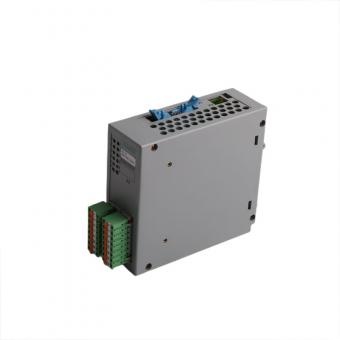 6DD1681-0AJ1
6DD1681-0AJ1
The Siemens 6DD1681-0AJ1 is a specialized converter module within the SIMATIC TDC (Totally Distributed Control) series. Designed for robust and reliable performance in industrial automation systems, this converter facilitates seamless connectivity and power distribution through its versatile terminal and connector configurations. The 6DD1681-0AJ1 module is integral to the SIMATIC TDC ecosystem, providing essential conversion and connectivity functions that enable distributed control across various industrial applications. Electrical Specifications While specific electrical ratings (such as voltage and current limits) are typically detailed in the official Siemens documentation, the 6DD1681-0AJ1 is engineered to handle multiple signal and power lines required by complex automation systems. It ensures stable operation and protects against electrical surges and short circuits through robust design and high-quality components.
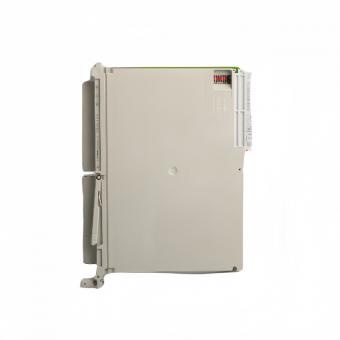 6ES5441-4UA14
6ES5441-4UA14
Siemens 6ES5441-4UA14 SIMATIC S5 441-4 Digital Output Module for S5-135U/-155U/H PLC, (32) 24V DC Digital Outputs, 0.5A/each, Non-Floating, Compact Version U Description: 6ES54414UA14 DISCONTINUED BY MANUFACTURER SINCE: 01.10.2020 DIGITAL OUTPUT MODULE 0.5 AMP 24 VDC 32 OUTPUTS NON-ISOLATED COMPACT DESIGN SIMATIC S5 FACTORY WARRANTY MAY NOT APPLY. RADWELL 2-YEAR WARRANTY INCLUDED Specifications: Part :6ES5441-4UA14 Category:PLCs/Machine Control Subcategory:VDC Logic I/O Module Weight:0.37 lbs
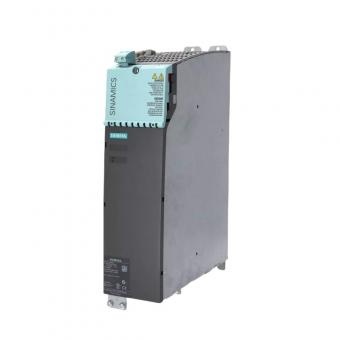 6SL3130-6TE21-6AA4
6SL3130-6TE21-6AA4
The Siemens 6SL3130-6TE21-6AA4 is a specific model of the SINAMICS S120 Smart Line Module used in Siemens' drive technology. It is a regenerative feedback module that allows energy to be fed back into the power grid, improving overall energy efficiency. Here’s a detailed description of the Siemens 6SL3130-6TE21-6AA4 S120 Smart Line Module's electrical data based on the provided information: Electrical Data Input Number of Phases: 3-phase AC Line Voltage Range: 342 V to 528 V AC Line Frequency: 47 Hz to 63 Hz Short-Circuit Strength: Up to 65 kA, offering high short-circuit protection Line Power Factor: Fundamental Power Factor (Minimal): 0.96, indicating highly efficient energy usage Total Power Factor: Ranges between 0.65 and 0.90 Overvoltage Category: Class III, designed for equipment in fixed installations that requires higher insulation levels DC Link Voltage DC-Link Voltage: The DC-link voltage is 1.35 times the line voltage, helping to stabilize energy flow and enable efficient regeneration. Electronics Power Supply Electronics Power Supply: Operates with a DC 24 V supply, with a tolerance of -15% to +20% to ensure stable operation of internal electronics. This combination of robust input specifications and high-efficiency power management makes this module ideal for industrial applications requiring precise energy control and regeneration.
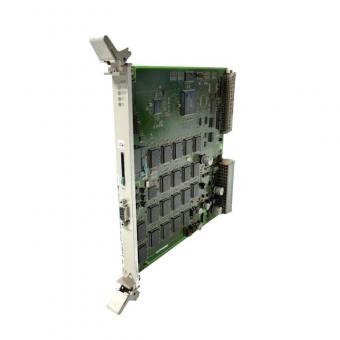 6DP1616-8AA
6DP1616-8AA
The Siemens 6DP1616-8AA IM 616 Interface Module is designed to facilitate communication between a FUM B subrack and a PROFIBUS DP master, such as an AS-S7 (Automation System S7). This module is part of Siemens' automation and control systems, enhancing the integration of fieldbus systems into industrial applications. Benefits Seamless Integration: Facilitates the integration of PROFIBUS DP field devices with Siemens' automation systems, enabling efficient communication and control. High-Speed Communication: Supports PROFIBUS DP, providing fast and reliable data exchange between field devices and the control system. Flexibility: Configurable for various PROFIBUS DP network settings, accommodating different application requirements.
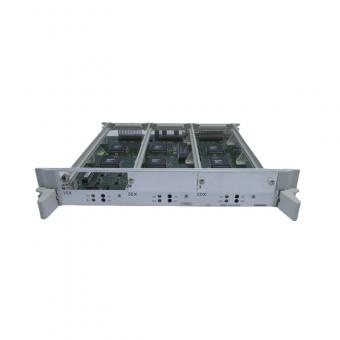 6DD1662-0AB0
6DD1662-0AB0
The Siemens 6DD1662-0AB0 CS7 Communications Module is part of the SIMADYN D system, which is used for high-performance control and automation in complex industrial processes. This module serves as a carrier module for up to three communication submodules, allowing for flexible integration of various communication interfaces within the SIMADYN D system. Product Specifications: Model: 6DD1662-0AB0 Series: SIMADYN D Function: Carrier module for communication submodules Number of Slots: Accommodates up to 3 communication submodules Communication Interfaces: Dependent on installed submodules (e.g., PROFIBUS, Ethernet) Power Supply Voltage: Integrated within SIMADYN D system power Dimensions: Standard SIMADYN D module size for rack mounting Mounting Type: Rack-mounted within SIMADYN D system rack Operating Temperature: 0°C to 60°C Storage Temperature: -40°C to 85°C Compatibility: Designed for use with SIMADYN D system for high-performance control Certifications: Complies with industrial automation standards Common Questions: Question: What is the main function of the Siemens 6DD1662-0AB0 CS7 module? Answer: The 6DD1662-0AB0 is a communication carrier module for the SIMADYN D system. It supports up to three communication submodules, allowing for flexible communication options in industrial control and automation systems. Question: How many communication submodules can the CS7 module hold? Answer: The CS7 module can hold up to 3 communication submodules, which can be configured to provide different communication interfaces such as PROFIBUS, Ethernet, or other industrial protocols. Question: What types of communication submodules can be installed in this module? Answer: The specific communication submodules vary based on the requirements of the system, but typical submodules include those supporting industrial communication protocols like PROFIBUS, Ethernet, or MODBUS, depending on the application. Question: What is the power requirement for the 6DD1662-0AB0 CS7 module? Answer: The module is powered through the SIMADYN D system, so it does not require a separate power supply. It uses the standard power provided by the SIMADYN D rack system. Question: Is this module compatible with other Siemens systems, such as SIMATIC S7? Answer: No, the 6DD1662-0AB0 is specifically designed for use with the SIMADYN D system. It is not directly compatible with SIMATIC S7 systems, although communication between systems may be possible through appropriate interface submodules. Question: What industrial applications is the CS7 module used for? Answer: The CS7 module is used in high-performance control applications such as process control, motion control, and advanced automation systems. It is often employed in industries like manufacturing, energy, and heavy industrial processes where precise and reliable communication is critical. Question: How do I configure the communication submodules within the 6DD1662-0AB0 CS7 module? Answer: Configuration of the communication submodu...
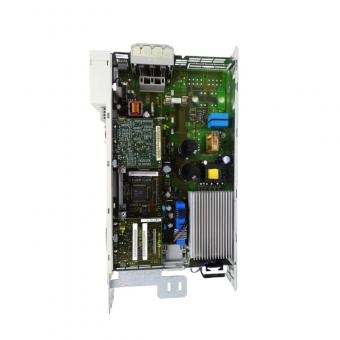 6SE7012-0TP50
6SE7012-0TP50
The Siemens 6SE7012-0TP50 is a model from the SIMOVERT MASTERDRIVES series, specifically designed for motion control applications. It is part of Siemens' portfolio for industrial automation and drive technology. For configurations with more than two inverters, an external 24 V power supply is required. Specifically, if using the 6SE7011-5EP50 Compact PLUS converter, the 6SE7012-0TP50 inverter can only be connected once. For details on selection and ordering, refer to page 3/17. When using one or two inverters, the internal 24 V power supply of the converter can be utilized. The converter's rectifier will rectify the line voltage and supply the inverters through the DC bus system located on the top of the units. For setups involving more than two inverters, an external 24 V power supply must be provided, as outlined in the “Selection and ordering data” on page 3/17
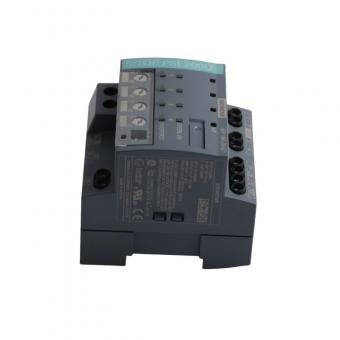 6EP1961-2BA21
6EP1961-2BA21
SITOP PSE200U 10 A selectivity module 4-channel input: 24 V DC/40 A output: 24V DC/4x 10 A threshold adjustable 3-10 A with common signaling contact input: type of the power supply network :Controlled DC voltage supply voltage at DC rated value :24 V input voltage at DC: 22 ... 30 V overvoltage overload capability :35 V input current at rated input voltage 24 V rated value: 40 A output: voltage curve at output: controlled DC voltage formula for output voltage: Vin - approx. 0.2 V relative overall tolerance of the voltage note: In accordance with the supplying input voltage number of outputs: 4 output current up to 60 °C per output rated value: 10 A Adjustable output current :3 ... 10 A type of response value setting: via potentiometer response delay maximum: 5 s product feature parallel switching of outputs: No type of outputs connection: Simultaneous connection of all outputs after power up of the supply voltage >20 V, delay time of 25 ms, 100 ms or adjustable "load optimised" via DIP switch for sequential connection
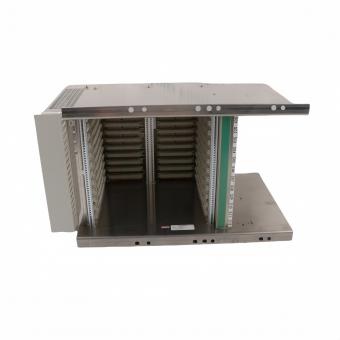 6DD1682-0CC0
6DD1682-0CC0
SIMADYN D SUBRACK SR12.1 24V DCINTEGRATED FAN 12 SLOTS , L- AND C-BUS. The Siemens 6DD1682-0CC0 SR12.1 Rack is a critical component within Siemens SIMATIC S7-300 and S7-400 programmable logic controllers (PLCs). It serves as the central communication hub, enabling the PLC to connect with various devices and networks. Product: Article Number (Market Facing Number):6DD1682-0CC0 Product Description: SPARE PART SIMADYN D SUBRACK SR12.1 24V DCINTEGRATED FAN 12 SLOTS , L- AND C-BUS Product Lifecycle (PLM): PM500:Discontinued Product or end of PLM & Support PLM Effective Date End of product lifecycle since: 01.10.2017 Delivery information: Export Control Regulations:ECCN : N / AL : N Net Weight (kg):10,500 Kg Packaging Dimension:44,50 x 62,00 x 37,50 Package size unit of measure:CM Quantity Unit:0 Piece Packaging Quantity:1
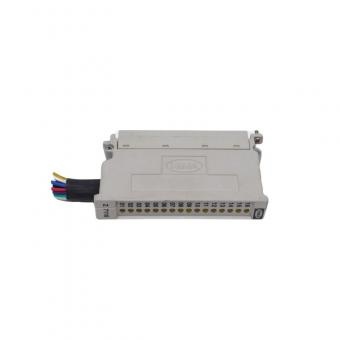 Z7116
Z7116
1.The HIMA Z7116 LED Cable Plug is used for marking and identifying cables in industrial automation systems. It features built-in LEDs to provide visual indication, which helps in monitoring and troubleshooting cable connections. 2. What are the key features of the HIMA Z7116 LED Cable Plug? LED Indicators: Equipped with integrated LEDs for clear visual status indication of the cable connection. Durable Construction: Made from robust materials to withstand industrial environments. Compatibility: Designed to fit a variety of cable sizes and types used in automation systems. 3. How does the LED functionality work on the HIMA Z7116? The LEDs in the Z7116 Cable Plug provide visual feedback about the cable connection status. This helps in quickly identifying operational or connection issues during system maintenance or troubleshooting.
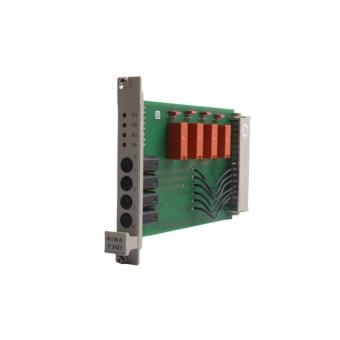 F3421
F3421
1.The HIMA F3421 is a relay amplifier designed to handle multiple channels of signal amplification. It is used to amplify and control relay outputs in safety-critical applications, ensuring reliable signal processing in industrial control systems. 2. What are the key features of the HIMA F3421? 4 Channels: The amplifier provides four independent channels for relay control. Signal Amplification: It amplifies signals to drive relays or other devices in safety systems. High Reliability: Built to meet rigorous safety standards, ensuring reliable operation in critical applications. 3. What types of relays can the HIMA F3421 control? The F3421 can control various types of relays, including those used for switching and signal isolation. It is compatible with relays commonly used in safety and control systems.
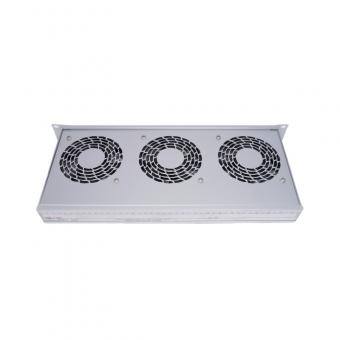 K9203
K9203
1.The HIMA K9203 is a fan module specifically designed for the 9-inch subrack. It is used in industrial environments to provide cooling for electronic components and systems, helping to prevent overheating and maintain optimal performance. 2. Where is the HIMA K9203 Fan Module typically used? This fan module is commonly used in industrial control systems such as safety-related applications, especially in critical environments like oil and gas, chemical plants, and other process industries. 3.What is the purpose of the fan module in the HIMA subrack system? The fan module ensures proper airflow within the subrack, which helps maintain a stable temperature. This is crucial in preventing damage to sensitive electronic components and ensuring the reliability of the system.
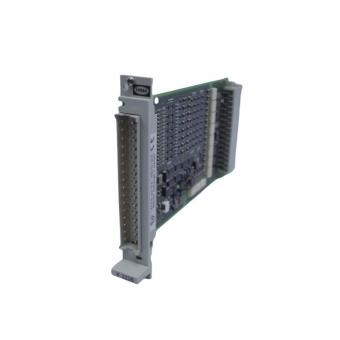 F3236
F3236
The HIMA F3236 is a 16-channel digital input module designed for use in safety-critical control systems. It is part of HIMA’s safety system offerings and provides essential functionality for monitoring discrete signals from field devices. Here’s a detailed overview of the HIMA F3236 module: Key Features: Digital Inputs: Number of Channels: 16 digital input channels. Input Type: Designed to receive discrete ON/OFF signals from various field devices like sensors and switches. Input Voltage Range: Typically supports 24 VDC inputs, but always check the specific model for exact details. Safety and Reliability: Standards Compliance: Designed to meet safety standards such as IEC 61508, ensuring high reliability in safety-critical applications. Fault Tolerance: Includes features to enhance system reliability and detect faults. Indicators and Diagnostics: Status Indicators: LED indicators for each channel to show the status of the inputs (e.g., ON or OFF). Diagnostics: Provides diagnostic information to facilitate system maintenance and troubleshooting. Technical Specifications (Typical): Input Voltage: 24 VDC. Input Type: Discrete ON/OFF signals. Isolation: Electrical isolation between inputs and the rest of the system.Applications: Industrial Automation: Used in industrial automation systems for monitoring digital signals from field devices. Safety Systems: Ideal for safety-critical applications where compliance with safety standards and high reliability are essential.
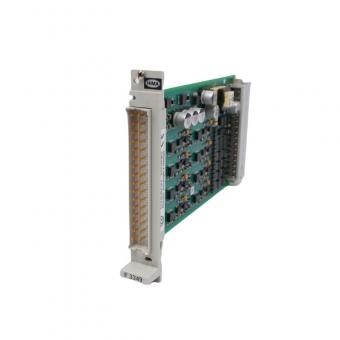 F3349
F3349
The HIMA F3349 Digital I/O Module is a versatile component designed for use in safety-related control systems. It typically provides a range of digital input and output functionalities to interface with various field devices. Here are some key features and specifications of the F3349 module: Key Features: Digital Inputs and Outputs: Number of Channels: Typically includes multiple digital input and output channels (e.g., 16 inputs and 16 outputs). Input Type: Designed to accept discrete ON/OFF signals from field devices. Output Type: Provides discrete ON/OFF signals to control field devices. Safety Compliance: Standards: Designed to meet international safety standards such as IEC 61508 for functional safety. Reliability: Features high reliability and fault tolerance for safety-critical applications. Indicators and Diagnostics: Status Indicators: Often includes LED indicators for status monitoring and diagnostics. Diagnostic Features: Provides diagnostic information to facilitate troubleshooting and system maintenance. Environmental Conditions:、 Operating Temperature: Operates within a specified temperature range (e.g., -20°C to +60°C). Protection Class: Typically housed in a rugged enclosure to protect against environmental factors. Technical Specifications (Typical): Input Voltage: Supports standard input voltage levels (e.g., 24 VDC). Output Current Rating: Supports specific current ratings per output channel (e.g., 0.5 A). Isolation: Electrical isolation between input and output channels, as well as between the module and the rest of the system.
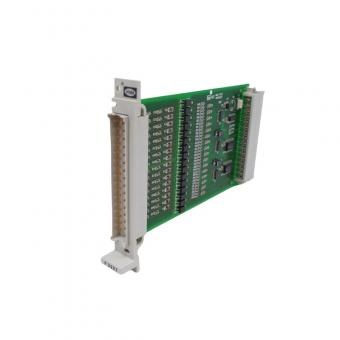 F3221
F3221
The HIMA F3221 is a Digital Input Module designed for use in HIMA's safety systems, particularly the H41q/H51q programmable electronic system (PES). It plays a vital role in collecting discrete (digital) signals from field devices and transferring them to the control system for processing and decision-making, ensuring that safety-critical processes are accurately monitored. Key Features and Specifications: Manufacturer: HIMA (HIMA Paul Hildebrandt GmbH), a global leader in safety automation solutions. Product Type: Digital Input Module: The F3221 is used to receive digital signals from field devices, such as switches, sensors, and relays, indicating the status of connected equipment (e.g., ON/OFF, open/closed). Input Channels: The module provides 16 digital input channels, allowing multiple signals to be monitored and processed simultaneously. These channels are designed to interface with standard field devices that operate in binary (discrete) logic, which makes the F3221 suitable for monitoring safety-related digital signals in various industrial environments. Input Voltage: The F3221 supports 24V DC inputs, commonly used in industrial automation, to detect the ON/OFF state of connected devices. Safety Features: The module is designed with high reliability and fail-safe operation, making it suitable for use in safety-critical applications. It meets the requirements of SIL 3 (Safety Integrity Level 3), ensuring the highest level of functional safety for process industries. Environmental Specifications: Designed for use in industrial environments, the F3221 can operate within a wide range of temperatures and harsh conditions. Operating temperature: 0°C to +60°C. Humidity: 5% to 95% non-condensing. Communication and Integration: The F3221 communicates with the HIMA PES system using the proprietary communication protocols of the H41q/H51q system, ensuring reliable and fast data transfer for real-time decision-making.
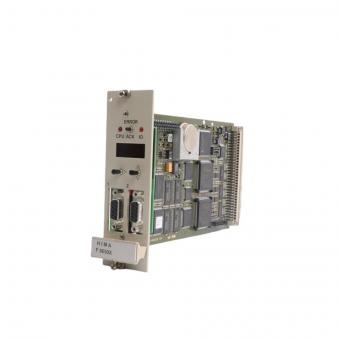 F8650X
F8650X
The HIMA F8650X Central Module is a critical component in safety-critical automation systems. It acts as the central processing unit, managing and coordinating various safety functions and signals within the system. Central Module Specifications: 1.Microprocessors: Dual clock-synchronized INTEL 386EX processors, 32-bit architecture, operating at a clock frequency of 25 MHz. 2.Memory: Operating System: 1 MB Flash-EPROM per microprocessor User Program: 1 MB Flash-EPROM per microprocessor (Note: Utilization may vary based on the operating system version) Data Storage: 1 MB SRAM per microprocessor 3.Interfaces: Two RS-485 serial interfaces with electrical isolation. 4.Diagnostic Display: Four-digit matrix display with selectable information. 5.Fault Shutdown: Safety-related watchdog with a 24 V output, capable of handling loads up to 500 mA and is short-circuit proof. 6.Construction: Comprised of two European standard PCBs and one additional PCB dedicated to the diagnostic display. 7.Space Requirement: 8 SU (Standard Units) 8.Operating Data: Requires 5 V and 2 A.
 BV7032-0.5
BV7032-0.5
Product Description: The HIMA BV7032-0.5 Data Connecting Cable is a high-quality and reliable data transmission solution designed for industrial applications. It features a robust construction with a durable outer sheath that provides excellent protection against mechanical stress and environmental factors. The cable is specifically engineered to ensure fast and accurate data transfer, with a length of 0.5 meters that is suitable for short-distance connections. Detailed Specifications Model Number: BV7032-0.5 Manufacturer: HIMA Product Type: Data Connecting Cable Type: Flat Cable Electrical Specifications Voltage Rating: 300V Current Rating: 5A Environmental Specifications Operating Temperature Range: -40°C to 85°C Protection Class: IP67 (dust-tight and water-resistant) Connector Information Connector Type: HIMA proprietary connector Weight: 0.1 kg Frequently Asked Questions: 1.What is the primary application of the HIMA BV7032-0.5 Data Connecting Cable? The HIMA BV7032-0.5 Data Connecting Cable is specifically designed for industrial control applications. It is used to connect I/O subracks to the central rack and the PES coupling module in HIMA safety systems. 2.What are the key features of HIMA BV7032-0.5 Data Connecting Cable? It is made of high-quality materials, such as high-purity copper conductors and flame-retardant PVC insulation, ensuring efficient electrical performance and enhanced safety. The cable also features a shielded twisted pair core to mitigate electromagnetic interference, maintaining signal integrity. 3. How long is the HIMA BV7032-0.5 Data Connecting Cable? The HIMA BV7032-0.5 Data Connecting Cable has a standard length of 0.5 meters. This length is suitable for connecting components within a compact industrial setup, ensuring efficient and reliable data transmission.
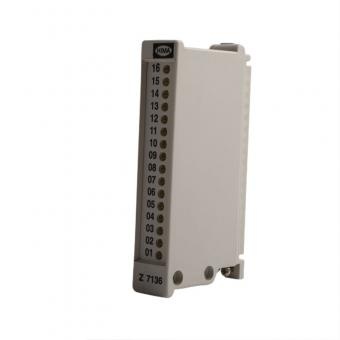 Z7136
Z7136
The HIMA Z7136 is a digital output module designed for use in safety-related control systems. Here are some key features and specifications typically associated with this module: Key Features: Digital Outputs: Number of Outputs: The Z7136 usually has 8 digital outputs. Output Type: It provides discrete ON/OFF signals. Output Voltage: Commonly supports 24 VDC, but it's always best to check the specific model for exact details. Reliability: Safety Standards: Designed to meet safety standards such as IEC 61508, ensuring high reliability in safety-critical applications. Redundancy: Often features redundancy or fault-tolerant design to enhance system reliability. Communication: Interface: Typically integrates with HIMA safety systems through a dedicated communication bus or protocol. Diagnostics: May include diagnostic features to monitor the health and status of the outputs. Technical Specifications (Typical): Output Current Rating: Generally supports a specific current rating per channel (e.g., 0.5 A). Response Time: The time taken for the output to switch states. Isolation: Electrical isolation between outputs and the rest of the system.
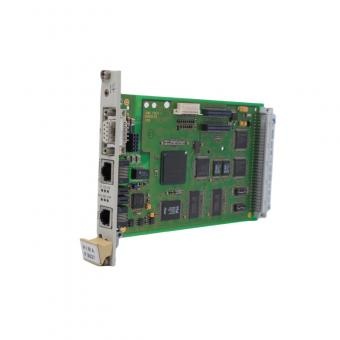 F8627
F8627
The HIMA F8627 Ethernet Communication Module is a specialized module designed for Ethernet communication in HIMA's H41q/H51q programmable electronic systems (PES). It is essential for enabling communication between safety systems and various external devices or networks, such as distributed control systems (DCS), human-machine interfaces (HMI), and other industrial automation components. Key Features and Specifications: Manufacturer: HIMA (HIMA Paul Hildebrandt GmbH), a leader in safety-related automation systems. Product Type: Ethernet Communication Module: The F8627 facilitates network communication via Ethernet and provides connectivity for the H41q/H51q safety systems. Communication Protocol: The module supports multiple Ethernet-based protocols, enabling it to communicate with a wide variety of devices and systems, including safety controllers, remote I/O, SCADA systems, and HMI interfaces. Network Support: The F8627 supports standard Ethernet protocols, such as TCP/IP, which are commonly used in industrial networking. This allows seamless integration with modern control networks and IT systems. The module can handle both safety-critical data and general control information, making it suitable for safety-related applications where reliable communication is essential. Environmental Specifications: Designed to operate in industrial environments, the module is robust enough to handle challenging conditions. Operating temperature: 0°C to +60°C. Humidity: 5% to 95% non-condensing. The HIMA F8627 Ethernet Communication Module is a robust and reliable solution for establishing Ethernet-based communication in safety-critical environments. Its support for redundancy, diagnostics, and integration with HIMA’s safety systems makes it a key component in modern industrial automation where safety and reliability are essential.
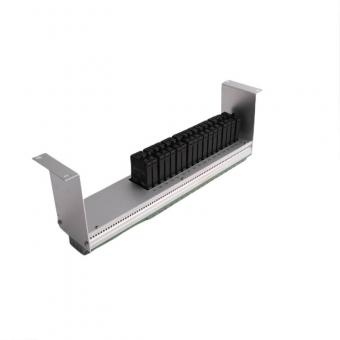 K7214
K7214
The HIMA K7214 Control Panel is part of HIMA's safety-related control systems. It typically features the following: Functionality: It is designed to operate and monitor safety-critical processes, offering real-time control and diagnostics. User Interface: Usually includes an integrated display and various input/output interfaces for easy interaction and configuration. Safety Standards: Complies with international safety standards such as IEC 61508, ensuring high reliability and safety in critical applications. Connectivity: Equipped with multiple communication ports for integration with other control systems and devices. Customization: Often customizable to suit specific application needs and user preferences.
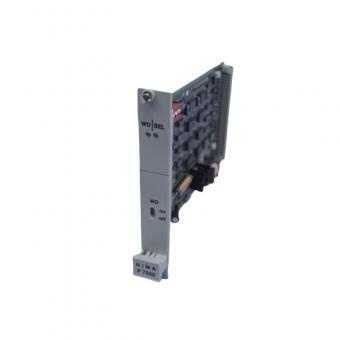 F7553
F7553
The HIMA F7553 Coupling Module is a specialized component designed for use in HIMA's H51q programmable electronic safety (PES) system. It facilitates the integration and communication between the H51q system and external components or systems, providing reliable and secure coupling for critical industrial applications. Key Features and Specifications: Manufacturer: HIMA (HIMA Paul Hildebrandt GmbH) is renowned for designing high-performance safety solutions, and the F7553 is part of its product line for safety-related automation and control systems. Product Type: Coupling Module: The F7553 acts as a coupling interface between various systems, ensuring that signals are transmitted and processed correctly while maintaining the safety and integrity of the overall system. Product Number: F7553: Unique identification number for this specific coupling module. Compatibility: Designed to be used in the H51q PES (Programmable Electronic System), a robust platform for safety-critical automation processes. Watchdog Function: The F7553 module includes a switch-off feature for the watchdog signal. The watchdog monitors the system to ensure that all operations are performed correctly and within the expected timeframes, automatically switching off if irregularities are detected to prevent further issues. Operating Data: 5 V DC: The module requires 600 mA of current at a 5V DC power supply. 24 V DC: It also operates with 750 mA current at 24V DC, ensuring that it is versatile in its power input needs. Assembly Kit B 9302: The B 9302 assembly kit is associated with the F7553 and provides the necessary hardware and configuration for installing and operating the coupling module effectively within the H51q system. Conclusion: The HIMA F7553 Coupling Module is a crucial component for ensuring safe and reliable communication in HIMA's H51q control system. It provides advanced safety features, including watchdog monitoring, while being compact and efficient in its power requirements.
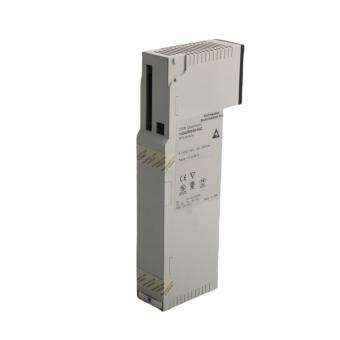 140ARI03010
140ARI03010
Schneider 140ARI03010 analog input module is used in industrial applications where temperature measurement and control are critical. It supports multiple types of RTD sensors for flexibility. Here’s an overview of the Schneider 140ARI03010 Modicon Quantum analog input module: Main Range of product Modicon Quantum automation platform Product or component type Analog input module Input type 8 isolated channels for Ni / Pt 100, 200, 500, 1000 sensors Complementary Input signal type Resistance temperature detectors (RTD) Supported sensor types Ni, Pt 100, 200, 500, 1000 Number of input channels 8 inputs Isolation Isolated channels Measurement type Temperature Input impedance High input impedance for RTD sensors Module format Standard, suitable for Quantum backplane Temperature range compatibility Wide temperature range depending on the sensor used Marking CE Product weight Approx. 0.35 kg
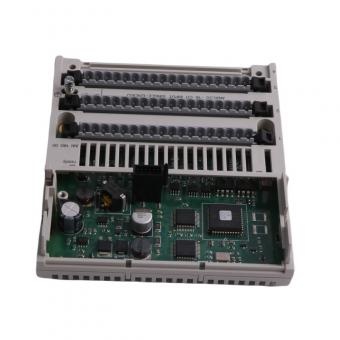 170AAI14000
170AAI14000
Schneider 170AAI14000 distributed analog input module is commonly used for process control and industrial applications requiring multiple analog inputs, allowing integration with the Modicon Momentum automation platform. Here’s an overview of the Schneider 170AAI14000 Modicon Momentum distributed analog input module: Environment Product Certifications UL, FM Class 1 Division 2, CSA Protective treatment TC Resistance to electrostatic discharge 4 kV contact (IEC 801-2), 8 kV on air (IEC 801-2) Resistance to electromagnetic fields 9.14 V/m (10 V/m) 80...1000 MHz (IEC 801-3) Ambient air temperature for operation 32…140 °F (0…60 °C) Ambient air temperature for storage -40…185 °F (-40…85 °C) Relative humidity 95% without condensation Operating altitude ≤ 16404.2 ft (5000 m) Main Range of Product Modicon Momentum automation platform Product or Component Type Analog input base Analog input number 16 Analog input type Single-ended Analog input range - 4...20 mA (12 bits, < 0.25 Ohm) Analog input range - ±10 V (12 bits + sign, > 2200 kOhm) Analog input range - ±5 V (12 bits + sign, > 2200 kOhm) Type of filter Low pass input filter, 10 kHz
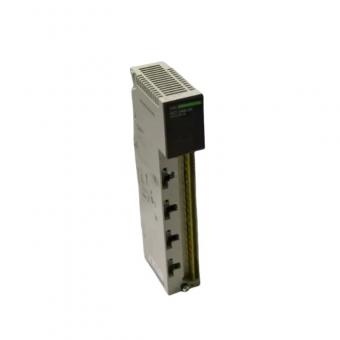 140ACI04000C
140ACI04000C
Schneider 140AVO02000 analog output module is built to withstand various environmental conditions while providing reliable performance in a range of industrial settings. Here’s a detailed table summarizing the environmental specifications for the Schneider 140AVO02000 analog output module: Feature Details Protective Treatment Conformal coating Humiseal 1A33 Standards CSA C22.2 No 142 Standards UL 508 Product Certifications CUL Product Certifications FM Class 1 Division 2 Resistance to Electrostatic Discharge 4 kV contact (conforming to IEC 801-2) Resistance to Electrostatic Discharge 8 kV air (conforming to IEC 801-2) Resistance to Electromagnetic Fields 9.14 V/yd (10 V/m) 80...1000 MHz (conforming to IEC 801-3) Ambient Air Temperature for Operation 32...140 °F (0...60 °C) Ambient Air Temperature for Storage -40...185 °F (-40...85 °C) Relative Humidity 95% without condensation Operating Altitude ≤ 16,404.2 ft (5000 m)
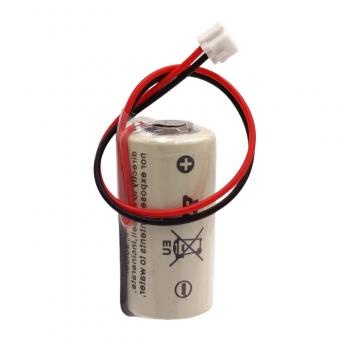 990XCP98000
990XCP98000
The 990XCP98000 is a reliable component used to ensure the memory of the Modicon Quantum CPU is maintained during power failures, helping to avoid data loss and maintain continuous system operations. Here’s a detailed overview of the Schneider 990XCP98000 Modicon Quantum lithium backup battery: Main Accessory / separate part category Separate parts Accessory / separate part type Battery Accessory / separate part designation Backup battery Accessory / separate part destination CPU Battery type Lithium Complementary Range compatibility Modicon Quantum automation platform Battery capacity 1.2 Ah [Us] rated supply voltage 3 V Supply voltage type DC Battery life 10 years
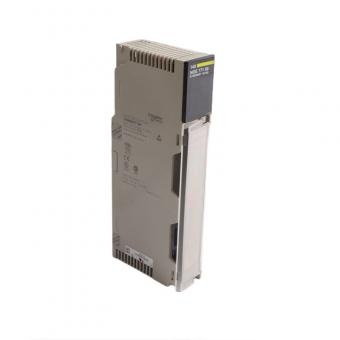 140NOE77100
140NOE77100
The Schneider Electric 140NOE77100 is an Ethernet Network TCP/IP Module designed for use with the Modicon Quantum series of programmable logic controllers (PLCs). This module enables seamless communication over Ethernet networks, facilitating integration with various devices and systems. Key Features and Specifications: Product Type: Ethernet Network TCP/IP Module Compatibility: Specifically designed for the Modicon Quantum PLC series Communication Protocols: Supports Modbus TCP and other Ethernet-based protocols for data exchange Number of Ports: Typically includes 1 or more Ethernet ports (10/100 Mbps) Data Transfer Rate: Up to 100 Mbps for high-speed communication Configuration: Configurable using Schneider Electric software tools like Unity Pro or Concept Web Server: Integrated web server for remote diagnostics and monitoring Diagnostics: LED indicators for monitoring communication status and activity Operating Temperature: -25 to 60°C, suitable for industrial environments Power Consumption: Low power requirements, powered through the backplane Mounting: Designed for easy installation on DIN rails or within control panels Applications: Industrial Automation: Enables communication between Modicon Quantum controllers and other devices in an automation network. Data Acquisition: Facilitates data collection and monitoring from various sources over Ethernet. Benefits: Enhanced Connectivity: Provides flexible integration options with existing network infrastructure. Reliability: Ensures stable and secure communication, improving overall system performance. This module is essential for establishing Ethernet connectivity in Modicon Quantum applications, enhancing communication capabilities in industrial automation systems.
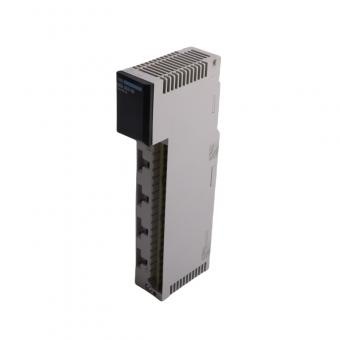 140DDI35300
140DDI35300
The Schneider Electric 140DDI35300 is a discrete input module from the Modicon Quantum series, designed for use in industrial control systems. It is a robust and reliable module used to monitor the state of discrete signals, typically from switches or sensors, and report their status to a Programmable Logic Controller (PLC). Key Specifications: Product Type: Discrete Input Module Input Type: 32 input channels (24V DC, sink) Voltage Type: 24 V DC Input Voltage Range: 20.4 to 30 V DC Input Current: 8 mA at 24 V DC per channel Response Time: 1 ms (typical) Fast switching and response time for high-speed applications Diagnostics: LED indicators for input and module status Isolation: 1780 V DC between channels and bus Power Consumption: Module power consumption: 3.2 W Mounting: Standard DIN rail mounting Operating Temperature: -25 to 60°C Dimensions: Standard Modicon Quantum form factor Application: Factory automation, process control, machine monitoring, and other industrial applications requiring high-density digital inputs. This module is typically used for monitoring discrete input signals in industrial processes where fast, reliable digital input is necessary.
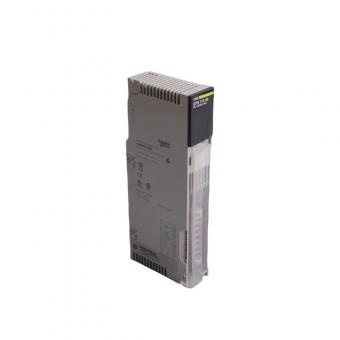 140CPS11420
140CPS11420
The Schneider 140CPS11420 is a power supply module from the Modicon Quantum series. Feature Details Input Voltage 115 V (93...132 V) AC, 47…63 Hz Input Voltage 230 V (170...276 V) AC Input Current 1300 mA at 115 V Input Current 750 mA at 230 V Inrush Current 19 A at 230 V Input Current 38 A at 115 V Rated Power 130 VA Associated Fuse Rating 2 A, slow-blow Harmonic Distortion ≤ 10% of fundamental RMS value Output Voltage 5.1 V DC Power Supply Output Current 11 A at 60 °C (standalone) Power Supply Output Current 20 A at 60 °C (summable) Output Overvoltage Protection Internal Output Overload Protection Internal Power Dissipation 6 + (1.5 x Iout) where Iout is in A Alarm Output 1 NC, 6 A, 220 V (power supply fault) Local Signalling 1 LED (green) for power (PWR OK) Marking CE Module Format Standard Product Weight 0.65 kg
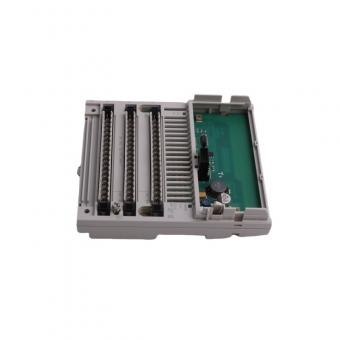 170ADI35000
170ADI35000
The Schneider Electric 170ADI35000 is a discrete input module that is part of the Modicon Momentum automation platform. This module is used for monitoring the state of discrete inputs in industrial control systems. Here are the key specifications: Specifications: Product Type: Discrete input module Input Type: 32 points for 24 V DC inputs Input Voltage: 24 V DC, positive logic (sink) Number of Inputs: 32 Input Current: Typically 4 mA per input at 24 V DC Response Time: 2 ms (filter) Isolation: 500 V AC between channels and logic Power Consumption: Low power consumption due to efficient design Diagnostics: LED indicators for module and input status Operating Temperature: -25 to 70°C Mounting: DIN rail or panel mounting Compatibility: Compatible with Modicon Momentum I/O bases and controllers Application: Used in factory automation, process control, and other industrial applications.
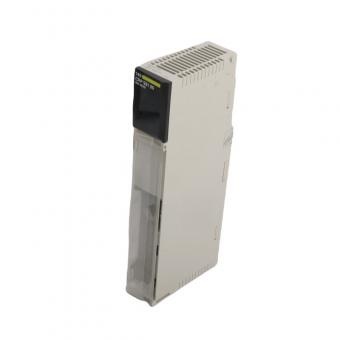 140CRP93100
140CRP93100
The Schneider Electric 140CRP93100 is a RIO Head-End Adapter Module designed for use with the Modicon Quantum series. This module facilitates communication in Remote Input/Output (RIO) configurations, allowing integration with various remote I/O modules and devices. Key Features and Specifications: Product Type: RIO Head-End Adapter Module Compatibility: Specifically designed for the Modicon Quantum series Functionality: Acts as the central interface for connecting remote I/O modules in a RIO configuration Communication Protocols: Supports Modbus protocol for communication with I/O devices Number of RIO Connections: Typically supports multiple RIO connections for scalability in network configurations Diagnostics: Equipped with LED indicators for monitoring module status and operational health Mounting: Standard DIN rail mounting for easy installation in control panels Operating Temperature: -25 to 60°C, suitable for harsh industrial environments Power Supply: Powered through the Quantum system backplane Applications: Industrial Automation: Ideal for systems requiring distributed control and monitoring of field devices over longer distances. Process Control: Used in applications where remote monitoring and control are necessary. Benefits: Scalability: Enables easy expansion of I/O capabilities within a modular automation system. Reliability: Ensures robust communication between the central controller and remote I/O modules, enhancing system reliability. This RIO head-end adapter module is essential for establishing and managing remote I/O configurations in Modicon Quantum applications, providing a flexible and efficient solution for industrial automation.
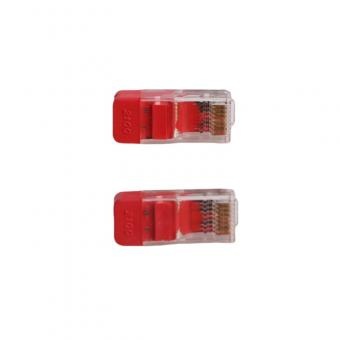 170XTS02100
170XTS02100
The Schneider Electric 170XTS02100 is a Modbus Plus RJ45 line terminator. It is designed to terminate the Modbus Plus network to prevent signal reflection, ensuring proper communication between Modbus Plus devices. Proper network termination is essential for maintaining signal integrity, particularly in long cable runs or complex networks. Key Features: Model: 170XTS02100 Type: Modbus Plus RJ45 line terminator Connector Type: RJ45 Usage: Ensures correct termination of the Modbus Plus network Manufacturer: Schneider Electric This component is vital for Modbus Plus networks and should be used at the endpoints of the network to guarantee communication reliability and network performance.
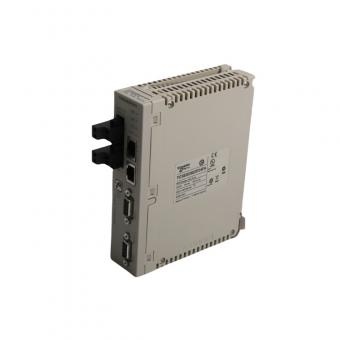 TCSEGDB23F24FA
TCSEGDB23F24FA
The Schneider Electric TCSEGDB23F24FA is a Modbus Plus Proxy Module from the Modicon M340 range, designed to enable communication between Modbus TCP/IP networks and Modbus Plus devices. This module plays a critical role in allowing existing Modbus Plus devices to communicate with modern PLCs without modifying their application software, facilitating integration in industrial automation systems. Key Features and Specifications: Product Type: Modbus Plus Proxy Module Number of Slaves Supported: Up to 128 slaves Interfaces: 2 Ethernet TCP/IP ports (RJ45, 10/100BASE-T) for Modbus TCP communication 2 Modbus Plus ports (SUB-D 9 connector, RS485) for Modbus Plus communication Power Supply: External power supply with current consumption of 300 mA at 24V DC Mounting Options: Can be mounted on a rack or DIN rail Integrated Connections: Ethernet and Modbus Plus interfaces for seamless integration in automation systems Enclosure and Coating: White coating for industrial environments Standards and Certifications: UL 508 CSA 22.2 cUL EMI EN 55011 EN 61131-2 C-Tick Compatibility: Fully compatible with Modicon M340 Programmable Logic Controllers (PLCs) Dimensions: Compact form factor, making it suitable for space-constrained installations Applications: Suitable for use in various industries, including process industries, renewable energy, water treatment, cement, manufacturing, infrastructure, and machinery applications. Additional Information: Connectivity: The module allows seamless integration of Modbus Plus devices into a modern Ethernet-based architecture via Modbus TCP, enhancing the flexibility of legacy systems. Installation: It comes with a mounting plate and two front-mounted power supply connectors for easy installation and integration into the system. This module is ideal for industrial automation environments that require robust, real-time communication between new and legacy devices.
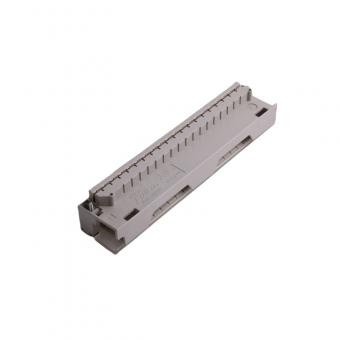 140XTS00200
140XTS00200
The Schneider Electric 140XTS00200 is a terminal block designed for use with the Modicon Quantum series. It provides a secure and organized way to connect field wiring to the I/O modules within the Modicon Quantum system. Key Features and Specifications: Product Type: Terminal Block Compatibility: Designed specifically for Modicon Quantum I/O modules Number of Terminals: Typically supports multiple terminals for easy wiring Connection Type: Screw terminal connections for reliable field wiring Mounting: Can be easily mounted on the I/O modules, providing a neat installation Wiring Capacity: Suitable for standard industrial wiring sizes Durability: Built to withstand the demands of industrial environments Applications: Industrial Automation: Facilitates the connection of sensors, actuators, and other field devices to the Modicon Quantum PLC system. Control Panels: Used in control panels where organized and secure wiring is crucial. Benefits: Easy Installation: Simplifies the process of connecting and disconnecting field wiring. Reliability: Ensures stable and secure connections, reducing the risk of wiring issues in automation systems. This terminal block is essential for maintaining a clean and efficient wiring setup in Modicon Quantum applications.
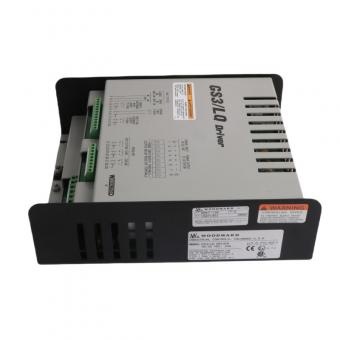 9907-135
9907-135
The Woodward 9907-135 GS3/LQ Driver Module is part of Woodward's series of control modules used in industrial applications, specifically designed for gas turbine and engine control. This module provides precise control over liquid and gas fuel delivery, making it essential in managing the performance and efficiency of engines and turbines in various power generation and mechanical drive systems. Key Features: Fuel Delivery Control: The GS3/LQ Driver Module is responsible for controlling both gas and liquid fuel systems, allowing for dual-fuel management in turbines or engines. It ensures accurate regulation of fuel injection for optimal combustion and efficiency. Integrated Driver Functionality: The module acts as a driver for actuators and valves that control the flow of gas and liquid fuels. Provides real-time adjustments to fuel delivery based on operational conditions, ensuring precise control. Multi-Fuel Capability: Supports both liquid and gaseous fuel operation, making it versatile for different types of engines or turbines. This dual-fuel capability provides operational flexibility, allowing switching between fuels as needed. Optimized for Gas and Liquid Turbine Applications: The module is specifically designed for use with gas turbines or engines that may switch between liquid and gaseous fuels during operation. Enhanced System Protection: The 9907-135 driver module includes integrated system protection features that help prevent issues such as overfueling, underfueling, or improper fuel-air ratios, reducing the risk of damage to the turbine or engine. Real-Time Monitoring and Control: Provides real-time feedback on fuel usage, performance, and system status, enabling operators to make quick adjustments as needed for optimal performance. Integration with Other Control Systems: The module is designed to seamlessly integrate with other Woodward control systems, allowing for easy coordination with speed, load, and other control functions in turbines or engines. Works well in parallel with larger Woodward control architectures, such as governors and fuel management systems. Durable Construction: Like other Woodward products, the 9907-135 GS3/LQ Driver Module is designed to withstand the harsh conditions typical of industrial environments, such as temperature fluctuations, vibration, and electrical noise. Applications: Gas and Liquid Fuel Engines: Ideal for applications involving engines or turbines that require precise control over both gas and liquid fuel systems. Power Generation: Widely used in gas and liquid fuel turbines for power plants, ensuring efficient and stable operation. Industrial Mechanical Drives: Suitable for turbines or engines driving industrial equipment where accurate fuel control is critical for performance. Technical Specifications: Model: 9907-135 GS3/LQ Driver Module Fuel Types: Supports both gas and liquid fuel systems. Functionality: Provides real-time control and adjustments for fuel delivery via actuator and valv...
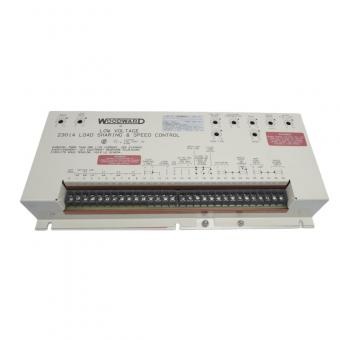 9905-068 2301
9905-068 2301
The Woodward 9905-068 2301A Load Sharing and Speed Control module is part of Woodward’s 2301A series, which provides precise speed control and load sharing for diesel and gas engines or turbines. These controllers are used in applications where multiple engines or turbines need to operate in parallel. Key Features: Load Sharing: The module automatically adjusts the load sharing between engines or turbines operating in parallel, ensuring that no single unit is overloaded. Speed Control: Provides isochronous (constant speed regardless of load changes) and droop (speed varies slightly with load) speed control for engines and turbines. Can be set to maintain speed within very tight tolerances. Isochronous and Droop Operation: Isochronous Mode: Keeps the engine speed constant under varying load conditions. Droop Mode: Allows speed to decrease slightly as the load increases, improving stability in some systems. Multi-Engine and Multi-Turbine Applications: Ideal for use in installations where multiple engines or turbines must operate in parallel, such as power plants, marine applications, and large industrial setups. Compatibility: The controller is compatible with a wide variety of prime movers, including diesel engines, gas turbines, and gas engines. Manual Adjustments: The 9905-068 model allows for manual adjustments of the speed and load settings, which can be useful in specific operational scenarios. Voltage and Frequency: Supports operation at various voltage and frequency levels, depending on the connected generators or turbines. System Flexibility: Capable of working with most existing system configurations, providing an upgrade path for older control systems while supporting modern technologies. Technical Specifications: Model: 9905-068 Series: 2301A Load Sharing and Speed Control Power Supply: Designed to work within common power supply ranges used in generator and engine control systems. Mounting: Rack-mounted or panel-mounted installation options are available. Applications: Power Generation Systems: Provides stable control for power plants, especially when multiple generators must operate in unison. Marine Applications: Commonly used in ships where multiple engines must work together to provide propulsion or generate electricity. Industrial Plants: Used in facilities where multiple engines or turbines are used for continuous power supply.
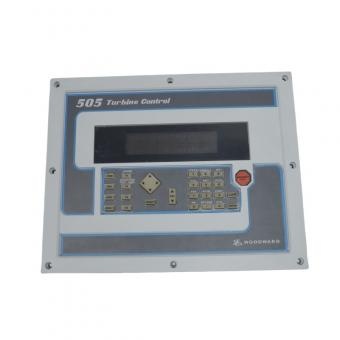 9907-164
9907-164
The Woodward 9907-164 Digital Microprocessor Controller Module is an advanced control unit designed for precise and reliable management of industrial engines, generators, and other power systems. It integrates digital microprocessor technology to provide sophisticated control and monitoring capabilities. Key Features: Digital Microprocessor Control: Utilizes a digital microprocessor to execute control algorithms with high precision and reliability. Enables complex control functions such as load sharing, speed regulation, and system diagnostics. Versatile Control Functions: Capable of managing various aspects of engine and generator operation, including start/stop sequences, load management, and performance optimization. Supports functions such as fuel control, ignition timing, and speed regulation. Real-Time Monitoring: Provides real-time data on system parameters such as engine speed, temperature, and load. Includes diagnostic tools for identifying and troubleshooting system issues. Communication Interfaces: Typically supports multiple communication protocols, allowing integration with other control systems and monitoring tools. May include interfaces for Modbus, CANbus, or other standard industrial communication protocols. User Interface: Includes a user interface for configuring control parameters, monitoring system status, and making adjustments. The interface may feature a display panel with graphical representations of system data and controls for easy interaction. Protection Features: Equipped with protection mechanisms to safeguard the engine or generator from potential faults such as over-speed, over-temperature, or low oil pressure. Provides alarms and shutdown capabilities to prevent damage and ensure safe Applications: Power Generation: Controls and manages engines and generators in power generation facilities, ensuring efficient and reliable power output. Industrial Engines: Used in various industrial applications to control engine performance and optimize operation. Marine Systems: Applied in marine environments for managing propulsion systems and onboard generators. Backup Power Systems: Ensures effective management of backup generators, providing reliable power during outages and emergencies. Technical Specifications: Model: Woodward 9907-164 Type: Digital Microprocessor Controller Module Functions: Engine and generator control, load sharing, speed regulation, diagnostics Interfaces: Multiple communication protocols (e.g., Modbus, CANbus) Protection: Built-in safeguards against over-speed, over-temperature, and other faults Design: Industrial-grade, durable construction
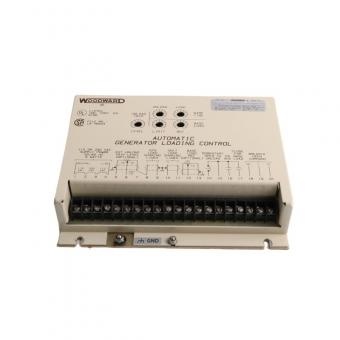 9905-096
9905-096
The Woodward 9905-096 Automatic Generator Loading Control module is designed to automate and optimize the loading process for generators. It ensures efficient operation by managing generator loading automatically based on system requirements and conditions. Key Features: Automatic Load Management: Automatically adjusts the load on generators based on real-time demand and operational conditions. Balances the load between multiple generators if used in parallel, ensuring efficient utilization and preventing overloads. Load Sharing: Integrates with load sharing systems to evenly distribute the electrical load among multiple generators. Enhances system reliability and prevents any single generator from being overburdened. Dynamic Control: Provides dynamic control of generator loading, adapting to changes in load requirements and operational conditions. Ensures optimal generator performance and fuel efficiency. Real-Time Monitoring: Monitors generator performance and load in real-time, providing data and feedback on system status. Includes diagnostic capabilities to identify and troubleshoot potential issues. User Interface: Typically features a user interface for configuring control settings, monitoring system performance, and making adjustments. The interface may include displays and controls for ease of use. Integration: Designed for integration with existing generator control systems and load management setups. Supports communication with other control modules and monitoring systems. Protection and Safety: Includes protection features to safeguard generators from potential issues such as overloading, underloading, or system faults. Provides alarms and safety shutdown functions to prevent damage and ensure safe operation. Durable Construction: Built to withstand industrial environments, including high temperatures, vibrations, and electrical noise. Ensures reliable performance in demanding conditions Applications: Power Generation Plants: Automates generator loading in power generation facilities to ensure efficient operation and load distribution. Industrial Facilities: Used in industrial environments where multiple generators are employed to support critical processes. Backup Power Systems: Manages load distribution in backup power systems, providing reliable performance during outages. Marine Systems: Applied in marine environments for managing generator loading on ships and offshore platforms. Technical Specifications: Model: Woodward 9905-096 Type: Automatic Generator Loading Control Functions: Load management, load sharing, real-time monitoring, protection User Interface: Includes displays and controls for configuration and monitoring Construction: Industrial-grade, durable for harsh environments
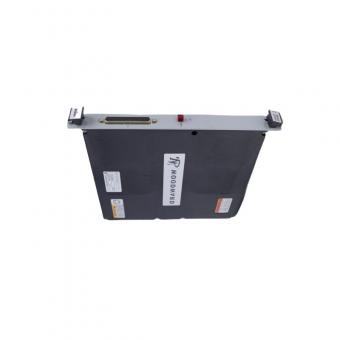 5464-414
5464-414
The WOODWARD 5464-414 is a digital speed sensor designed to measure and monitor the rotational speed of engines or turbines. It provides precise speed data to control systems for efficient engine or turbine management. What applications is the 5464-414 Digital Speed Sensor suitable for? This sensor is commonly used in industrial applications such as power generation, marine propulsion, and oil and gas, where accurate speed measurement of rotating machinery is critical for safe and efficient operations. How does the WOODWARD 5464-414 measure speed? The 5464-414 uses digital signal processing to convert rotational motion into electrical signals, which are then transmitted to the control system to provide real-time speed data. What type of output does the 5464-414 provide? The sensor provides a digital output signal, which can be read by various control systems to monitor the speed of the engine or turbine. This digital signal ensures precise and reliable speed data. Can the WOODWARD 5464-414 be integrated into existing control systems? Yes, the 5464-414 is designed for compatibility with various Woodward and other industrial control systems, making it suitable for both new installations and retrofits in existing setups. What is the primary function of the 5464-414 in turbine or engine systems? The primary function is to provide accurate speed measurements, which are essential for controlling and protecting engines and turbines from overspeed, optimizing performance, and maintaining safe operation.
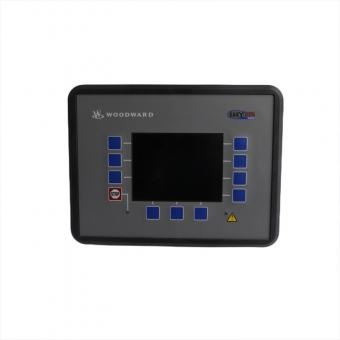 8440-2050
8440-2050
The easYgen-3200 combines complete engine-generator control and protection with advanced, peer-to-peer paralleling functionality and innovative features in a robust, attractive and user-friendly package. Woodward's easYgen-3200™ Series paralleling genset controllers provide exceptional versatility and value for OEM switchgear builders, generator packagers, and system integrators. The easYgen-3200 combines complete engine-generator control and protection with advanced, peer-to-peer paralleling functionality and innovative features in a robust, attractive and user-friendly package. Its integrated LogicsManager™ programmable logic functionality provides outstanding application flexibility and can often eliminate the need for additional PLC control, yet can easily integrate with SCADA or PLC-based control systems where desired. The easYgen-3200 gives you the advantage of standardizing on a single, affordable genset controller for many different distributed power generation applications--from stand-alone emergency backup power to parallel load sharing of up to 32 gensets in complex, segmented distribution systems with multiple utility feeds and tie breakers.
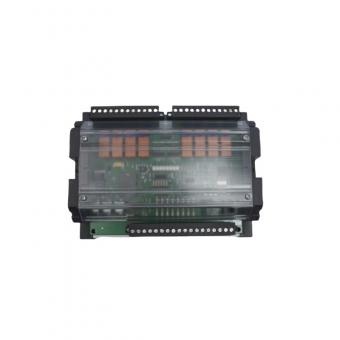 8440-2028
8440-2028
The IKD 1 is a smart solution to increase numbers of digital I/O’s to Woodward easYgen series controllers and GCP-31/32 packages equipped with option SC10 or SC09. It is possible to connect one or more IKD 1 units to the genset controllers FEATURES & FUNCTIONALITY Each of the inputs can be assigned a name, alarm class, NO/NC configuration and time de-lay. The name and class are displayed on the connected genset controller’s display. The IKD 1 output relays are controlled over the CAN bus connection from the main genset controller. Configuration of the IKD 1 is performed through the relay manager in the main controller and transmitted to the IKD 1. A Direct Configuration Cable (DPC) and software are available for purchase to facilitate configuration using a PC or laptop. This is especially recommended for extensive configuration tasks or when multiple similar units need to be set up. Key features include: 1.8 configurable discrete alarm inputs 2.8 configurable FORM C relays with potential-free contacts 3.Configurable delays for each input 4.CAN bus communication for data transfer and control The discrete inputs transmit their status via CAN bus to the control unit, which evaluates the input status and takes appropriate action based on its configuration. The control unit can also send commands via CAN bus to remotely control the output relays of the IKD 1. Additionally, the IKD 1 can be used with controllers from other manufacturers. For details on CAN bus interface address assignments, refer to product manual 37135.
 8440-1934
8440-1934
The Woodward 8440-1934 easYgen-3500 is part of the easYgen-3000 Series of generator control devices, designed for advanced power management and generator control in both single and multi-unit applications. The easYgen-3500 is particularly known for its flexibility, scalability, and comprehensive features, allowing it to handle complex load sharing, protection, and control tasks for generators in a wide variety of applications, including power plants, industrial facilities, and marine environments. Key Features: Advanced Generator Control: The easYgen-3500 offers complete control over both single and multi-unit generator systems, providing features such as automatic start/stop, synchronizing, load sharing, and protection. It supports up to 32 gensets in island, parallel, or complex network topologies. Load Sharing and Power Management: Integrated load sharing capability allows seamless distribution of load across multiple generators, ensuring optimal performance and fuel efficiency. Supports automatic generator control based on demand, with power factor control and kW/kvar sharing. Flexible Communication Options: The easYgen-3500 is equipped with a wide range of communication protocols, including Modbus (RTU and TCP/IP), CANopen, and Ethernet, allowing it to communicate with external devices such as SCADA systems, PLCs, or building management systems. It also supports remote monitoring and control, providing operators with real-time status updates and the ability to make adjustments from a distance. Comprehensive Protection Functions: The module includes a broad range of protective functions, such as over/under voltage, over/under frequency, reverse power, and more. Protects both the generator and the connected loads from electrical faults, ensuring safe and reliable operation. Multi-Breaker Management: The device can manage up to 16 breakers in a system, allowing for control over complex power systems with multiple power sources and load zones. Scalability and Expandability: The easYgen-3500 can be expanded to accommodate additional generators and functionalities, making it ideal for growing systems or those with future expansion needs. Applications: Power Generation Plants: Used for control and management of gensets in utility or backup power systems. Industrial Facilities: Ideal for large factories or facilities with multiple generators needing synchronized operation and load management. Marine Applications: Suitable for shipboard power management, providing efficient control of multiple generator units in marine environments. Data Centers: Applied in critical infrastructure for seamless power management and generator synchronization. Technical Specifications: Model: Woodward 8440-1934 easYgen-3500 Genset Control: Supports up to 32 gensets. Load Sharing: Integrated active and reactive load sharing across multiple gensets. Breakers: Capable of controlling up to 16 breakers. Communication Protocols: Modbus RTU, Modbus TCP/IP, CANopen, Ethernet. P...
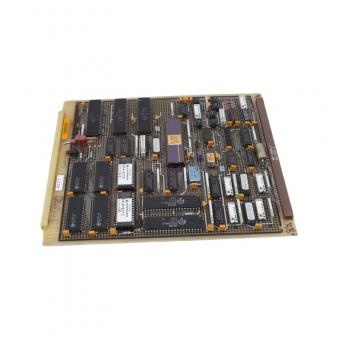 5463-473
5463-473
The Woodward 5463-473 SIO Module is a part of Woodward's control system accessories, designed to interface with various control systems, typically for industrial engine and turbine management. The module features on-board toggle switches and a male pin header, making it a versatile component for use in complex systems where input/output (I/O) management and control are essential. Key Features: On-Board Toggle Switch: The module comes with a built-in toggle switch, allowing for easy manual control of certain functions. This can be used for testing, calibration, or manual override in certain applications. Male Pin Header: The male pin header offers flexible connectivity, allowing the module to be easily integrated into larger systems through standard pin connections. This feature is important for connecting sensors, actuators, or other control devices. SIO (Serial Input/Output) Functionality: The module provides serial input/output functionality, supporting communication with external devices, systems, or components. Ideal for transmitting data between control units, sensors, and actuators in real-time. Durable Construction: Like other Woodward products, the 5463-473 module is designed for industrial environments, capable of withstanding temperature variations, vibrations, and harsh conditions. Versatile Application: Suitable for use in engine and turbine control systems, particularly in industrial and power generation environments. The toggle switch and pin header setup allows for easy modifications and testing in various stages of system operation. Applications: Engine and Turbine Control: The SIO module is commonly used in control systems for managing large engines and turbines. Power Generation: Often found in systems that require precise load management, synchronization, and control of generators. Industrial Automation: Suitable for complex automation setups that involve multiple control inputs and outputs. Technical Specifications: Model: 5463-473 Toggle Switch: On-board for easy manual operation and testing. Pin Header: Male pin header for flexible integration with other components and systems. I/O Functionality: Supports serial input/output for communication between control units and external devices.
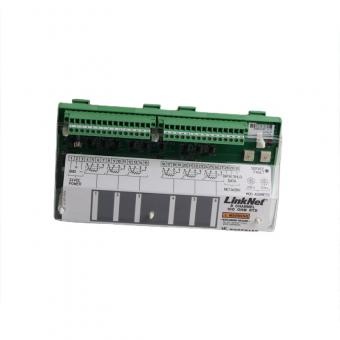 9905-970
9905-970
FUNCTIONAL DESCRIPTION: 9905-970 is a LinkNet 6-Channel Input Module manufactured and designed by Woodward as part of the 9900 Series used in Turbine Control Systems. The Linknet 6 Channel Input Module's primary function is to provide the control system with up to six analog input signals, which can be used to monitor various parameters in the turbine system. These input signals could come from sensors that measure things like temperature, pressure, or flow rate, for example. By monitoring these parameters, the control system can make adjustments to the operation of the turbine to optimize its performance and ensure safe and efficient operation. SPECIFICATIONS: ■Part Number: 9905-970 ■Manufacturer: Woodward ■Product type: LinkNet 6-Channel Input Module ■Input Voltage: 24 Vdc ■Maximum Operating Current: 12 V ■Operating Temperature: -40°C to +85°C ■Signal Input Impedance: 33K Ohms ■Display: 24-character LEDs ■Power Supply Transient Protection: 900 Vdc ■Availability: In Stock ■Country of Manufacture: United States (USA) FEATURES: ■Multiple input channels: Provides up to six input channels, which allows for the monitoring of multiple parameters simultaneously. ■Analog input signals: The module accepts analog input signals, which are commonly used in turbine control systems to monitor parameters like temperature, pressure, and flow rate. ■High accuracy: Designed to provide highly accurate measurements of input signals, which is essential for maintaining safe and efficient turbine operation. ■Wide input range: Supports a wide range of input signals, including signals with voltages ranging from 0-10V and currents ranging from 0-20mA. ■Scalability: Can be used in conjunction with other Linknet components to create a scalable control system that can be customized to meet the needs of different turbine applications. ■Easy installation: Easy to install and configure, thanks to its plug-and-play design and user-friendly interface.
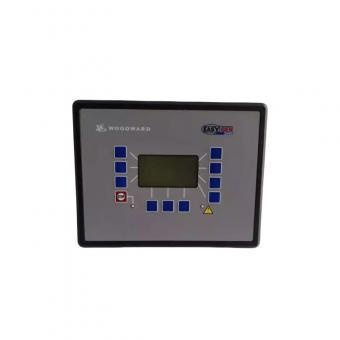 EASYGEN-2500-5
EASYGEN-2500-5
The easYgen-2500-5 allows for proportional load sharing between multiple generators in parallel. It can manage both active and reactive power sharing to ensure stable operation, regardless of genset size. Can the easYgen-2500-5 synchronize multiple generator sets? Yes, the easYgen-2500-5 can synchronize up to 16 generator sets, ensuring they operate efficiently in parallel and share the load equally. Is the easYgen-2500-5 capable of remote monitoring and control? Yes, the easYgen-2500-5 supports remote monitoring and control through standard communication protocols such as Modbus RTU and CAN bus. It can be integrated with SCADA systems or remote control panels for enhanced visibility and management. Does the easYgen-2500-5 offer engine and generator protection? Yes, the controller includes various protection features for both the engine and generator, such as over/under voltage protection, over/under frequency protection, overcurrent protection, and engine fault detection.
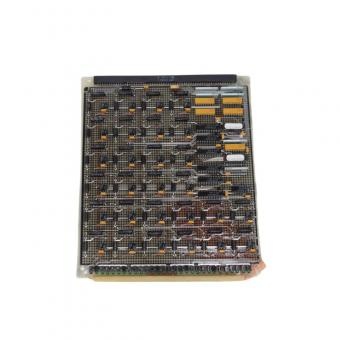 5462-757
5462-757
The Woodward 5462-757 Input Module is a versatile component designed for use in control and monitoring systems, particularly in applications requiring multiple inputs with visual status indications. This module is commonly used in industrial and power generation systems where monitoring and control of various signals are essential. Key Features: High-Channel Capacity: The 5462-757 features 28 channels for input signals, allowing it to handle a large number of discrete inputs in a single module. This makes it suitable for systems with extensive monitoring requirements. LED Indication: Each channel on the module is equipped with LED indicators to provide real-time status of the input signals. LED indicators help operators quickly assess the state of each input, facilitating easier monitoring and troubleshooting. Versatile Input Types: The module can accommodate various types of input signals, including discrete (on/off) signals from sensors, switches, and other devices. It supports a wide range of voltage levels and signal types, making it adaptable to different applications. Integration and Compatibility: Designed for integration with Woodward control systems and other industrial automation systems. It typically interfaces with a central control unit or programmable logic controller (PLC) to process the input signals. Durable Construction: Built to withstand the rigors of industrial environments, including high temperatures, vibrations, and electrical noise. Ensures reliable performance in demanding conditions. Ease of Installation: The module is designed for straightforward installation and wiring, with clear labeling and connectivity options. Facilitates easy integration into existing control panels and systems. Applications: Industrial Automation: Used in manufacturing and process control systems to monitor a large number of input signals from various sensors and devices. Power Generation: Monitors input signals related to generator status, system alarms, and control signals in power generation facilities. Building Management Systems: Integrates with building management systems to handle input from various sensors and control devices. Marine Systems: Applied in marine environments for monitoring and controlling various systems and equipment on ships and offshore platforms. Technical Specifications: Model: Woodward 5462-757 Type: Input Module Channels: 28 Indicators: LED status indicators for each channel Input Types: Discrete signals (on/off) Construction: Industrial-grade, designed for high durability
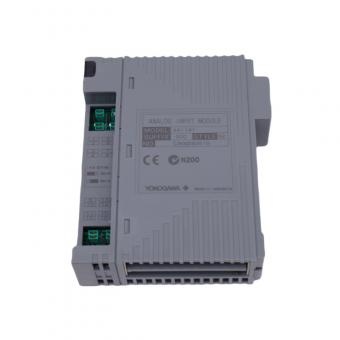 AAI141-S00 S2
AAI141-S00 S2
The YOKOGAWA AAI141-S00 S2 Analog Input Module is used in Yokogawa's control systems to interface with various analog input signals. Here’s a detailed overview: YOKOGAWA AAI141-S00 S2 Analog Input Module Overview: The AAI141-S00 S2 module is designed to receive and process analog signals from field instruments and sensors. It converts these analog signals into a format that can be used by the control system for monitoring and control purposes. Key Features: Input Channels: Provides multiple channels for connecting analog sensors and transmitters. Signal Types: Supports various input types, including 4-20 mA current, 0-10 V voltage, and possibly others depending on the configuration. Signal Conditioning: Includes internal signal conditioning to ensure accurate data acquisition. Isolation: Channels are electrically isolated to prevent interference and ensure reliable operation. Specifications: Number of Inputs: Typically supports 8 or 16 analog input channels, but check the specific model for exact details. Input Ranges: Configurable for different signal ranges such as 4-20 mA, 0-10 V, and other common analog signal types. Resolution: High resolution for precise signal measurement. Accuracy: Designed for high accuracy in converting analog signals to digital data. Isolation: Provides electrical isolation between channels to reduce noise and protect the system. Mounting Type: DIN rail or similar standard mounting for easy installation in control panels. Operating Temperature Range: Generally operates within a standard range, such as 0°C to 60°C. Applications: Process Monitoring: Used to monitor and control industrial processes by interfacing with analog sensors. Data Acquisition: Collects and processes analog data from various field devices for system control and analysis. Ordering Information: Model Number: AAI141-S00 S2 Part Number: For exact part numbers and configurations, refer to Yokogawa’s catalog or documentation.
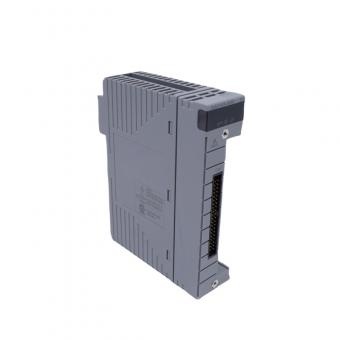 AAI143-S00 S1
AAI143-S00 S1
The AAI143-S00 S1 is designed to process analog current input signals and convert them into digital data for control and monitoring systems. It is typically used in distributed control systems (DCS) for industrial automation. Here is a table based on the provided specifications for Model AAI143: Specification Details Model AAI143 (*1) Number of input channels 16, isolated Input signal 4 to 20 mA Allowable input current 24 mA Withstanding voltage Between input and system: 1500 V AC, for 1 minute (*4) Input resistance (Power ON) 270 Ω (20 mA) to 350 Ω (4 mA) (*2) Input resistance (Power OFF) 500 kΩ or larger Accuracy ±16 µA Data update period 10 ms Transmitter power supply 19.0 V or higher (at 20 mA), 25.5 V or less (at 0 mA) (output current limit: 25 mA) (*5) Setting of 2-wire or 4-wire transmitter For each channel by setting pin Drift due to ambient temperature change ±16 µA/10 ˚C Maximum current consumption 230 mA (5 V DC), 540 mA (24 V DC) Weight 0.3 kg External communication Pressure clamp terminal, MIL connector cable, dedicated cable (KS1) HART communication Available (*3)
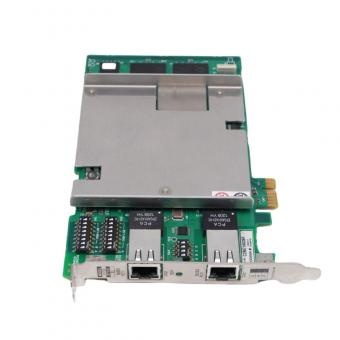 VI702
VI702
The YOKOGAWA VI702 Vnet/IP Interface Card is a crucial component in Yokogawa’s process control and automation systems, facilitating communication between different system elements via the Vnet/IP protocol. Here’s an overview: YOKOGAWA VI702 Vnet/IP Interface Card Overview: The VI702 is an interface card designed for communication over the Vnet/IP network, enabling integration and data exchange between various modules and systems within Yokogawa’s control architecture. Key Features: Communication Protocol: Utilizes the Vnet/IP protocol, which is Yokogawa's proprietary network protocol for real-time data transfer and system integration. Interface Functionality: Connects control systems, field devices, and other modules to the Vnet/IP network, ensuring seamless data communication. High-Speed Data Transfer: Supports high-speed communication for real-time monitoring and control. Network Integration: Enables integration of Yokogawa’s control systems with other Vnet/IP-compatible systems and devices. Specifications: Network Interface: Vnet/IP (Yokogawa’s proprietary network protocol). Data Transfer Rate: Supports high-speed data transfer to ensure real-time performance. Compatibility: Designed to work with Yokogawa’s CENTUM VP and other process control systems. Mounting Type: Typically installed in standard control system racks or cabinets. Operating Temperature Range: Generally operates within a standard industrial temperature range, such as 0°C to 60°C. Applications: Process Control: Facilitates communication between different components in a process control system. System Integration: Connects various modules and systems, enabling data exchange and integration. Real-Time Monitoring: Supports real-time data transfer and system monitoring. Ordering Information: Model Number: VI702 Part Number: Refer to the manufacturer’s catalog or documentation for specific ordering information and any additional options.
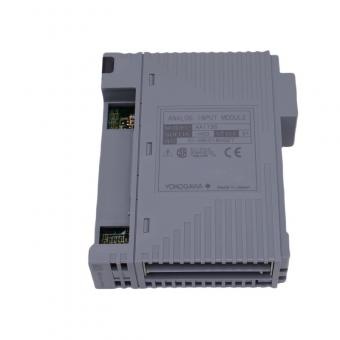 AAI135-H03 S1
AAI135-H03 S1
YOKOGAWA AAI135-H03 S1 Analog Input Module Overview: The AAI135-H03 S1 module is designed for accurate and reliable acquisition of analog signals from field devices. It supports a range of analog input types and provides essential data for process monitoring and control. Key Features: Analog Inputs: Provides multiple channels for receiving analog signals from various sensors and devices. Signal Conditioning: Includes internal signal conditioning to ensure accurate and stable signal measurement. High Accuracy: Designed to deliver high-precision measurements for reliable process control. Isolation: Features electrical isolation to protect the module and control system from electrical noise and interference. Specifications: Number of Channels: Typically supports 8 analog input channels. Input Types: Compatible with various analog input types, such as 4-20 mA, 0-10 V, thermocouples, RTDs, etc. Input Range: Supports a range of input signals depending on the configuration and sensor type. Resolution: High resolution for precise measurement of analog signals. Accuracy: High accuracy to ensure reliable data for process control. Isolation: Electrical isolation between channels to prevent interference and maintain signal integrity. Mounting Type: Designed for installation in standard control racks or panels. Operating Temperature Range: Typically operates within an industrial temperature range, such as 0°C to 60°C. Applications: Process Monitoring: Collects and processes data from analog sensors for monitoring various process variables. Automation Systems: Interfaces with control systems to provide real-time data for automation tasks. Data Acquisition: Captures analog signals for analysis and control in industrial environments. Ordering Information: Model Number: AAI135-H03 S1 Part Number: For specific part numbers and ordering details, refer to Yokogawa’s catalog or official documentation.
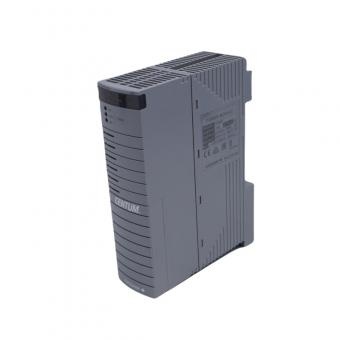 PW482-50 S2
PW482-50 S2
The YOKOGAWA PW482-50 S2 Power Supply Module is designed to provide reliable and stable power for various Yokogawa control systems and modules. Here’s an overview of its key features and specifications: Features: Power Supply Function: Provides power to Yokogawa field control systems, modules, and other associated equipment. High Efficiency: Ensures efficient energy use and minimizes power loss. Reliability: Built for industrial environments with high reliability and long service life. Protection: Includes over-voltage, over-current, and short-circuit protection to safeguard connected equipment. Specifications: Model: PW482-50 S2 Type: Power Supply Module Input Voltage: Typically accepts an input voltage range of 100-240V AC. Output Voltage: Commonly provides a stable 24V DC output. Output Current: Capable of supplying up to 5A of current. Power Rating: Rated for a specific power output, generally in the range of 120-150W. Mounting: Usually designed for DIN rail or panel mounting. Operating Temperature: Typically operates within a temperature range of 0°C to 50°C. Dimensions: Compact design to fit into standard control panels or enclosures. Applications: Control Systems: Supplies power to Yokogawa control systems and modules. Industrial Automation: Used in industrial automation setups to ensure stable power for various devices. Field Equipment: Provides power to field devices and sensors within the control system.
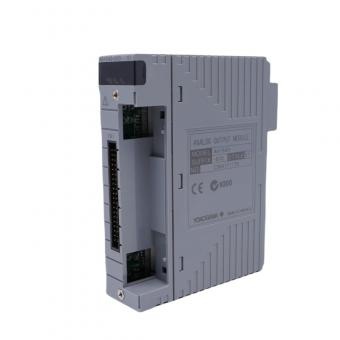 AAI543-S00 S1
AAI543-S00 S1
YOKOGAWA AAI543-S00 S1 Analog Output Module Overview: The AAI543-S00 S1 module is designed for providing analog output signals from a control system to external devices. It is used to transmit control signals to actuators, valves, and other field devices that require analog input. Key Features: Analog Outputs: Provides multiple analog output channels for controlling various field devices. Signal Types: Capable of handling different types of analog signals such as 4-20 mA or 0-10 V, depending on configuration. High Accuracy: Designed for high precision and stability in output signal generation. Isolation: Includes electrical isolation to prevent interference and ensure signal integrity. Specifications: Number of Channels: Typically provides 4 or 8 analog output channels, depending on the specific module configuration. Output Range: Supports output ranges such as 4-20 mA, 0-10 V, or other configurable ranges. Resolution: High resolution for precise control of analog signals. Accuracy: Designed to deliver accurate and stable output signals. Isolation: Provides electrical isolation between output channels to protect the control system and ensure reliability. Mounting Type: Generally mounted in standard control racks or panels. Operating Temperature Range: Usually operates within an industrial temperature range, such as 0°C to 60°C. Applications: Process Control: Interfaces with field devices to provide control signals for process operations. Automation Systems: Used to control actuators, valves, and other devices in industrial automation systems. Signal Transmission: Converts digital control signals into analog outputs for external use. Ordering Information: Model Number: AAI543-S00 S1 Part Number: Refer to Yokogawa’s catalog or documentation for specific part numbers and ordering details.
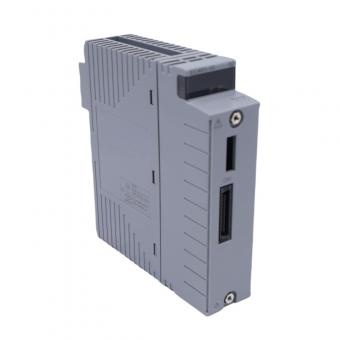 EC401-10 S2
EC401-10 S2
The YOKOGAWA EC401-10 S2 ESB Bus Coupler Module is a component designed for use in Yokogawa's Exaquantum and FAST/TOOLS systems. Here’s a detailed overview: YOKOGAWA EC401-10 S2 ESB Bus Coupler Module Overview: The EC401-10 S2 is a bus coupler module used to connect the ESB (Ethernet Smart Bus) network to other system components. It plays a crucial role in integrating different field devices and controllers into a unified system. Key Features: Bus Interface: Connects to the ESB network, enabling communication between various networked components. Communication Protocols: Supports Ethernet-based communication, providing reliable data transfer within the network. Compatibility: Works with Yokogawa's Exaquantum and FAST/TOOLS systems, facilitating seamless integration. Diagnostic Functions: Includes features for monitoring and diagnosing network status and performance. Specifications: Input Voltage: Typically powered by the ESB network. Operating Temperature Range: Usually operates within a specified range to ensure reliability. Mounting Type: DIN rail mounting for ease of installation. Dimensions: Compact design to fit in standard control cabinets. Applications: Process Control: Used in industrial settings for process automation and monitoring. Data Acquisition: Facilitates the integration of various sensors and devices into the data acquisition system. Ordering Information: Model Number: EC401-10 S2 Part Number: Refer to the manufacturer's catalog for specific part numbers and configurations.
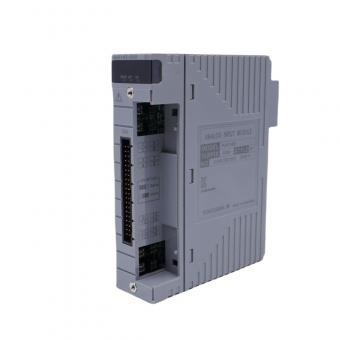 AAI143-S50 S1
AAI143-S50 S1
The YOKOGAWA AAI143-S50 S1 is an analog input module used in Yokogawa’s control systems, such as the CENTUM VP series. It is designed to interface with various analog sensors and devices, converting their signals into data that can be processed by the control system. YOKOGAWA AAI143-S50 S1 Analog Input Module Overview: The AAI143-S50 S1 module is utilized for collecting and processing analog signals from field devices. It provides accurate data acquisition and signal conditioning to ensure reliable monitoring and control within the control system. Key Features: Analog Inputs: Provides multiple analog input channels for interfacing with various sensors and field devices. Signal Conditioning: Includes internal signal conditioning to enhance accuracy and reliability. High Accuracy: Designed to deliver precise measurement and signal processing. Isolation: Features electrical isolation to protect against noise and ensure signal integrity. Specifications: Number of Channels: Typically supports 8 analog input channels. Input Types: Capable of handling various analog input types such as 4-20 mA, 0-10 V, thermocouples, RTDs, etc. Resolution: High resolution for accurate measurement of analog signals. Accuracy: High accuracy in signal processing to ensure reliable data. Isolation: Electrical isolation between channels to prevent interference and ensure signal integrity. Mounting Type: Designed for installation in standard control racks or panels. Operating Temperature Range: Typically operates within an industrial temperature range, such as 0°C to 60°C. Applications: Process Monitoring: Collects and processes data from analog sensors to monitor process variables. Automation Systems: Integrates with control systems to provide real-time data for process control. Data Acquisition: Captures analog signals for analysis and control in industrial environments. Ordering Information: Model Number: AAI143-S50 S1 Part Number: Check Yokogawa’s catalog or documentation for specific part numbers and ordering details.
 ET5*B
ET5*B
The YOKOGAWA ET5*B Signal Conditioner Cards are used in industrial automation systems to condition and process various types of input signals. These cards are part of Yokogawa's signal conditioning modules, designed to handle signals from different field devices and prepare them for use in control systems. Here’s an overview: YOKOGAWA ET5*B Signal Conditioner Cards Overview: The ET5*B series includes signal conditioner cards that provide accurate signal conversion, isolation, and amplification. They are used to ensure that signals from sensors and other input devices are correctly processed and interpreted by the control system. Key Features: Signal Conditioning: Conditions various types of input signals, including voltage, current, and temperature signals. Isolation: Provides electrical isolation between input and output to protect against noise and interference. Signal Conversion: Converts analog signals into a format suitable for processing by the control system. Modular Design: Typically part of a modular system, allowing for flexible configuration and expansion. Specifications: Input Types: Various models support different input types, such as 4-20 mA, 0-10 V, thermocouples, RTDs, and more. Output Types: Provides standardized outputs compatible with control systems, often including 4-20 mA, 0-10 V, or digital signals. Resolution and Accuracy: High resolution and accuracy for precise signal conditioning. Mounting: Designed for installation in standard control cabinets or racks, often with DIN rail or rack-mount options. Operating Temperature Range: Typically operates within a standard industrial temperature range, such as 0°C to 60°C. Applications: Process Control: Used in process control systems to ensure accurate signal measurement and conditioning. Data Acquisition: Helps in the accurate collection and processing of data from various field instruments. Automation Systems: Integrates with control systems to facilitate the automation of industrial processes. Models: The ET5*B series includes different models with various specifications tailored to specific types of signals and applications. For example: ET5A-B: For voltage and current signal conditioning. ET5B-B: For temperature measurement with thermocouples or RTDs. Ordering Information: Model Number: ET5*B (e.g., ET5A-B, ET5B-B) Part Number: Check the manufacturer's catalog for specific part numbers and configurations.
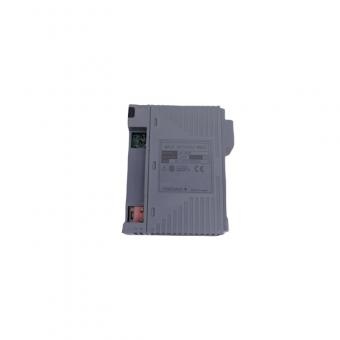 AAI835-H00 S1
AAI835-H00 S1
1.The AAI835-H00 S1 Analog I/O Module is used in industrial automation systems to provide analog input and output capabilities. It supports 4-20 mA signal processing for both input and output channels, with isolated channels to prevent interference. 2. What is the module's power supply requirement? The module typically requires a power supply of 24 V DC, but you should refer to the product datasheet for exact power requirements and consumption. 3. What is the input range for the AAI835-H00 S1 module? The input range for the analog inputs is 4-20 mA. This range is commonly used for current loop signals in process control applications. 4. What is the output range for the AAI835-H00 S1 module? The output range is also 4-20 mA, which is used to control devices or transmit signals in industrial processes. 5. How does the channel isolation work? Each channel in the AAI835-H00 S1 module is electrically isolated from the others. This isolation helps to prevent noise and interference from affecting the signals, ensuring accurate and reliable operation.
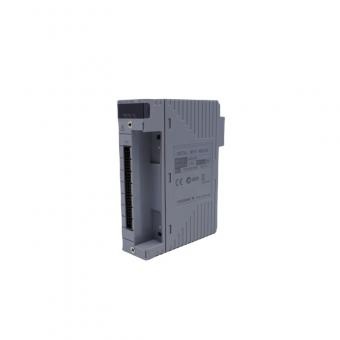 ADV151-P50 S2
ADV151-P50 S2
1.The ADV151-P50 S2 Digital Input Module is used in industrial automation systems to receive and process digital signals from various field devices such as switches, sensors, or relays. It converts these signals into a format that can be understood by the control system. 2. How many input channels does the ADV151-P50 S2 module have? The module typically features 16 digital input channels, allowing it to handle multiple digital inputs simultaneously. 3. What types of input signals can the ADV151-P50 S2 module process? The module processes digital signals from no-voltage contact or dry contact sources. The signals can be ON/OFF or discrete binary states. 4. What is the voltage range for the digital inputs? The input voltage range and characteristics are specified in the product datasheet. The module usually supports standard input voltages such as 24 V DC, but exact details should be checked in the documentation.
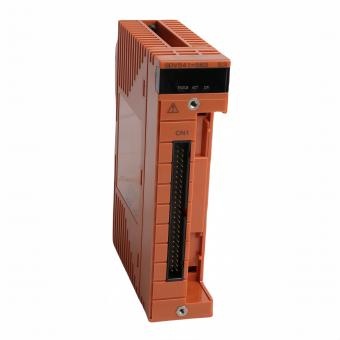 SDV541-S63 S3
SDV541-S63 S3
Product Description The YOKOGAWA SDV541-S63 S3 is a digital output module designed for use in distributed control systems (DCS) and programmable logic controllers (PLC). It provides reliable and precise digital signal output for controlling external devices such as actuators, solenoids, and relays. Detailed Product Parameters Dimensions:3.2 cm x 12.7 cm x 12.7 cm Weight:0.4 kg Output Channels:Multiple channels Output Voltage Range:24V DC or 48V DC (configurable) Output Current:Up to 0.5A per channel Communication Interface:Proprietary YOKOGAWA system protocol Operating Temperature Range:0°C to +55°C Frequently Asked Questions What is the main purpose of the YOKOGAWA SDV541-S63 S3 module? It is used to provide digital output signals for controlling external devices such as actuators, solenoids, and relays in industrial automation systems. What is the output voltage range for this module? The module supports output voltage ranges of 24V DC or 48V DC, depending on the configuration. How many output channels are available in the module? The number of channels depends on the specific configuration, but it typically supports multiple channels for versatility.
 OYDE-S BFOC 743536-101
OYDE-S BFOC 743536-101
Product Description: The HIRSCHMANN OYDE-S BFOC 743536-101 Fiber Optic Interface Module is a robust and efficient solution for connecting and integrating fiber optic networks within industrial communication systems. Designed to support high-speed, high-volume data transmission, this module is essential for ensuring secure and reliable communication over long distances in environments where electromagnetic interference or harsh conditions may be present.It provides a reliable and fast fiber optic link, offering superior performance compared to traditional copper-based communication methods. Specifications: Model: OYDE-S BFOC 743536-101 Product Type: Fiber Optic Interface Module Operating Voltage: 12 V Current Consumption: 200 mA Data Transmission Rate: Up to 100 Mbps Connector Type: SC or ST fiber optic connectors Transmission Distance: Up to 20 km Operating Temperature Range: -40°C to +70°C (-40°F to 158°F) Storage Temperature Range: -40°C to +85°C (-40°F to 185°F) Protection Class: IP20 Certifications: CE, UL Frequently Asked Questions (FAQ): 1.What is the operating voltage of the HIRSCHMANN OYDE-S BFOC 743536-101? The module operates at 12V, making it compatible with standard industrial voltage systems. 2.What is the current consumption of the OYDE-S BFOC module? The current consumption is 200 mA, which ensures efficient operation while minimizing energy consumption. 3.What fiber types are supported by the OYDE-S BFOC 743536-101? The module supports both single-mode and multi-mode fiber optic connections, depending on your network configuration.
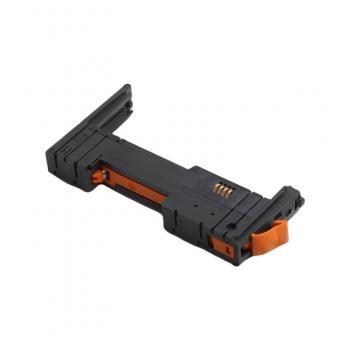 X20BM11
X20BM11
The X20BM11 Bus Module serves as the base module for 24 VDC I/O modules, providing connectivity and routing for the internal I/O power supply. Bus Module for 24 VDC I/O Modules serves as the base for all 24 VDC I/O modules and provides connectivity for the internal I/O power supply. Ambient Conditions: ■Temperature: ■Operation: 1.Horizontal mounting orientation: -25 to 60°C 2.Vertical mounting orientation: -25 to 50°C ■Storage: -40 to 85°C ■Transport: -40 to 85°C Relative Humidity: Operation: 5 to 95%, non-condensing Storage: 5 to 95%, non-condensing Transport: 5 to 95%, non-condensing
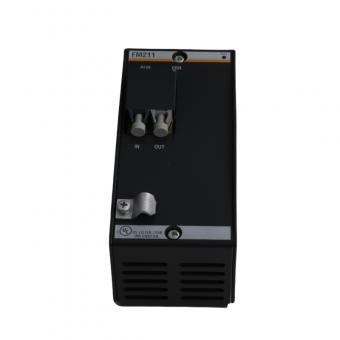 FM211
FM211
The BACHMANN FM211 is a FASTBUS module designed for high-performance control systems, typically used in industrial automation applications. Below are some key details about this module: Key Features: High-Speed Data Transfer: The FM211 module supports the FASTBUS communication protocol, allowing for rapid data exchange between modules in a distributed control system. Real-Time Processing: It is optimized for real-time processing, ensuring that critical data is transferred and processed with minimal latency, which is essential for time-sensitive industrial operations. Flexible Configuration: The FM211 module can be configured to meet a wide range of industrial requirements, including machine control, process automation, and other demanding applications. Modular Design: As part of the Bachmann M1 automation system, it can be integrated seamlessly with other modules in the series, providing scalability and flexibility. Robust Construction: It is designed to operate in harsh industrial environments, with protection against temperature extremes, vibrations, and electrical interference. Applications: Process Automation: Used in industries like oil and gas, energy, and manufacturing for controlling complex processes. Machine Control: Ideal for machine automation, where fast data processing and real-time control are required. Energy Systems: Frequently deployed in energy management systems for precise control and monitoring.
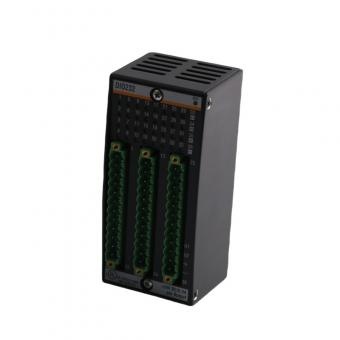 DIO232
DIO232
The DIO232 module is designed to interface with digital signals in industrial applications. It provides both input and output capabilities, allowing for the connection and control of various digital devices and sensors. The digital input/output modules DIO216/x and DIO232 are designed for interfacing with digital control devices such as contactors, relays, pneumatic and hydraulic valves, as well as for reading signals from digital sources like sensors, photocells, or switches. Features: ■16 or 32 digital channels ■16 channels that can be configured as either input or output ■Configurable interrupt inputs ■LED status display for each channel ■Supply voltage range: 18 to 34 VDC ■Reverse polarity protection for the supply voltage ■Cost-effective and space-saving design ■Direct wiring without additional potential rails (3-wire, available on DIO216) ■Configurable input filter (DIO232)
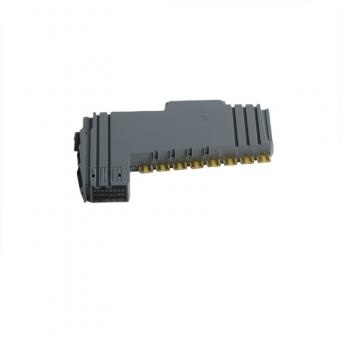 X20DIF371
X20DIF371
The X20DIF371 module is designed to handle 16 digital inputs for 24 VDC signals, specifically for 1-wire connections. It is used in automation systems for interfacing with digital sensors and control devices. The module features 16 digital inputs configured for sink connections and 1-wire connections. It includes a software-configurable input filter that can be applied to the entire module. The module is designed specifically for sink input wiring. B&R ID Code: 0xC0E8 Status Indicators: Displays I/O function per channel, operating state, and module status. Diagnostics: Module run/error status is indicated by an LED status indicator and can be monitored via software. Power Consumption: Bus: 0.18 W Internal I/O: 1.47 W
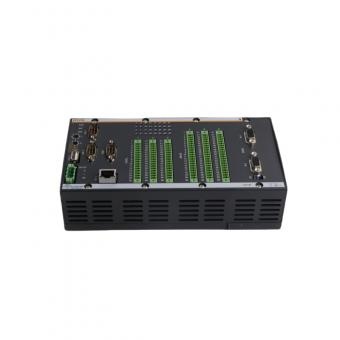 CPC210
CPC210
The CPC210 is a high-performance control module designed for complex automation and control tasks. It offers advanced processing capabilities and is typically used in demanding industrial applications for precise control and monitoring. What are the key features of the CPC210 module? Key features include high processing power, extensive I/O capabilities, advanced communication interfaces, and support for real-time control. It is designed to handle complex control algorithms and data processing efficiently. What communication protocols are supported by the CPC210? The CPC210 typically supports multiple communication protocols, such as Ethernet, serial communication (e.g., RS232, RS485), and fieldbus systems.
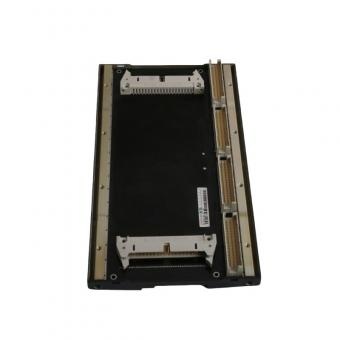 BS204
BS204
The Bachmann BS204 is a 4-slot backplane used in automation systems, typically as part of the Bachmann M1 controller series. The backplane is designed to provide a stable and efficient connection for the various input/output (I/O) modules, communication modules, and processor units in a modular system. Below are some of the key features and specifications: Key Features: 4-Slot Configuration: Supports up to four Bachmann modules, providing flexibility in terms of system expansion. High Reliability: Designed for industrial environments with robust construction to ensure long-term operation in harsh conditions. Modular System: Allows for easy swapping or addition of modules without significant downtime or system modifications. Backplane Bus: Provides power and data connectivity to all installed modules, ensuring smooth communication between them. Technical Specifications: Slots: 4 slots for I/O modules, communication, or processor modules. Compatibility: Compatible with the M1 controller system from Bachmann. Operating Temperature: Typically designed to operate in industrial temperature ranges (e.g., -20°C to +60°C, but specific data may vary). Dimensions: Compact design for easy installation in control cabinets (exact dimensions may vary depending on the model). Power Supply: Usually provided through a dedicated power module attached to the backplane. Applications: Used in automation systems for various industries, including manufacturing, energy, and transportation. Suitable for small- to medium-scale automation setups requiring flexibility and scalability.
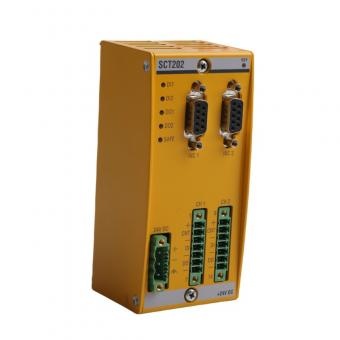 SCT202
SCT202
The SCT202 is a safety module designed for measuring safety-related rotations, supporting safety applications up to SIL2 and PLd. It offers the following I/O capabilities: Safety Input Blocks: Two blocks for incremental interfaces, connectable with symmetrical A/B/N tracks. The measurement results can be accessed both as frequency and counter status. Two blocks that can be used as counter inputs (for connecting initiators) or for latch and referencing inputs. Safety Digital Inputs: Two digital inputs that can serve as latch or referencing inputs. Safety Digital Outputs: Two digital outputs that function as safety short response shutdown contacts, ideal for overspeed detection with a reaction time of ≤ 1 ms.
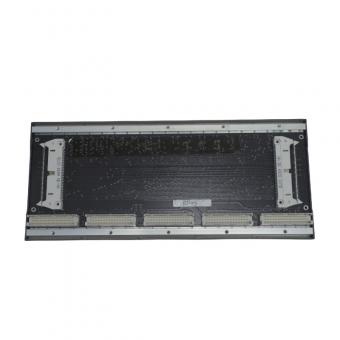 BS205
BS205
The Bachmann BS205 is a 5-slot backplane designed for use in the Bachmann M1 automation system. It serves as the central platform for connecting multiple modules such as CPUs, I/O, and communication modules, providing a robust and scalable foundation for industrial automation applications. Key Features: 5-Slot Configuration: Supports up to five Bachmann modules, offering flexibility for system expansion and integration of additional control, I/O, and communication modules. Modular Design: Part of the Bachmann M1 automation system, the BS205 allows seamless integration with various processor, communication, and I/O modules, ensuring modularity and scalability. Efficient Bus Communication: The backplane handles the internal data and power distribution for the connected modules, ensuring efficient and reliable communication between the components. Power Supply via Backplane: Power is supplied to all connected modules through the backplane, eliminating the need for separate power wiring for each module. High Durability and Industrial-grade Construction: Designed to withstand harsh industrial environments, the backplane is built for durability, ensuring stable operation even in challenging conditions such as high vibration, temperature variations, or dust exposure. Compact and Space-saving: The 5-slot design makes it compact and suitable for control cabinets where space optimization is crucial. LED Indicators for Status Monitoring: The backplane may include LED indicators for system status, providing quick visual feedback about the overall system health and connections. Technical Specifications: Number of Slots: 5 Compatible Modules: Supports the entire range of Bachmann M1 system modules, including processors, communication interfaces, I/O modules, and power supplies. Operating Temperature: Suitable for industrial temperatures (e.g., -20°C to +60°C, though exact ranges may vary based on installation). Power Supply: Power is distributed through the backplane to all connected modules. Dimensions: Compact form factor for easy installation in automation control cabinets (specific dimensions depend on the model). Applications: Industrial Automation: Used in various industries like manufacturing, energy, and transportation to create scalable automation systems. Process Control: Ideal for applications requiring real-time control, signal processing, and data acquisition in large or small systems. Machine Building: Suitable for complex machinery requiring modular and flexible control systems. The BS205 backplane is essential for building expandable and highly reliable automation systems, providing the core infrastructure for connecting and powering various modules.
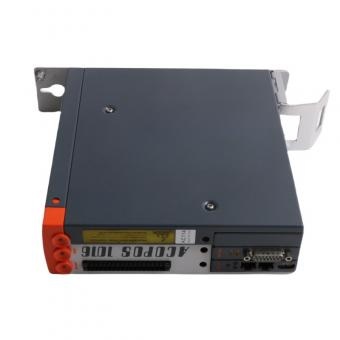 8V1016.00-2
8V1016.00-2
The 8V1016.00-2 ACOPOS Servo Drive is used for precise control of servo motors in automation systems. It provides high-performance control for applications requiring accurate motion and positioning. Description: The ACOPOS servo drive features a modular mechanical design with plug-in modules, including an integrated line filter, braking resistor, and electronic restart inhibit. It operates at 3x 400-480 V, 1.6 A, and 0.7 kW, combining these functionalities into a single unit. 1.B&R ID Code: 0x18D5 2.Slots for Plug-In Modules: 3 3.Certifications: ■CE: Yes ■UKCA: Yes ■Functional Safety: Yes ■UL/cULus: E225616 ■KC: Yes
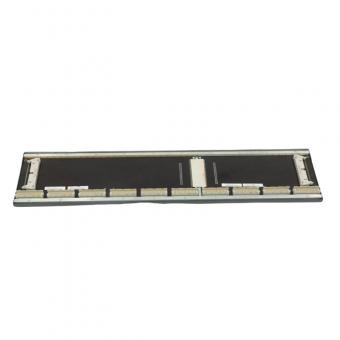 BS210
BS210
1.The BACHMANN BS210 is a backplane designed to interconnect hardware modules in the M1 controller system. It supports up to 10 module slots, providing both mechanical and electrical connections for modules such as power supplies, CPUs, and I/O modules. 2. How many modules can the BS210 backplane support? The BS210 backplane has 10 module slots, allowing up to 10 modules to be connected simultaneously, ensuring seamless integration of various components in the M1 controller system. 3. What type of modules can be connected to the BS210? The BS210 supports various M1 controller modules, including: Power supply modules CPU modules Input/output (I/O) modules These modules are connected to the backplane to form a complete control system.
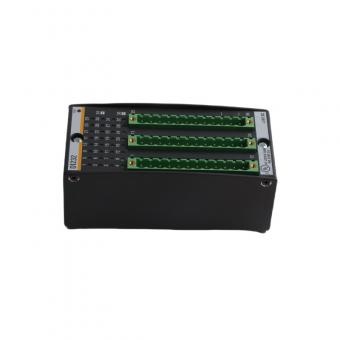 DI232
DI232
The DI232 module is used to connect up to 32 digital sensors to the M1 controller. It allows for the digital input of signals from various sensors into the control system. The digital input modules DI216, DI232, DI232 CC, and DI232/np1 are designed to connect up to 16 or 32 digital sensors to the M1 controller. They feature: 16 or 32 digital inputs Current sinking logic with > 2 mA according to EN 61132 type 1 Nominal input voltage of 24 VDC (range: 18 to 34 VDC) Configurable interrupt inputs on channels 1 and 2 Galvanic isolation between inputs and the system LED status indicators for each channel Sink/source input capability (DI232/np1)

25 Years of Experience At Your Disposal

VALUE OF ITEMS IN-STOCK
PRODUCTS AVAILABLE
PACKAGES SHIPPED
SHIPPING TO
Our expert technicians in automation, electrical and MROcomponents are focused on making your business run asefficiently as possible,as quickly as possible.
 26/11
26/112025
 19/11
19/112025
 12/11
12/112025
 12/11
12/112025
 28/11
28/112025
 21/11
21/112025
 14/11
14/112025
 08/11
08/112025

32D floor, Guomao building, Hubin South Road, Siming District, Xiamen City, Fujian Province, China.


 IPv6 network supported
IPv6 network supported
Our hours
